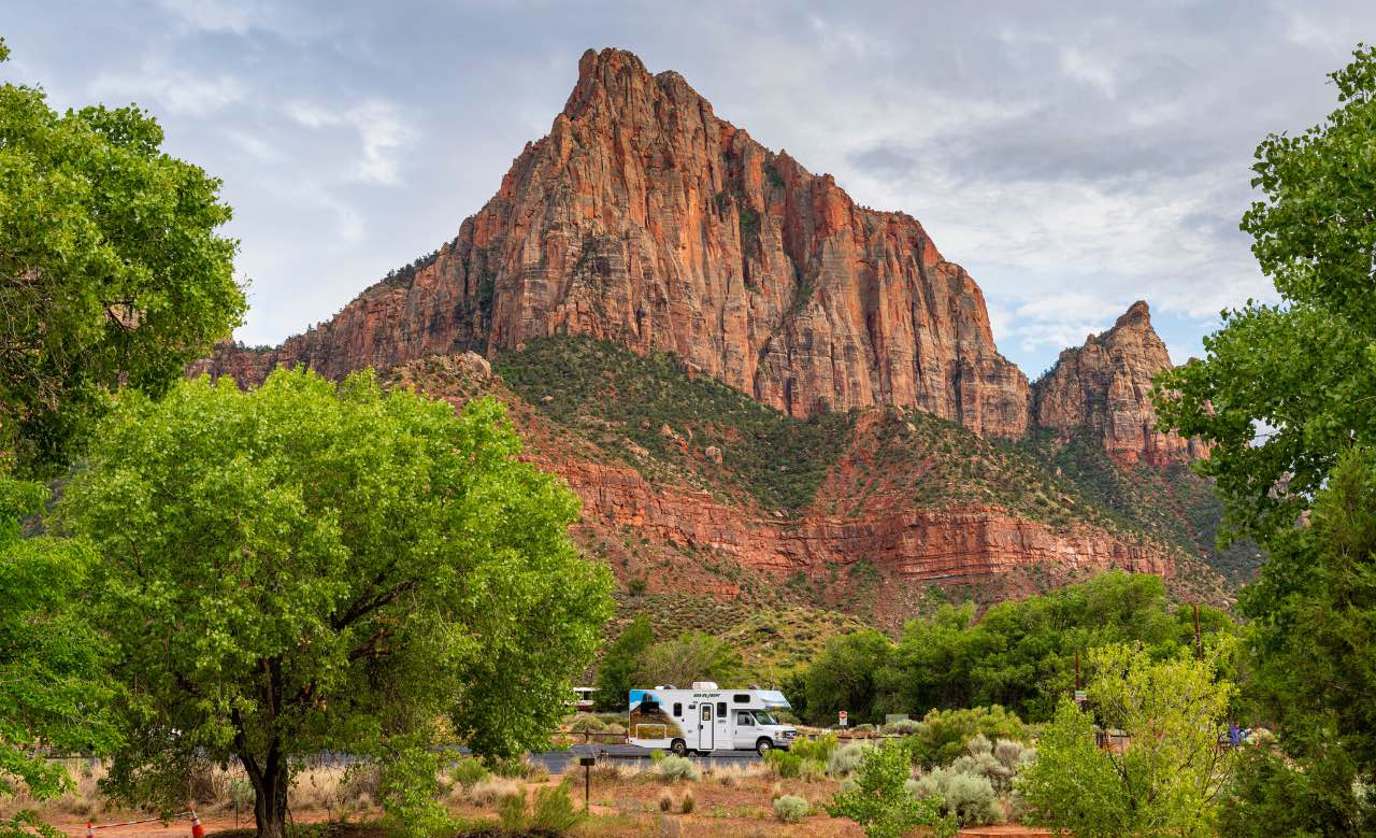

Guide to RV Size Limits for Popular National Parks
National Parks
You’re in the mood to hit the road and explore nature’s bountiful offerings. Traveling in a safe and comfortable RV is the way to go! Whether you own an RV or are looking to rent an RV for the road trip ahead, being familiar with national park RV length restrictions is important.
That’s why we compiled this list, featuring national park RV size limits for parks across the country. Before you roll up to the gate of a beautiful national park, get familiar with these national park RV restrictions.
National park RV length restrictions
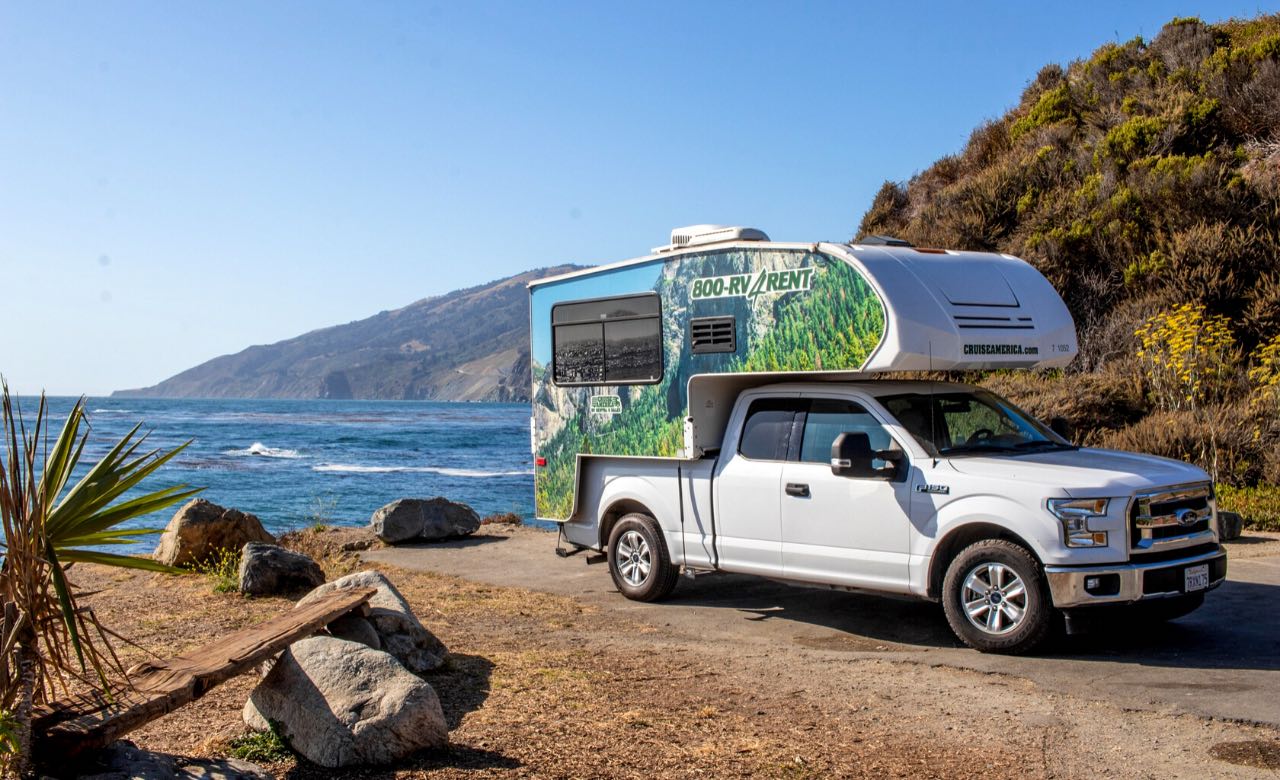
These numbers come from the most recent National Park Service information available. They are subject to change based on weather conditions and availability, so make sure that you call ahead to inquire about spaces that will fit your RV.
As a bonus, we sprinkled links to extra information about some of the glorious national parks. If you want to learn more about a park, things to do there, and the best times to go, click the links throughout this piece!
Acadia National Park
- Psst. Here is our guide to RV Camping in Acadia National Park .
Arches National Park
- Check out this guide to RV Camping in Arches National Park .
Badlands National Park
- 40 feet, 18 feet at Sage Creek Campground
Banff National Park
- Oh, Canada! Trailblazing across Calgary has never been easier thanks to this RV guide .
Big Bend National Park
- Learn more about RV Camping in Big Bend National Park .
Canyonlands National Park
- If you’re headed to Canyonlands, you’ll be near these Instagram-worthy Utah locations .
Cuyahoga Valley National Park
- No RV camping inside the park.
Death Valley National Park
Denali National Park
Everglade National Park
Glacier National Park
- 25 - 45 feet, depending on the campground
- This breathtaking park has so much to offer. Learn how to make the most of your trip with our guide to RV camping at Glacier National Park .
Grand Canyon National Park
- 50 feet at South Rim 22 feet at North Rim
- A natural wonder of the world awaits. RV camping in Grand Canyon National Park is truly unforgettable.
Grand Teton National Park
- 30 - 45 feet, depending on the campground
- Here are some insider tips for visiting Grand Teton National Park .
Great Basin National Park
- Want to know the best time to visit? Check out this guide to Great Basin National Park .
Guadalupe Mountains National Park
- 23 - 35 feet, depending on the campground
- Escape to the western edge of Texas! Learn about the great mountain range in Guadalupe Mountain National Park .
Jasper National Park
- 25 - 27 feet for most campgrounds. Some campgrounds accommodate up to 35 feet.
Joshua Tree National Park
- 35 feet for most campgrounds. Some campsites accommodate up to 42 feet.
- Here’s what you need to know about RV camping in Joshua Tree National Park .
Kings Canyon National Park
- Varies by the campground. The maximum length for many roads is 22 feet.
Lassen Volcanic National Park
- 35 - 40 feet
- Before you hit the road, learn about the Lassen Volcanic National Park .
Mesa Verde National Park
Mount Rainier National Park
- 27 - 35 feet
Olympic National Park
- 21 feet. Limited spaces are available for 35 feet long RVs.
- Pining for the Pacific Northwest? Here’s a breakdown of the best Olympic National Park RV parks and campgrounds .
Redwood National Park
- 24 - 28 feet, depending on the campground.
- Set out to the enchanting forests of the Redwood National Park !
Rocky Mountain National Park
- 24 - 31 feet, depending on the campground
- Hello, adventure seeker! Get your guide to RV Camping in Rocky Mountain National Park here.
Sequoia National Park
- 42 feet in Lodgepole Campground, any length in Dorst Creek Campground.
- Lace up you boots, and get ready to travel the southern region of the Sierra Nevada mountain range! Check out this guide to Sequoia National Park .
Shenandoah National Park
Theodore Roosevelt National Park
- Whether you're a historian or adventurer, check out this guide to the Theodore Roosevelt National Park .
Yellowstone National Park
- Varies by the campground. The average is 40 feet. Ranges from 25 - 50 feet
- Want more details about the oldest national park in the U.S.? Learn about the camping options in Yellowstone here.
Yosemite National Park
- A popular park for a good reason, Yosemite is a beautiful RV camping destination .
Zion National Park
- 19 feet at Lava Point Campground; 40 feet in other areas.
- From information on the weather to popular campgrounds to best times to visit, this guide to RV camping near Zion National Park has everything you need to prepare.
Visit the national park with an RV
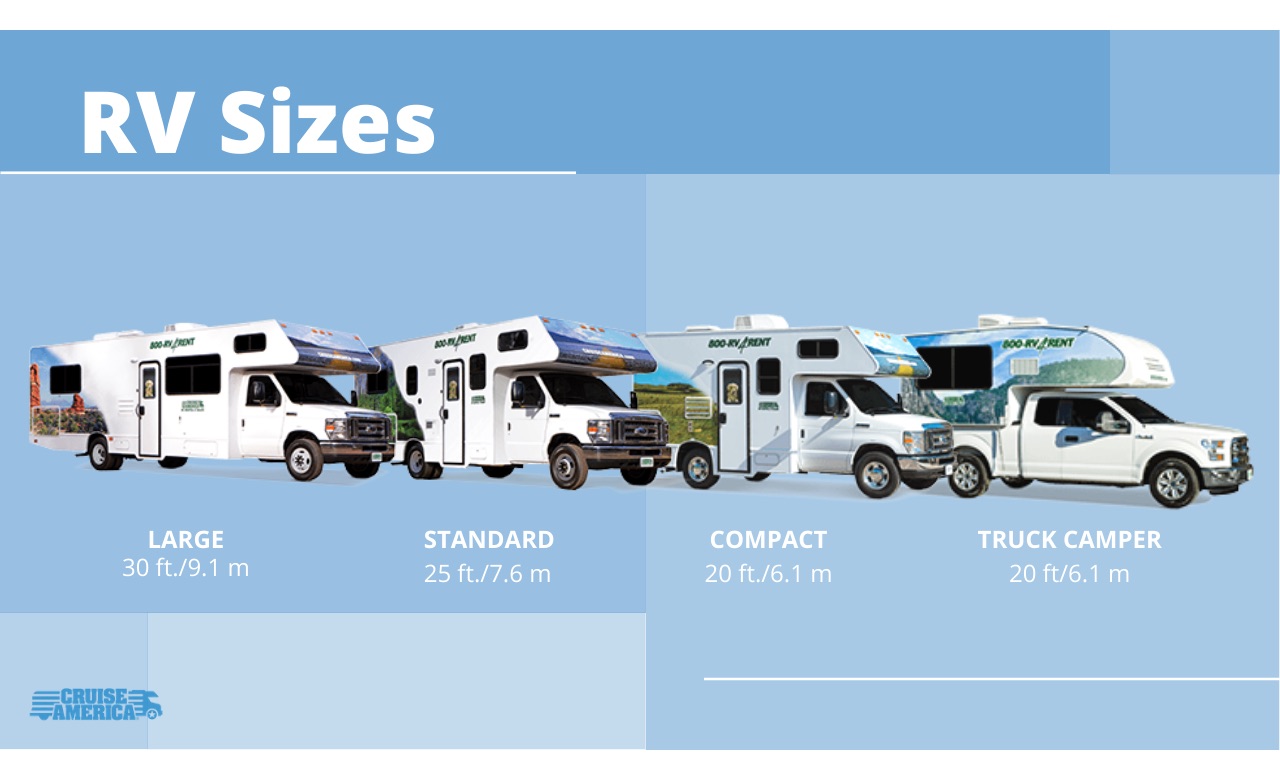
Thousands of people are finding adventure with Cruise America vehicles. Join in on the fun and rent an RV today !
Related Articles
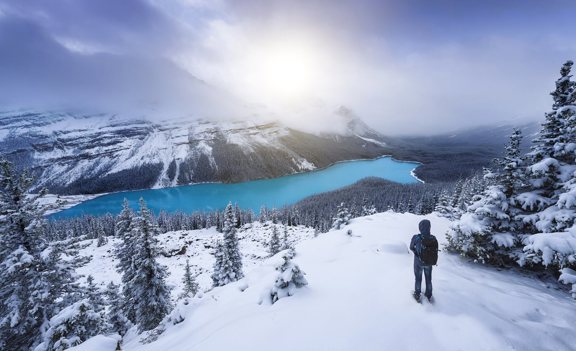
Best Earth Day Activities for Families and Kids
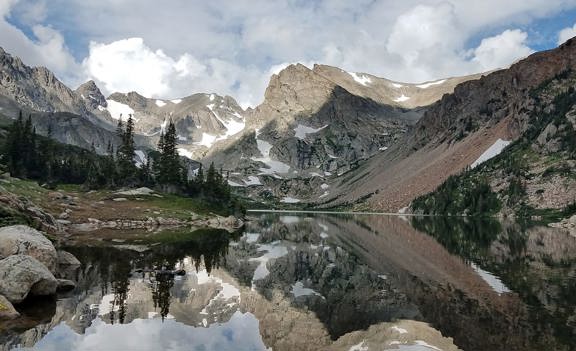
Why You Should Go RV Camping for Earth Day 2024
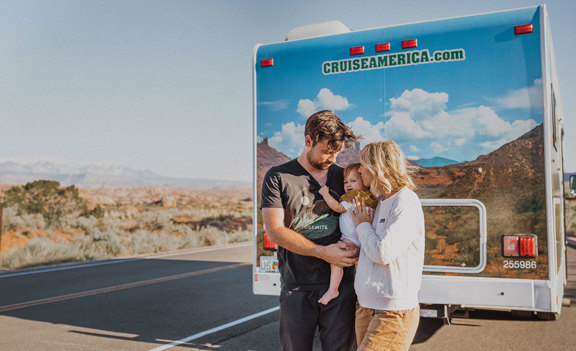
Adventure with a Loved One for Valentine’s Day | Cruise America
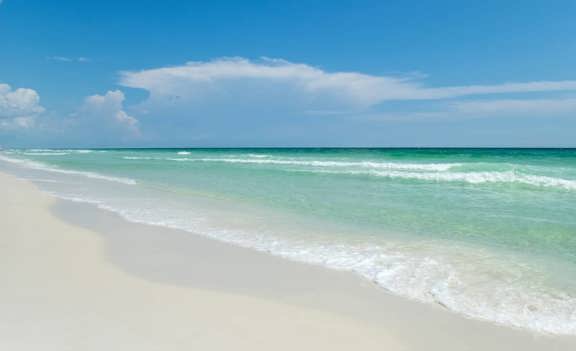
The Best Beaches for Spring Break (Party & Relaxed Locations)
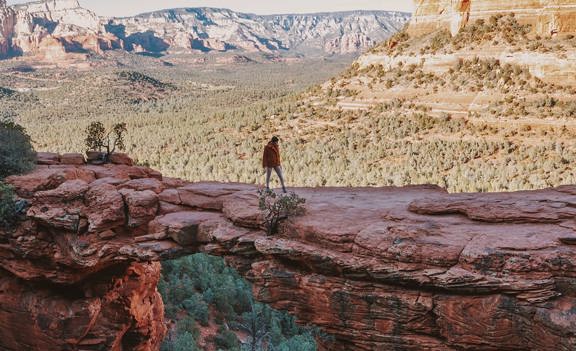
The 10 Best National Parks for Spring Break RV Trips

10 Instagram Worthy Spring Break Trips for College Students
Share this RV trip idea with friends & family

- Types Of RVs
- Tow Vehicles
- Maintenance & Repairs
- RV Power & Electrical Supplies
- RV Appliances
- Living In An RV
- Travel & Destinations
- RV Gear Buyer’s Guides
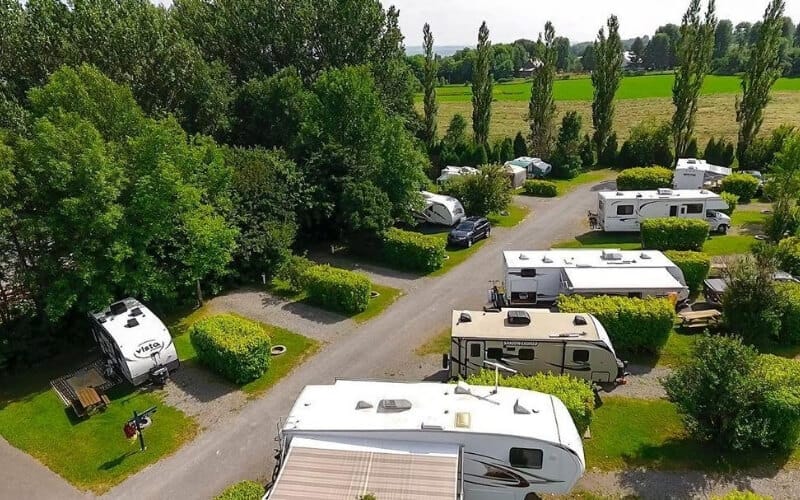
Maximum RV Sizes: What’s the maximum RV Length Limits For State And National Parks?
- Last Updated: February 25, 2024
- 8 minutes read
There are 62 National Parks in the U.S., and these natural paradises encompass a diverse range of climates, geological marvels, and historic monuments.
Traveling by RV is one of the best ways to visit the National Parks, since you can often stay within or very near the park in designated campgrounds.
According to KOA, about 40% of all RV campers stay in state or National Parks when camping, instead of private campgrounds.
However, not all National Parks allow RVs, and some have rough roads or lack the facilities to accommodate large motorhomes or long trailer campers.
What is the best RV Length for Fitting into National Parks?
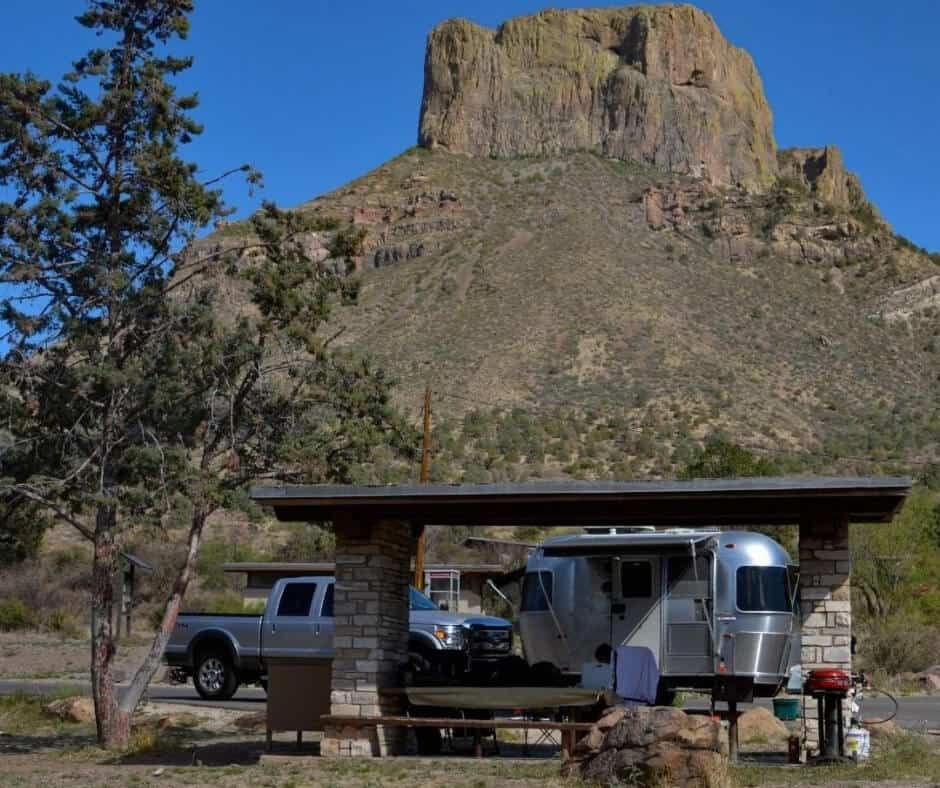
If you are traveling with a towed vehicle such as a trailer or fifth wheel, it’s important to keep in mind that the maximum length allowed in most National Parks includes the camper itself and the truck or SUV you’re towing it with.
Unless you’re traveling in a motorhome without a second vehicle, your trailer will need to be about 10 feet under the length restriction to fit in your campsite along with the towing vehicle.
In this article, I have compiled a list of the most popular National Parks (with links) to provide a look at each campground’s vehicle length limits at-a-glance.
You can also get an idea for whether there are hookups or a dump station available at the campgrounds, and know whether you’ll need a reservation for a campsite or if they are first come, first served (FCFS).
FAQs About RVs and Camping in the National Parks
When you’re considering camping in the National Parks with an RV or trailer, there are some common questions that you may be asking.
Are There Any State Regulations About RV Length I Should Know?
Although the National Parks are federally-operated property, they need to adhere to state guidelines and restrictions for the state in which the park itself is located.
Each state has its own regulations about the maximum allowable length of RVs. Keep in mind that some states refer to these vehicles differently, such as RV, motorhome, private motorcoach, house car, or even just ‘vehicle’.
Additionally, most states restrict the width of the vehicle to eight feet, including:
- New Hampshire
- Washington D.C.
Finally, you should keep your vehicle’s overall weight in mind as well. In some states, you’ll be required to have a Commercial Driver’s License (CDL) if your RV’s weight exceeds 26,000 pounds.
However, with the average length restriction in most National Parks being between 25 and 30 feet, you most likely will not surpass this weight and therefore you should be fine with a standard Driver’s License when operating your RV.
Do the National Parks Allow Class A RVs and Fifth Wheels?
In addition to length, it’s important to consider the type of RV you’re driving , since some models are larger (and longer) than others.
For example, Class A RVs are generally 30 feet or longer, and while they offer more luxury for living on the road full-time , they might not fit into many National Park campgrounds .
Fifth wheels are the largest towable trailer campers available, and are often longer and heavier than standard campers .
Additionally, you must consider the total length of the trailer and your towing vehicle to fall within the length restrictions of states and National Park campgrounds, which might make an RV (with inclusive driving cab) preferable.
Keep in mind that many National Parks can accommodate RVs and trailers (with towing vehicles) up to 40 feet in total length, but there are also several where the length restrictions are much shorter (around 20 feet).
So, for ease of getting around and camping in the National Parks, smaller is better and you’ll be safer staying away from Class A motorhomes and fifth wheel campers.
what is the maximum length of rv allowed in national parks?
While the general average length of RVs allowed in most National Parks is between 25 and 30 feet, the overall average maximum length according to the U.S. National Parks Travel Guide is 27 feet.
However, there are a lot of National Park campgrounds that can comfortably accommodate longer RVs – even ones that are more than 40 feet long.
Always remember that for trailers, the total length must include the trailer itself and the truck or SUV that you’re towing it with.
Campground RV Length Restrictions In The National Parks
Most National Parks that have campgrounds allow RVs and campers, but some are tent-only.
The following guide lists only those campgrounds in the National Parks that allow RVs and trailers.
However, there are often private campgrounds near the National Parks that can accommodate RVs and sometimes have more amenities (i.e. full hookups ) if you are looking for a more comfortable, fully-equipped stay near the National Parks.
1. Acadia National Park (Maine)
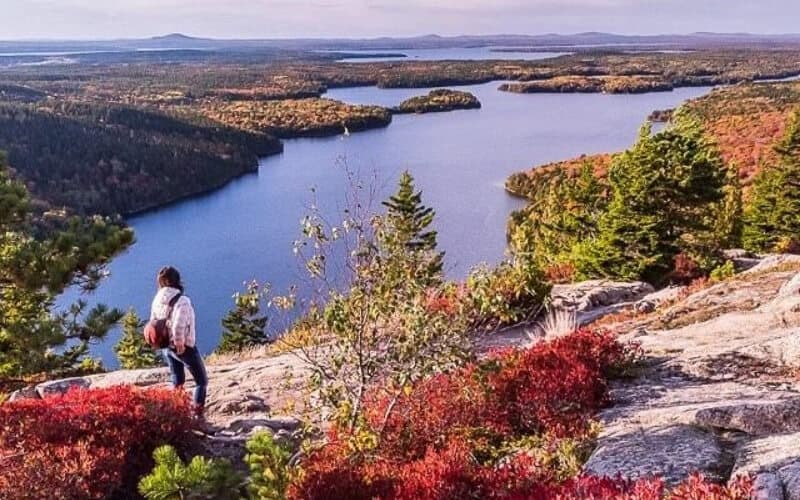
2. Arches National Park (Utah)
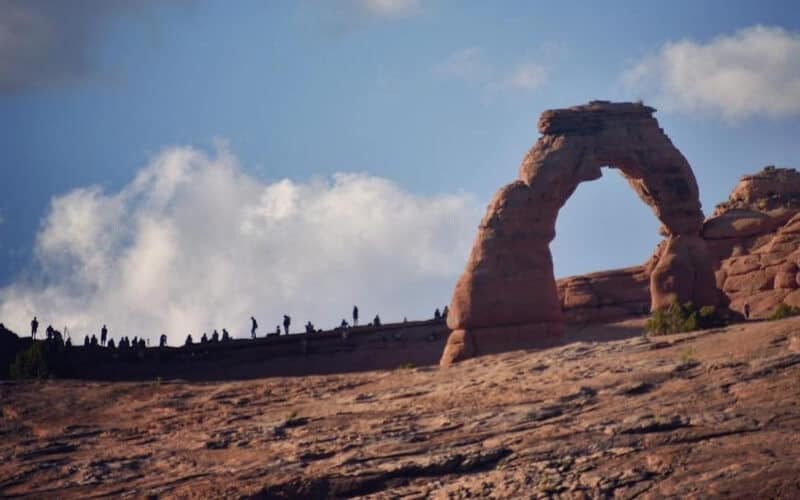
3. Badlands National Park (South Dakota)
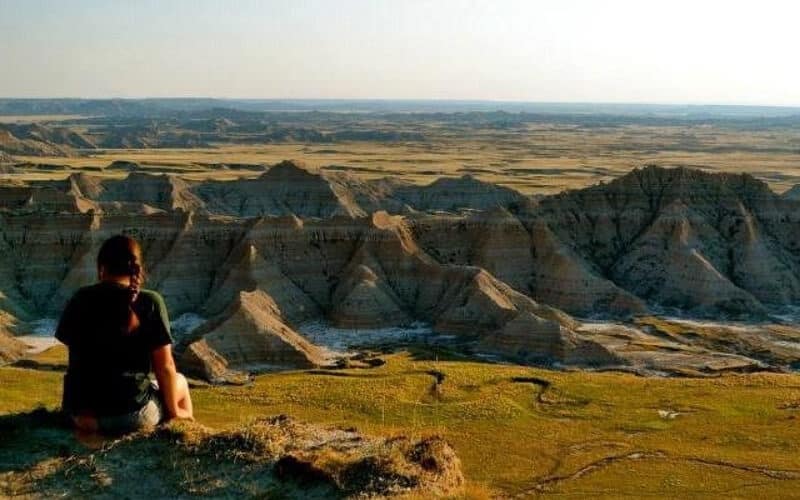
4. Big Bend National Park (Texas)
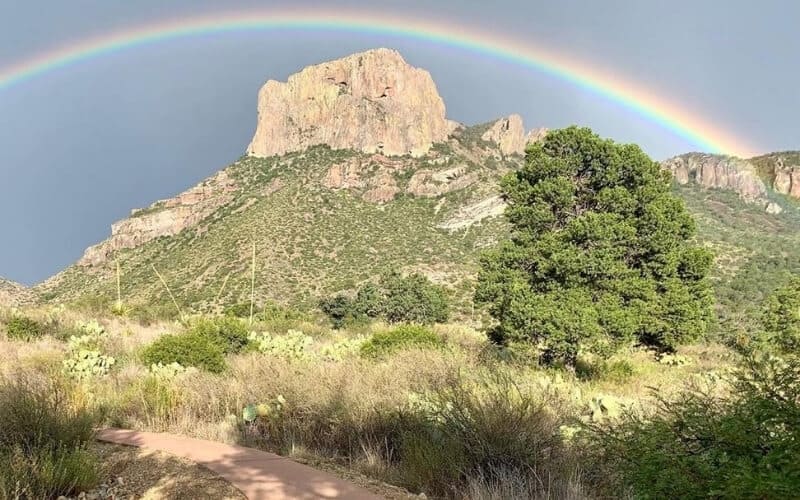
5. Black Canyon Of The Gunnison (Colorado)
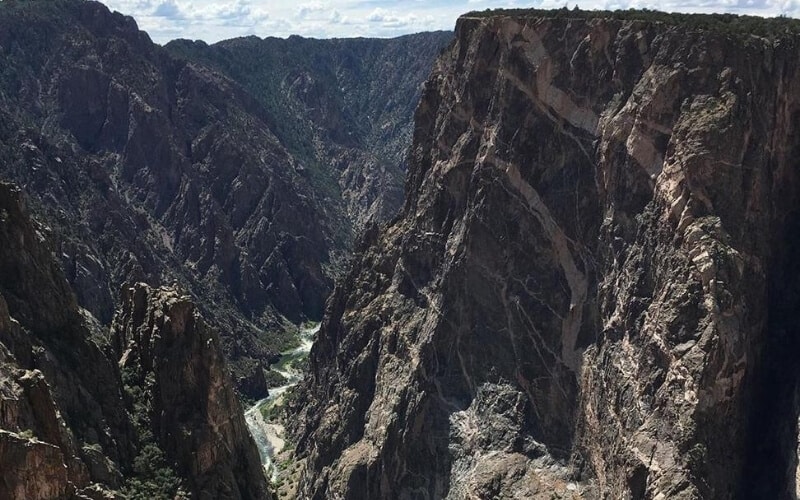
6. Bryce Canyon National Park (Utah)
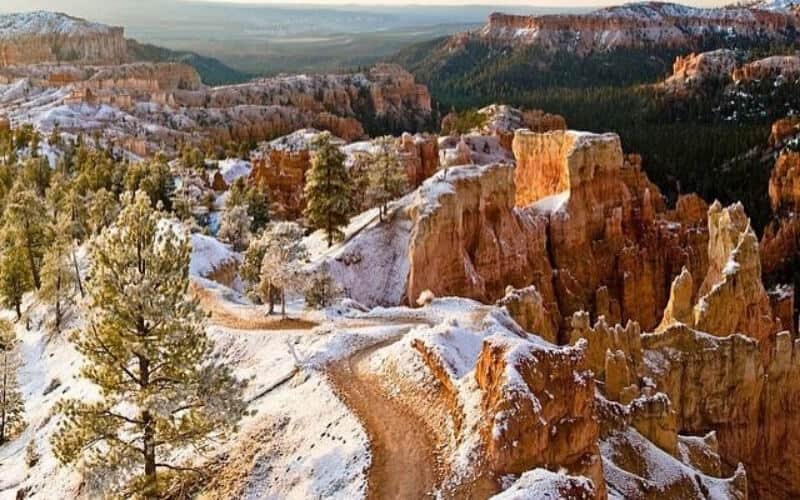
7. Canyonlands National Park (Utah)
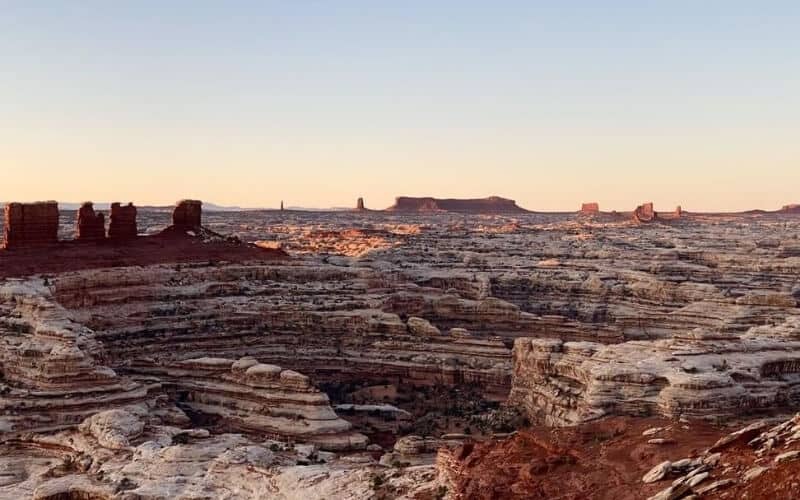
8. Capitol Reef National Park (Utah)
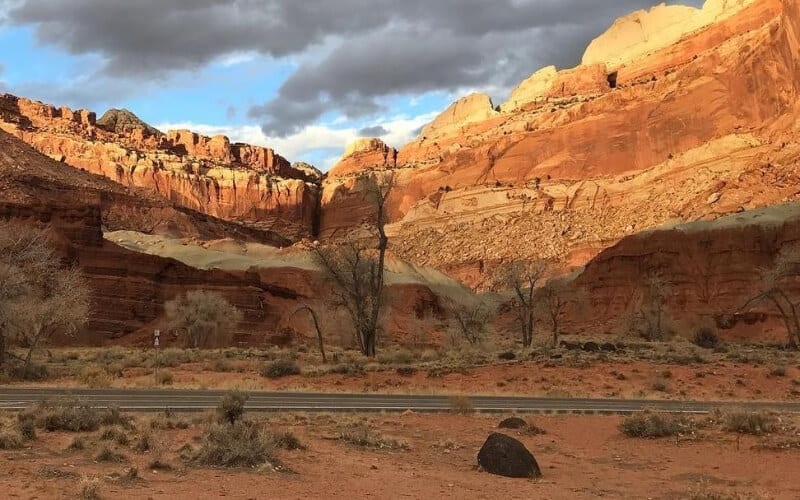
9. Chaco Culture National Historical Park (New Mexico)
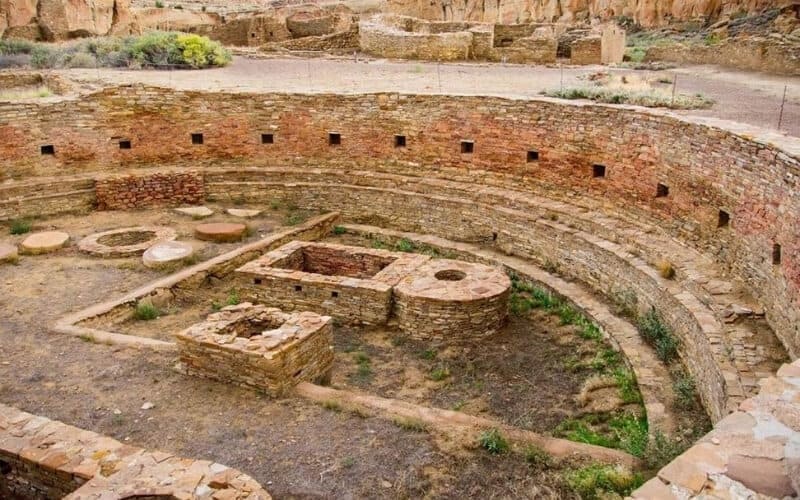
10. Crater Lake National Park (Oregon)
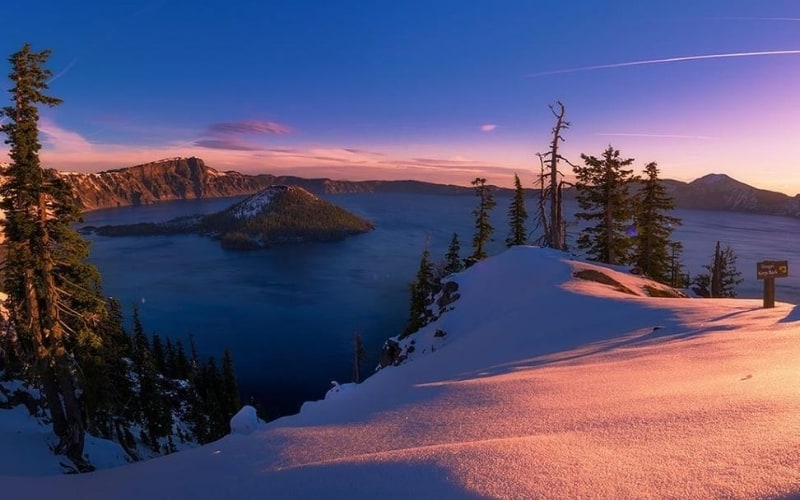
11. Death Valley National Park (California)
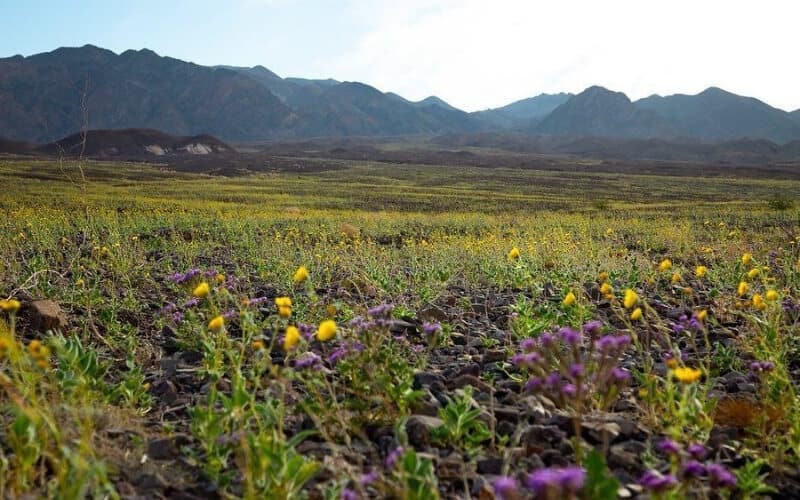
12. Denali National Park (Alaska)
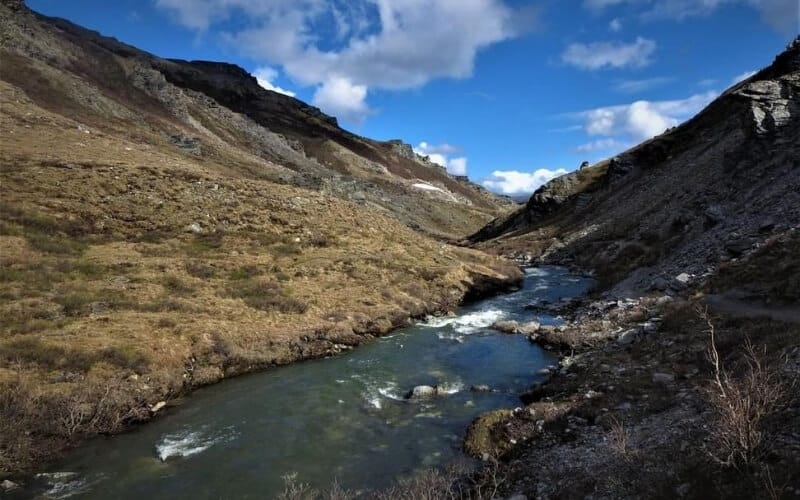
13. Everglades National Park (Florida)
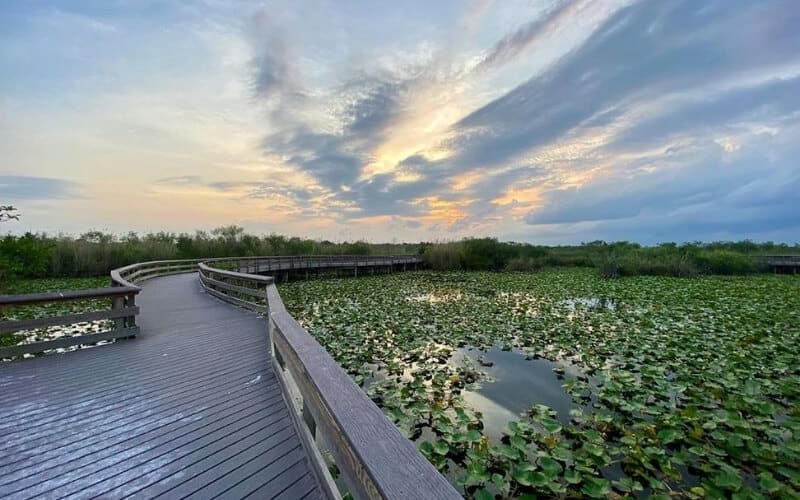
14. Glacier National Park (Montana)
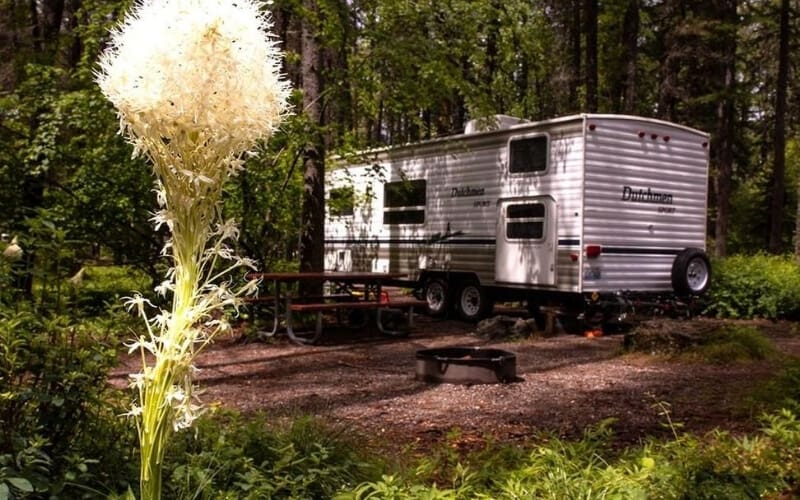
15. Grand Canyon National Park (Arizona)
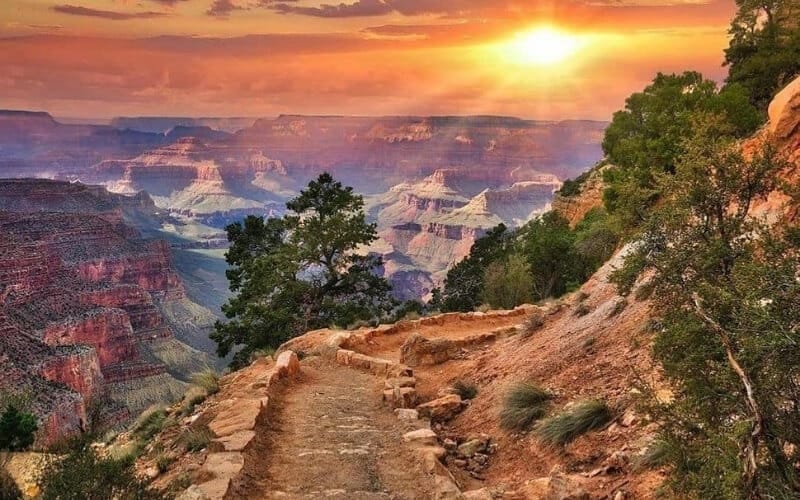
16. Grand Teton National Park (Wyoming)
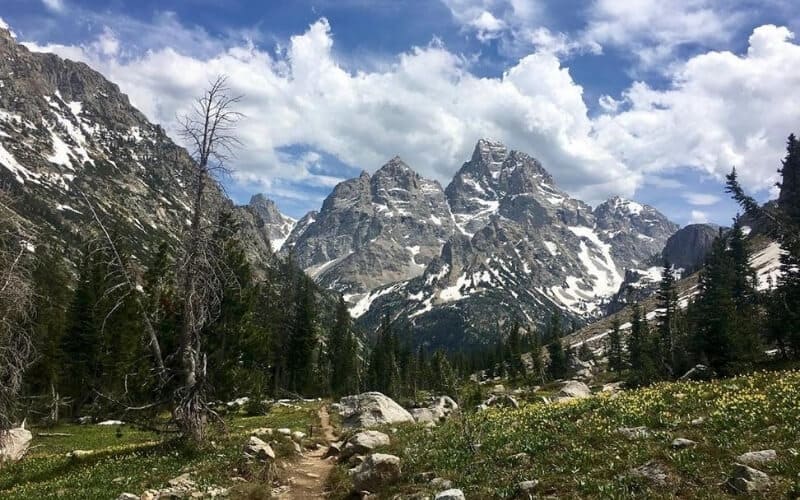
17. Great Sand Dunes National Park (Colorado)
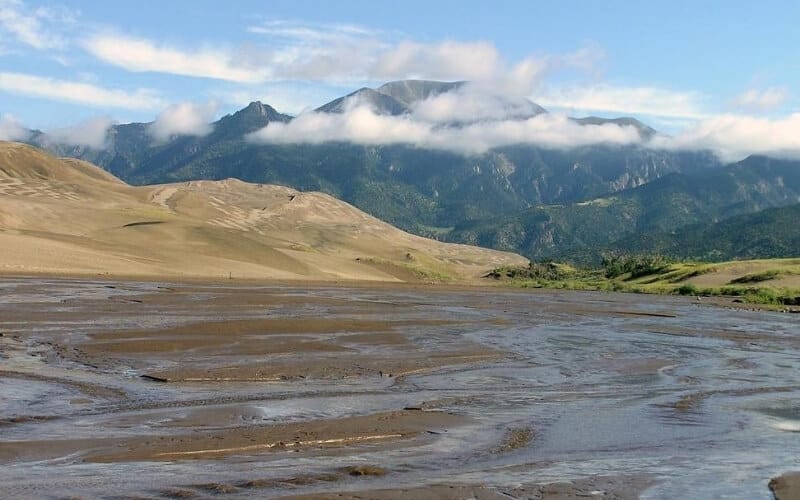
18. Great Smoky Mountains National Park (North Carolina & Tennessee)
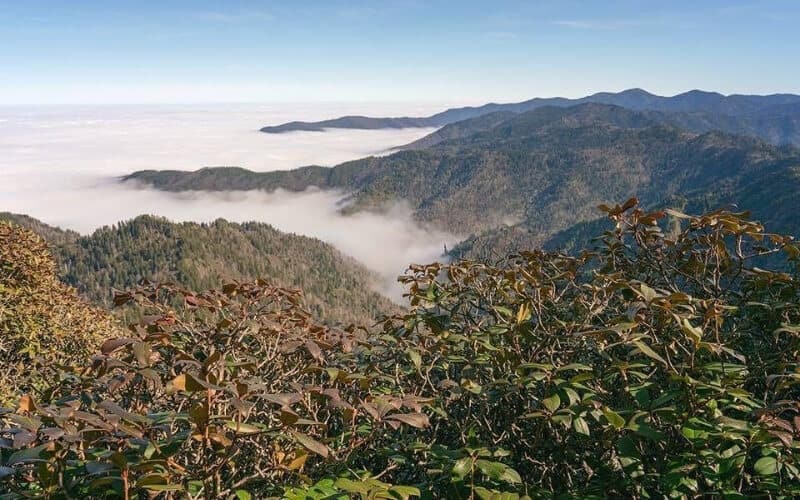
19. Guadalupe Mountains National Park (Texas)
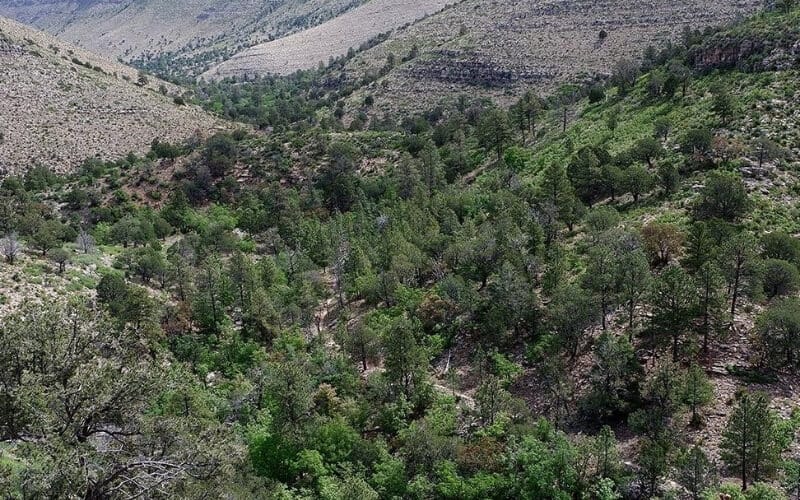
20. Hot Springs National Park (Arkansas)
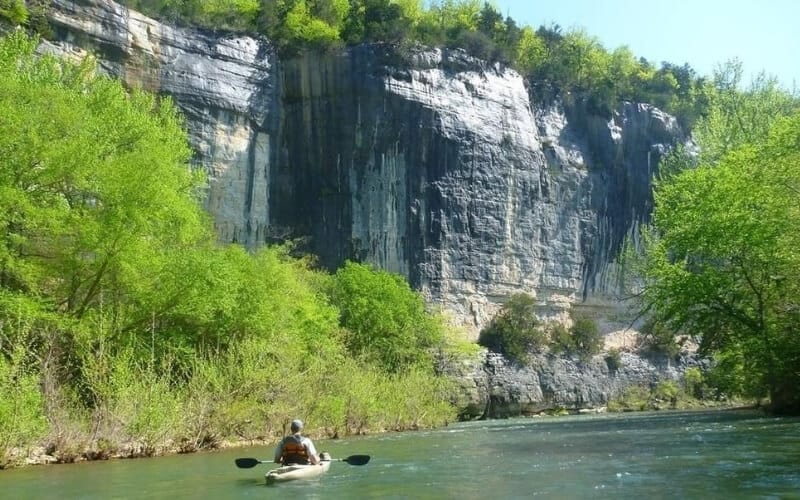
21. Indiana Dunes National Park (Indiana)
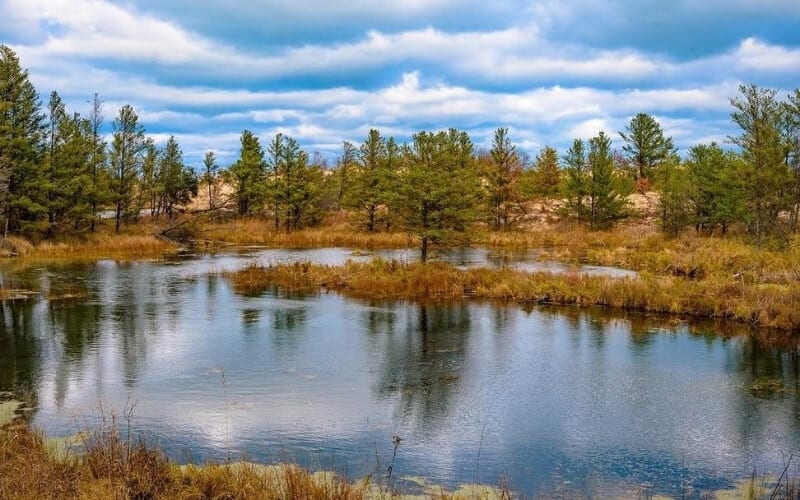
22. Joshua Tree National Park (California)
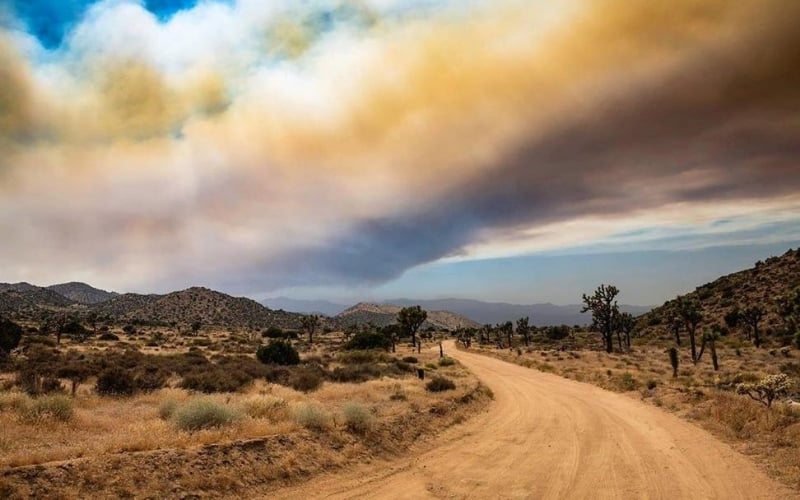
23. Sequoia & Kings Canyon National Park (California)
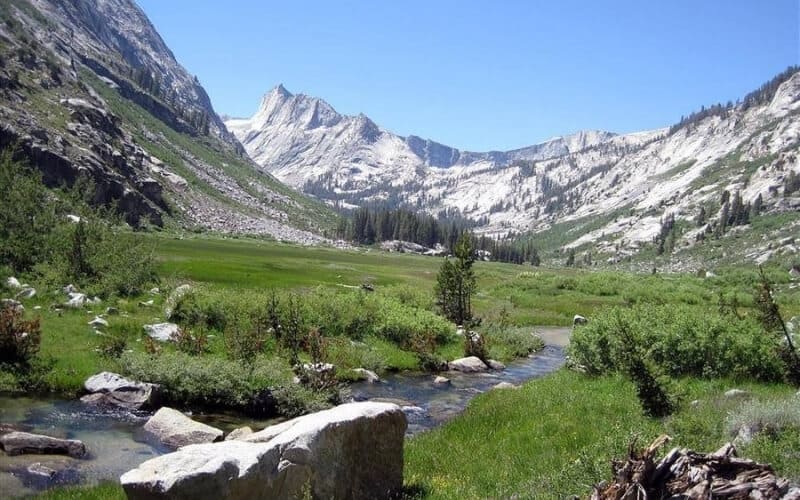
24. Lassen Volcanic National Park (California)
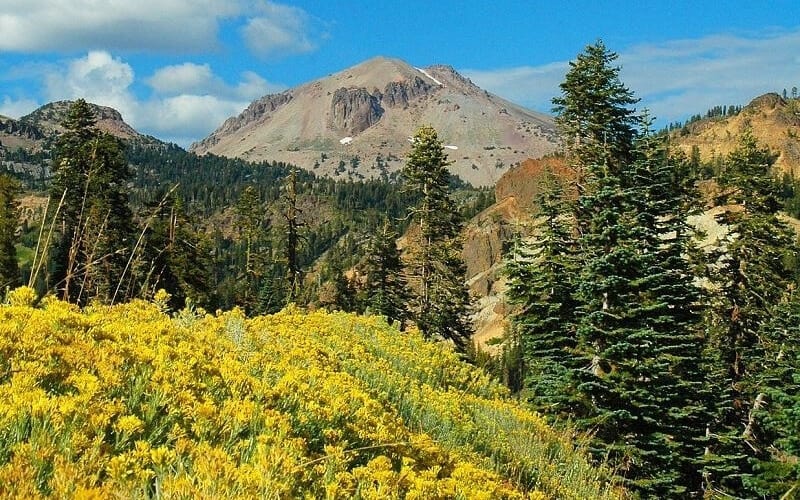
25. Mammoth Cave National Park (Kentucky)
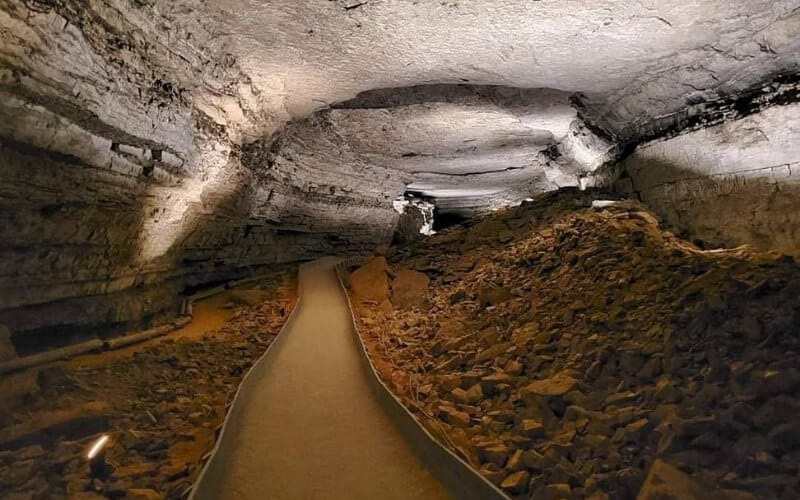
26. Mesa Verde National Park (Colorado)
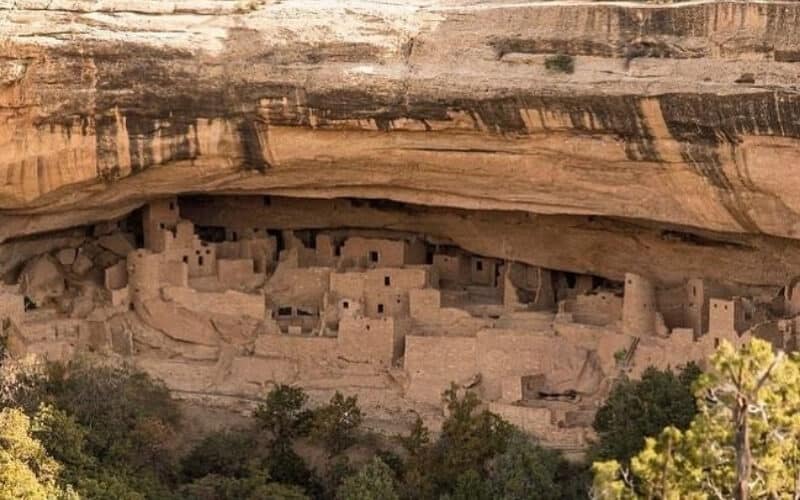
27. Mount Rainier National Park (Washington)

28. North Cascades National Park (Washington)
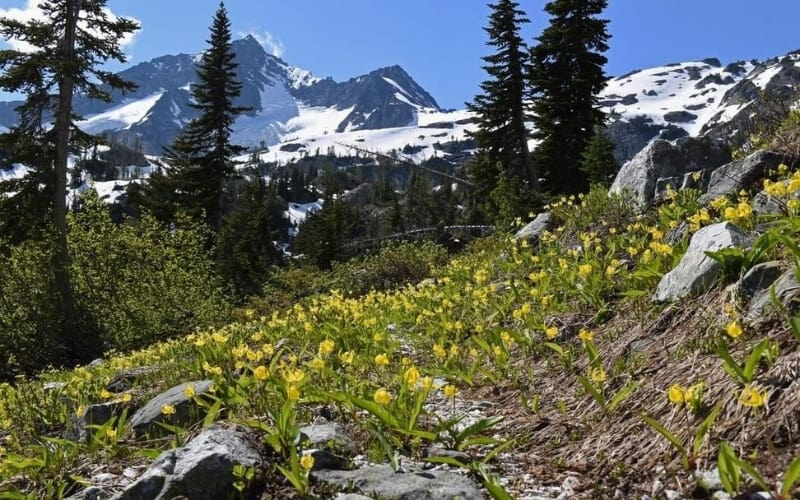
29. Olympic National Park (Washington)
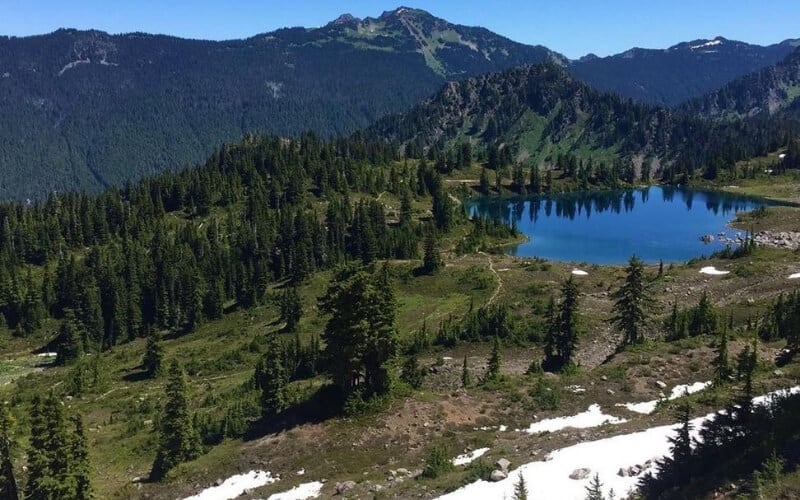
30. Pinnacles National Park (California)
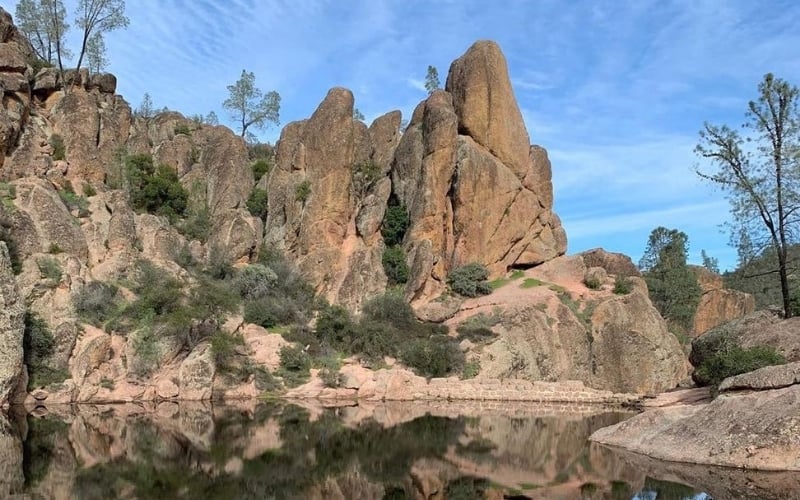
31. Rocky Mountain National Park (Colorado)
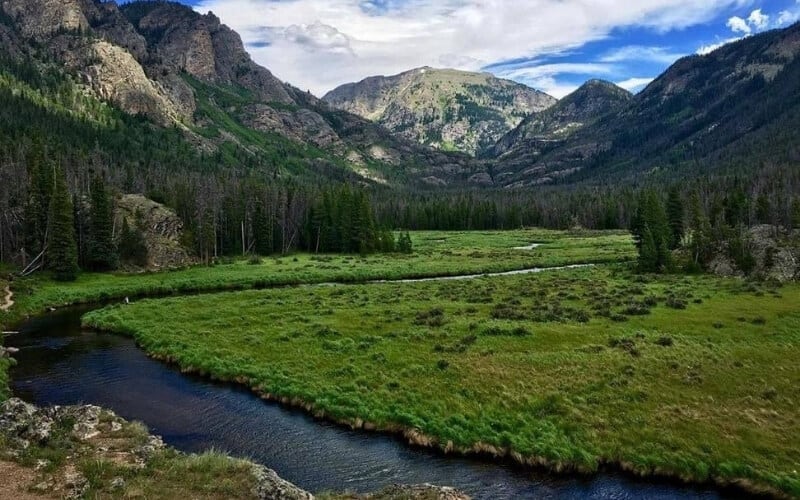
32. Shenandoah National Park (Virginia)
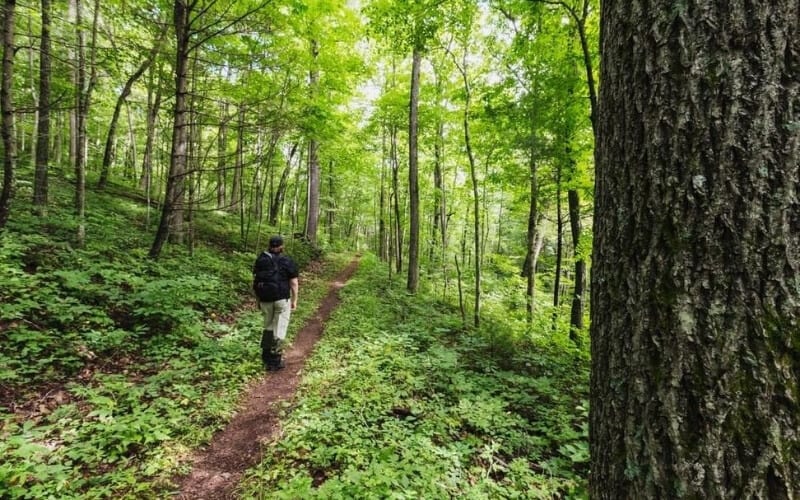
33. Theodore Roosevelt National Park (North Dakota)
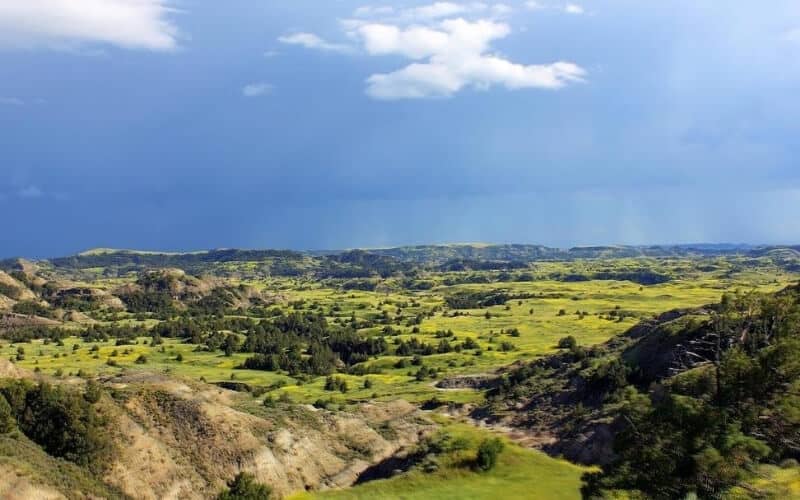
34. Wind Cave National Park (South Dakota)
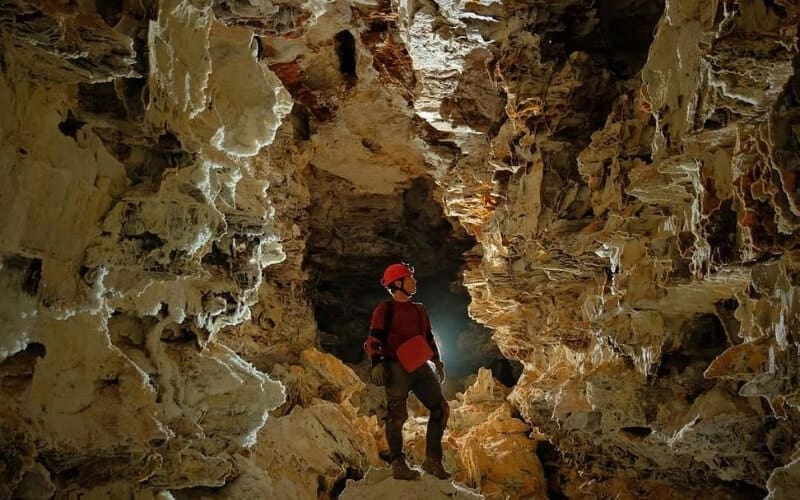
35. Yellowstone National Park (Wyoming)
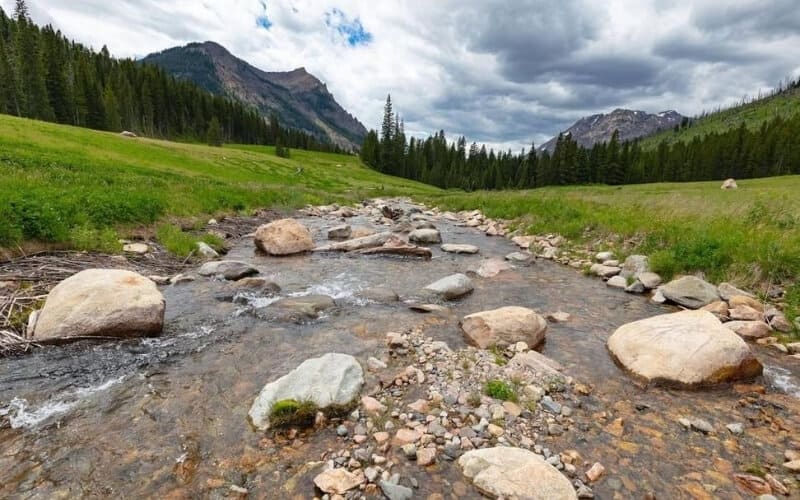
36. Yosemite National Park (California)
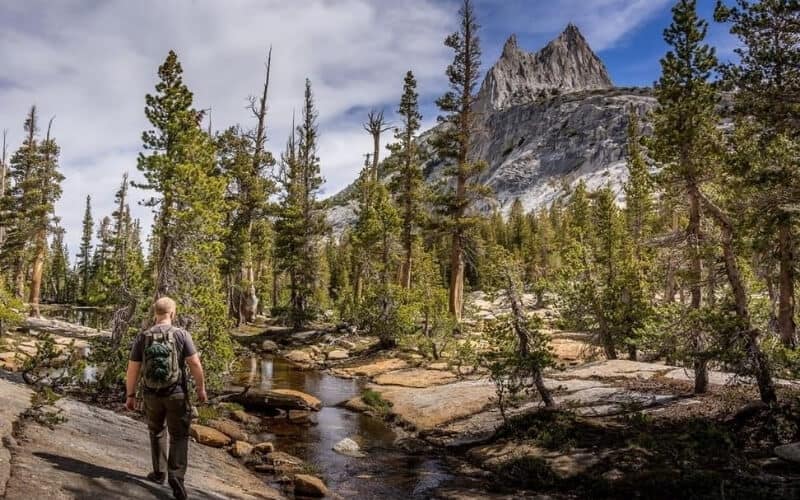
37. Zion National Park (Utah)
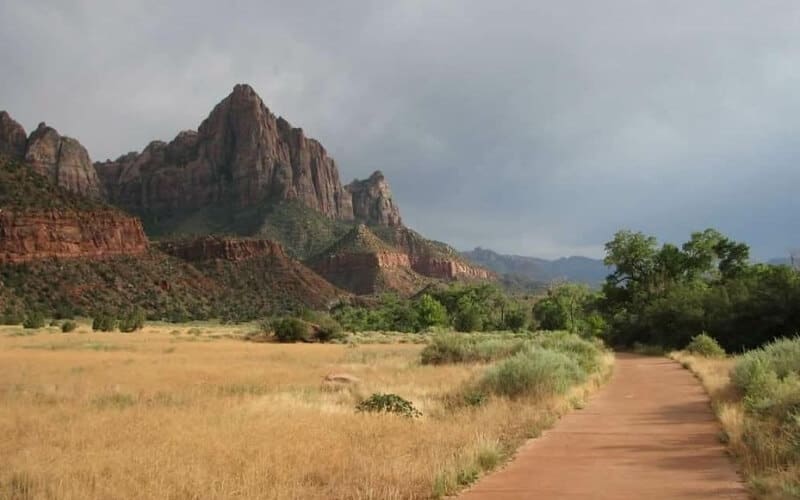
How to Find the Maximum Length for RVs at National Parks
While this article and the tables included here should help provide estimates of the maximum length of RVs and campers allowed in each National Park campground listed, you should always double check with the campground before making your reservation.
Sometimes, the camper length limit posted on the National Park’s website may be inaccurate, or sites that accommodate longer RVs might not be available.
Your best bet to ensure your RV can fit in your campsite is to call the park and speak directly with a ranger or staff member who can confirm the details of your campsite.
Additionally, even if there is an RV length limit, sometimes there will be sites that can accommodate and allow for longer RVs and campers.
The park ranger can also tell you about other information that might not be posted on the website, such as if the campground facilities will be unavailable during your trip due to renovations or repairs, or if they’ve recently added hookups to some sites that didn’t previously have them.
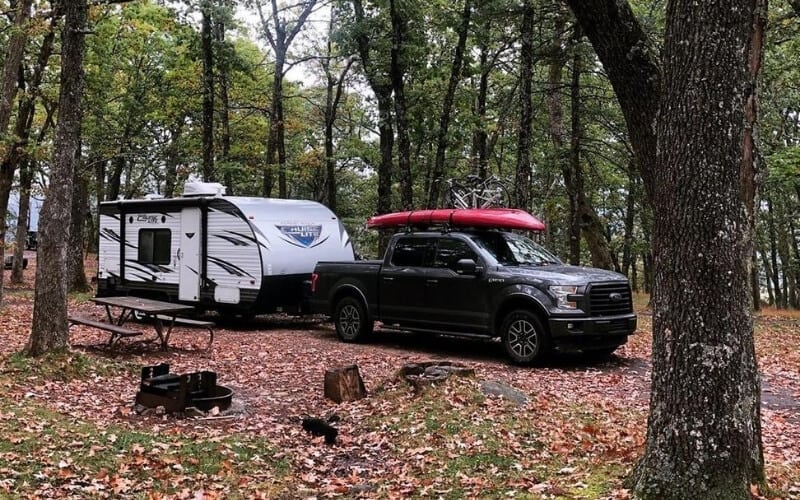
How to Measure Your RV or Trailer for National Park Campgrounds
Once you know the length limits for the National Park campground you intend to visit, it’s time to measure your camper to make sure that it will fit.
Start by referring to your owner’s manual or the RV manufacturer’s website to find the stated length.
This is usually bumper to bumper on an RV, or hitch to bumper on a trailer or fifth wheel.
Be sure to measure it yourself, though, especially if you have added storage boxes or other gear that you have loaded on to either end of your vehicle.
It’s also a good rule of thumb to add a foot or two to your size just in case, to make sure you’ll have plenty of room to maneuver in your campsite.
However, if you have a longer camper, you might not want to do this, since it could rank your vehicle outside of the limit in some campgrounds.
Amenities at National Park Campgrounds
As you’ll probably note from this guide, most National Park campgrounds don’t have hookups for water and electricity, and are dry-camping, only.
Others have bathroom facilities with flush toilets, but no showers. However, there are some campgrounds with everything including hookups, dump stations, restroom and shower facilities, and even a camp store where you can buy firewood, ice, and other camping necessities.
While it may be a bit of an inconvenience to camp without hookups, keep in mind that the whole point of the National Parks is to maintain the natural, rugged beauty of our park spaces.
By digging up the camp areas to provide sewer, water and electrical hookups and facilities, the parks system would be counterproductive to that goal.
Like with the RV length limits, it always pays to call the park campground ahead of booking or arriving for your stay so that you can be fully prepared.
In addition, the campground may have sites with full hookups available later or earlier in the season, which are normally used by camp hosts that have left or haven’t arrived yet.
The park rangers can help you find the best spot for your needs, based on what’s actually available.
Summarizing RV Lengths for National Park Camping
Generally speaking, your RV or camper should be between 25 and 30 feet, maximum, to be sure you can fit into National Park campground sites and maneuver around the campground with ease.
However, some National Parks can accommodate longer or larger RVs and campers, but campsites for bigger vehicles may be limited or unavailable.
It’s important to call the park before you book your site to make sure you’ll fit and still have plenty of room to enjoy your campsite.
About Author / Aaron Richardson
Aaron Richardson is an expert RVer and the co-founder of RVing Know How. Aaron, along with his wife Evelyn, has been living and traveling in their Keystone Fuzion RV since 2017. Their adventures span across the country and beyond, including memorable RVing experiences in Mexico. Aaron's passion for the outdoors and RVing shines through in his writings, where he shares a blend of travel stories, practical tips, and insights to enhance the RV lifestyle.
![8 Best RV Travel Trailers for Full-Time RV Living Adventure in [currentyear] 2 Best Travel Trailer For Full-Time Living](https://www.rvingknowhow.com/wp-content/uploads/2021/10/Best-Travel-Trailer-For-Full-Time-Living--150x150.jpg)
8 Best RV Travel Trailers for Full-Time RV Living Adventure in 2024
How to increase low water pressure in an rv.
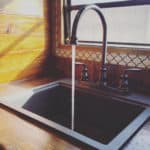
You Might Also Like
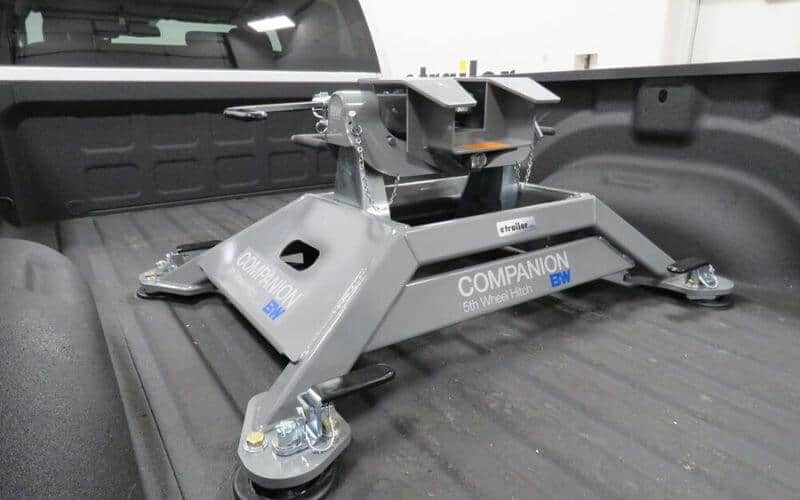
How Much Does It Cost To Install A 5th Wheel Hitch?
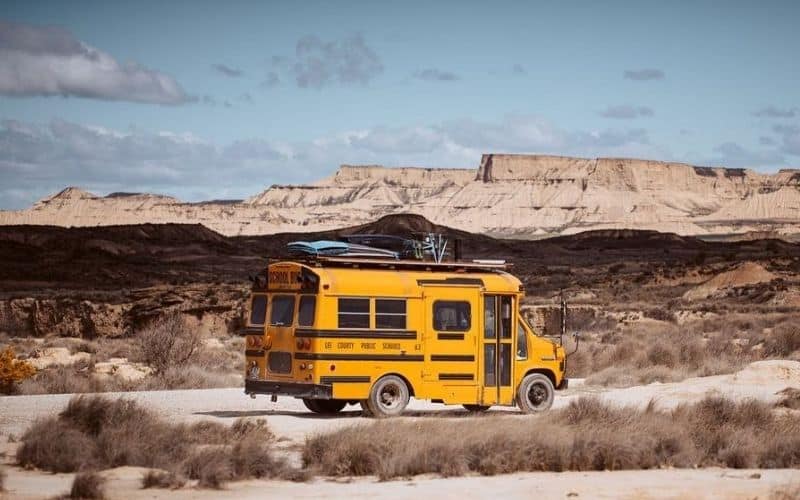
Reasons to Avoid Skoolies & Bus Conversions For Living On The Road
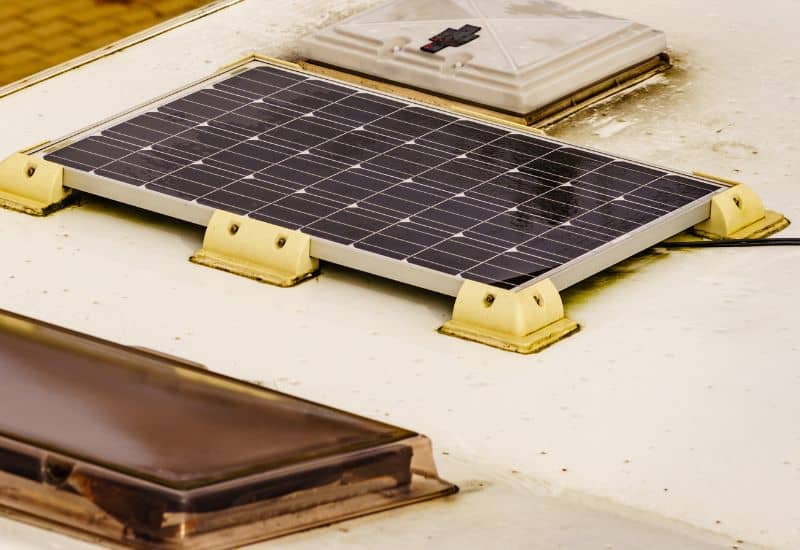
How to Mount Solar Panels on RV Roof Without Drilling Holes
Start typing and press Enter to search

This post may contain affiliate links or mention our own products, please check out our disclosure policy .
The Ideal Travel Trailer Lengths for National Parks
Published on July 24th, 2020 by Levi Henley (Full-Time RVer, Content Manager and Media Specialist for RV LIFE)
Camping in U.S national parks go together like peanut butter and jelly. Our national lands are on every RVers bucket list as soon as they catch the desire to purchase one. Yet some of today’s RVs can’t get past the entrance gates because they exceed the best RV lengths for national parks.
The longest RVs allowed in national parks are between 25-30 feet in total length.
We’ll explore the many reasons for this limit and why it’s not always true. You’ll learn the best strategy to land that most sought after campsite at the best national parks for RV camping and how to get the best deal. Our research led us to a controversial proposed modernization plan to update the national park campgrounds that’s worth discussion.
RV Measurements Further Explained

National park spaces range in size between 20-40 feet. Some parks have 30 feet spaces with a couple of 40 feet spaces. As you can imagine those “prime real estate” campsites fill up quickly. Mostly, you’ll run across 30-foot spaces.
DON’T MISS OUT ON CAMPER SMARTS UPDATES
Sign up for the newsletter today.
Please enter a valid email address.
An error occurred. Please try again later.
Thank you for subscribing to the Camper Smarts newsletter, keep your eye on your inbox for updates.
When they say 30 feet, they mean it. If you have a motorhome, a class C or small class A won’t be much of a problem. If you’re toading your passenger car, that’s where it becomes difficult. Your total length, including anything your towing must be 30 feet or less. There won’t be a place for your passenger car and the park rangers can deny your entrance.
Towable trailers have a similar problem. The average car, truck, and SUV measures between 14-17 feet. This means that the size trailer you need for national parks must be 16 feet or less from hitch to bumper. Small travel trailers , pop-ups, and teardrops are your best bet.
The majority of sites are primitive sites (no hookups). Most have a handful of spaces with either electric-only or water and electric. Full hookup sites do exist in certain national parks but they fill up fast.
The public parks usually have bathhouses that they maintain well but don’t expect a camp store, rental equipment shack on-site, or other amenities. Most either no longer allow campfires or have heavy restrictions on them. Whatever supplies you may need, pick them up ahead of time because the nearest store is going to be many miles away.
Road conditions are usually dirt. Smaller parks may have tight turns and other road conditions that make it very difficult for large motorhomes, fifth wheels , and travel trailers to navigate. It’s a safe assumption that back-in sites are going to be par for the course.
Current Conditions of Most U.S. National Parks
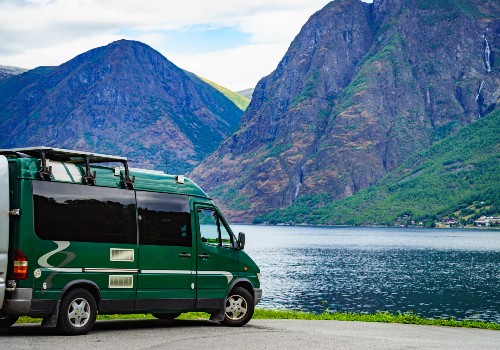
Most people think that our national parks started with the Antiquities Act of 1906, signed by President Theodore Roosevelt in his second term. Actually, in 1832, President Andrew Jackson signed a bill into law protecting land in Arkansas from private development.
President Woodrow Wilson created the National Park Service in 1916. This new bureau established the actual parks on federally protected land, gave it funding, and employed staff. The first camping craze of the roaring 1920s led the Park Service to establish campgrounds in many of the parks.
One of the major destinations for World War II veterans were national parks. Many new parks established during this second camping bubble had campgrounds added into the plans for the “Canned Ham” era RVs. With President Eisenhower’s new interstate highway system, the parks were affordable and easy to get too.
The point is, many of these campgrounds opened during time periods when RVs were smaller and less technologically advanced than the ones we have today. Those that have plumbed in campground utilities can’t update the campsites without destroying protected land.
Older campgrounds within the parks have lost space due to the growth of the natural plant life. The staff maintains the campgrounds through lawn care and other normal tasks, but cutbacks and preservation guidelines allow the skeleton crew to do so much.
Best Way to Make a Reservation
If you’re planning an RV national park road trip to see as many as possible, be strategic. The summer months when children are out of school is the busiest time for both state and national parks. The spring and fall are going to be the best times to find open campsites.
If your coach isn’t the best RV size for the public park, there are many private campgrounds surrounding the park. They have to compete with the park and the other private parks in the area, so you can expect them to have modern accommodations with full hookups, long campsites, and additional features.
Park Finder Website
If your goal is to stay at the park itself, a great strategy is to take advantage of both the website and to call them directly. The National Park Service’s Park Finder Website lists all of the U.S. parks, help you narrow down your search based on a number of different criteria, and connects you to their specific pages.
Once you know the details about the park and what length RV will fit in a parking space, call the ranger station directly. The campgrounds operate on either reservation only or first-come-first-serve (FCFS) depending on how busy and the time of year. The ranger can also tell you what campsites available based on cancelations or those that have left early.
America the Beautiful Annual Pass
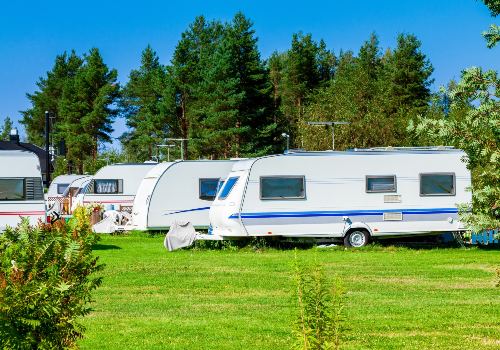
A great money saver is the National Park Service’s America the Beautiful Annual Pass . Campground fees generally range between $30-$50 a night. The annual pass allows you entrance into the parks free of charge and other features that they charge per person.
A one-time charge of $80 will give the pass holder and up to 3 passengers in a private, non-commercial vehicle use of the pass benefits to all of the national parks and other public lands that are open to the general citizenry. Children 15 and younger are free of charge and don’t count under the three passenger limit.
Active military personnel can receive their pass free of charge. We thank you for your commitment to our country and thank you for your service.
There are three ways you can buy your pass. Either on-site at one of the national parks, over the phone, or through the USGS Store . The website allows you to printout a temporary pass until you receive your permanent pass via U.S. Mail.
Access Pass
Seniors (62 and older) and the disabled can apply for another type of pass. The Access Pass gives the additional benefit of a 50% discount on primitive campsites. Renewal is $20 a year.
What it Would Take to Modernize
What if national parks update their campgrounds? They could install every campsite with full hookups and wifi. Camp stores and restaurants would be available on-site. What if the national parks have RV size limits increased to 45 feet and the roads remade to accommodate RVs of those sizes?
There are modernization proposals floating around Washington D.C. that talk about doing this. Proponents and opponents are debating the protection of the ecological versus the economical advantages to the national parks.
The more famous parks like Yellowstone, Grand Canyon, and Yosemite are still popular. Yet some of the lesser-known parks that offer incredible landscapes and outdoor excitement are suffering from revenue losses. Overall visitation is slowly declining.
National Parks Are Still Worth the Trip
Taking your RV out to any one of our national parks can be a trip of a lifetime. You’ll see unique landscapes that only exist here in our country. The United States has the most diverse geographies on the planet. In our nation, you can climb mountains, journey through deserts, swim in oceans, and hike on glaciers.
This is the purpose of our national parks. Grab your family, pack up your RV and go explore.
- Experience the depth of the Grand Canyon National Park
- Debate who has the biggest nose on Mount Rushmore National Memorial Park
- Set your watch to Old Faithul at Yellowstone National Park
- Explore the wonders underground in Mammouth Cave National Park
- Walk the same field the Confederates did at Gettysburg National Military Park
- Take a boat tour in the deepest lake at Crater Lake National Park
Share this post:
Related posts:.

Why RV Sewer Hose Supports Are a Must-Have: Improving Sanitation & Stability

Safe Camping Near Alligators: Essential Tips and Destinations in the US

Choosing the Best Toilet Paper for RVs: Myths vs. Facts
About the author:.

Levi Henley, RV LIFE’s Content Manager and WordPress specialist, is renowned for his expertise in RVing and workamping, having lived on the road since 2015. He’s the author of the popular guide “Seasonal Workamping for a Living: How We Did It” , a testament to his deep knowledge in the RV community. For more insights into Levi’s nomadic lifestyle and expertise, visit Henley’s Happy Trails .
Levi Henley: Content Manager, Media Specialist at RV LIFE
Levi Henley stands at the forefront of RV-centric content, wearing multiple hats as a Content Manager and Media Specialist for the RV LIFE network. With his deep-rooted expertise in RVing, workamping, and the full-time nomadic lifestyle, Levi has been writing about and living the lifestyle since he hit the road in 2015 with his wife Natalie.
Their journey, punctuated by innovative approaches to nomadic income, has culminated in the guide, " Seasonal Workamping for a Living: How We Did It ," a testament to their hands-on experience and knowledge. This resource, available on Amazon and through their personal website, Henley's Happy Trails , offers invaluable insights into the mobile lifestyle. Levi's has written for RV industry media key organizations like Coach-Net, Escapees, and Workamper News.
Beyond his professional prowess, Levi is a man of diverse talents and interests. He's not only an actor and magician but also a certified scuba diving instructor. His adventures across the country in a 2011 Sunstar Itasca, accompanied by Natalie and their two feline companions and rambunctious dog, embody the spirit of exploration and lifelong learning.
Follow Camper Smarts:
- Follow Us On Facebook
- Follow Us On Twitter
- Follow Our Pins

- You are here:
- Home »
- Blog »
- » State and National Park RV Size Limit (Length Restrictions)
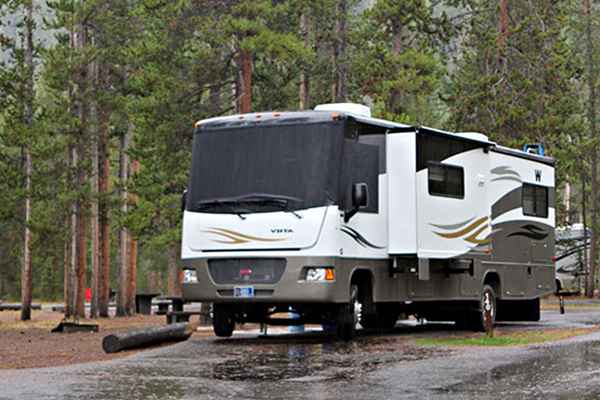
State and National Park RV Size Limit (Length Restrictions)
- November 22, 2018 /
- RV Parking RVing 101 /
- By R. Geraldi /
There’s nothing better than owning an RV — it gives you the freedom to go wherever you want without having to compromise on space and comfort. Therefore, it might be the perfect time to choose your home away from home. However, when choosing an RV , there are some things to conside r , especially if you’re planning a tour in one of the national or state parks.
Namely, before you make a purchase, you should inform yourself about the US national parks RV restrictions and campground RV length restrictions. What’s more, if you already have an RV, this information will still prove useful — you don’t want to plan a trip only to find out you can’t camp out at your chosen destination because your RV exceeds the national park RV size limit. So what’s the max RV size for national parks?
What Size RV Is Allowed in National Parks
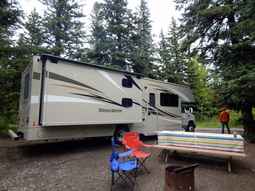
If you’ve gone with the attitude “the bigger, the better” when buying your RV, you might have to forgo trips to national parks. In fact, there are some quite notorious rules when it comes to national park trailer length limits.
As you know, your RV can be anywhere from 12 to 50 feet long. However, not all of them can fit into the guidelines that regulate the maximum trailer length for national parks.
Still, while having a small RV will make sure you can get practically anywhere, even if you aren’t ready to sacrifice your comfort for access rights, huge RVs can still get into around half of the national parks that allow RVs. Therefore, you might have to sacrifice the location of your camping, if you’re looking to buy a 41-foot beauty.
Best RV Size for National Parks
Generally speaking, the best RV lengths for national parks are between 12 and 25 feet. If your beauty is anywhere within this range, you’ll be able to get into pretty much any national park in the US. However, keep in mind that some parks don’t allow RVs at all and are “tent only.”
Almost all of US national parks RV size limits will allow a 12-foot, a 9-foot, and even a 25-foot RV on site. However, as the size of your camper increases, the chances of you getting onto a National Park camping grounds diminish.
Campground RV Age Limit
The US national parks RV restrictions sometimes also include age restrictions. Some campgrounds that are trying to maintain a luxurious look only allow new RVs on site. Therefore, you might see a sign that says that your RV isn’t eligible for a long-term stay if it’s older than ten or even five years. This is a real issue for enthusiasts who love old-time Airstreams, for example. However, this isn’t a problem that you’ll run into very frequently.
What’s more, since the campsites with age restrictions are a few and far between, if you run into this problem, you can always just move along. Another campsite is probably around the corner.
The Maximum Length of RVs in National Parks
The maximum trailer length for national parks varies from park to park. Some parks will even permit you access regardless of your RV size. Here are the US national parks RV size limits for the four biggest and the most frequently visited national parks.
Glacier National Park RV Size Limit
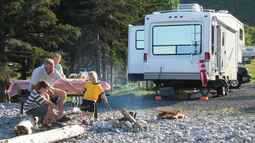
If you’re a proud owner of a massive RV and are headed for Glacier national park — you’re in luck. As long as your RV is 35 feet long or shorter, you’ll be granted the permission to enjoy most of their campsites. Still, it’s important to keep in mind that only seven out of thirteen Glacier campsites allow RVs at all.
This gem of pure Montana wilderness will be a perfect short-term home for your RV. However, not all seven campsites allow massive RVs. The Rising Sun campsite, for example, only allows RVs that are 25 feet long, while the Apgar campsite has above average campground RV length restrictions and will allow you to camp out in your 40-foot RV.
Yosemite National Park RV Length Limits
Arguably the most popular and the most famous national park, the Yosemite has ten campsites that accept RVs.Yosemite has a wide range when it comes to the maximum length of RV in national parks.
However, like many US national parks RV restrictions, the restrictions in Yosemite also usually differentiate between the RV size and the trailer size. Therefore, that’s something to keep an eye out for.
For example, in Yosemite Valley, you will be granted an entrance if your RV is not longer than 40 feet , provided that the trailer itself is no longer than 35 feet. On other campsites that accept RVs, the campground RV length restrictions are 35 feet for RVs and 24 feet for the trailer length.
Yellowstone RV Length Restrictions
Luckily for all us RV enthusiasts, Yellowstone, the first national park in the US, has 12 campsites, and they all allow RVs on site. However, only one campsite offers a place for massive RVs.
Fishing Bridge RV Park is a famous destination among RV owners. It allows a combined length of more than 40 feet when it comes to the RV and the towing vehicle. That means that you can easily get in with a 40-foot RV. The length of your towing car doesn’t count , as you can park it beside the trailer (instead of parking it in front of the trailer).
However, other campsites have a different set of campground RV length restrictions — the maximum length is 40 feet, but that includes both the length of the RV and the length of your towing vehicle.
Zion National Park RV Length Limits
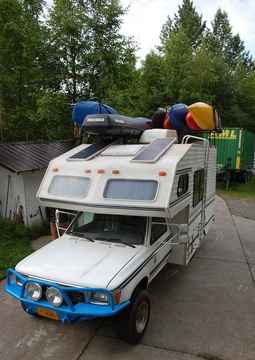
If you have your heart set out for the national park Zion and you own a large RV, you won’t be happy with the size guidelines. Namely, the maximum length of an RV in national parks such as Zion is around 19 feet. Furthermore, all campsites allow a maximum of two vehicles — your towing vehicle and your trailer or RV.
Do you plan on heading to the Grand Canyon or the Bryce Canyon after your trip to the Zion national park? If your vehicle is large, then you’ll need to obtain a special tunnel permit. Namely, you need a tunnel permit if your vehicle is wider than 7 feet, 10 inches and taller than 11 feet, 4 inches. What’s more, if your RV is longer than 40 feet or the combined length of your vehicle and trailer is longer than 50 feet, you won’t be granted access to the Zion-Mount Carmel Tunnel.
Maximum RV Length at State Parks
There isn’t much of a difference in maximum RV length allowed when it comes to national and state parks. What’s more, state park RV length restrictions also vary from park to park. That means that you can find a suitable location no matter what your RV length is.
Texas State Parks RV Length Limits
The Lone Star state has many state parks, many of which allow RVs on their campsites. However, if you own a huge RV, there’s a good chance that you won’t be granted access to a great number of them.
Therefore, keep in mind your RV length while planning your trip. If you are headed for the Texan fan-favorite, Radcliff Lake Park, or to Oakland Park, you might not have any problems finding a suitable campsite. You can enter these parks even with a monster RV of a combined length of 50 feet. However, parks like the Jackson Creek Park only allow RVs up to 25 feet in length.
Maximum RV Length — Oregon State Parks
Oregon state parks have an average, general rule that the combined length of your towing vehicle and your RV can’t be over 40 feet. That means that most RVs that are over 30 feet aren’t allowed.
However, that’s not the case at all campsites. Still, if you have a 35-foot RV, you might have trouble finding the space. However, some parks and campsites allow you to unhook your RV from your vehicle. That way, you can park the vehicle besides the RV. That might be a way around this rule.
It’s important to note that Oregon state parks and their campsites have a very wide range of state park RV length restrictions. On some campsites, the maximum length goes up to 80 feet. For example, the regulations aren’t so laid back in California as they are in Oregon.
California State Park RV Length Limits
California state parks allow for 25–30 feet long RVs, on average. Most campsites were originally designed for tent camping. Therefore, they don’t have enough room to accommodate huge RVs and their towing vehicles.
However, in California state parks, much like in Oregon, the campsites have regulations about RV sizes that vary. So, for example, the D. L. Bliss State Park and the Tahoe state park only allow RVs that are a maximum of 18 feet long (15 feet long trailers).
On the other hand, if you have a large RV, you still have options in California. Bolsa Chica State Beach allows trailers up to 40 feet long. Meanwhile, Emma Wood State Beach allows RVs as long as 45 feet.
Florida State Park RV Length Restrictions
Florida is a very camping-friendly state. Therefore, a lot of state parks allow RVs, and many of them will accommodate your large RV. Campsites in Florida also have a wide range of state park RV length restrictions. Some of them only allow vehicles that are 10 feet long. However, others allow massive rigs of 104 feet in length.
In fact, in Florida , the motto is — the bigger, the better. At least when it comes to the RVs. Thirty state parks allow RVs that are over 45 feet long. Meanwhile, twelve parks allow rigs that are between 36 and 40 feet long. Only four parks allow for vehicles up to 35 feet in length.
Washington State Park RV Length Restrictions
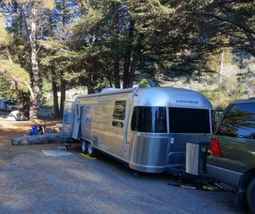
Washington is a gorgeous state to camp in. In fact, you can choose one of almost 50 state parks to set your rig in. However, not all of them have the same state park RV length restrictions. The average size limit in the state of Washington is between 30 and 35 feet . However, you can find campsites that allow RVs up to 60 feet in length.
What’s more, if you have a genuinely huge RV, you can explore the option of private campgrounds. They are not that rare, and most of them have size limits that allow for bigger RVs. In fact, most of them allow the length of 60 feet or more per RV.
A Few Parting Words
US national parks RV restrictions vary greatly. Therefore, if you are looking to buy an RV, make sure you include these restrictions as a deciding factor. However, if you already own an RV, this information might help you plan your next adventure. It’s crucial to know if you can camp out at a certain park or not.
Things aren’t much different when it comes to state parks as well. It seems that Florida is the most camping-friendly state. However, you should definitely check national park trailer length limits and state park RV length restrictions no matter where you plan on setting up camp next.
Related Posts
Does CarMax Buy RVs? (CarMax RV Trade-In Guide)
300 Lbs Over Payload: What Happens If I Exceed My Payload?
Thor Vegas Problems (Windshield, Battery, Fridge, Swivel Chair)
Leave a Comment:

RV Size Limits for National & State Parks (Helpful Guide)
The state and national parks in the United States are some of the first places people want to go in their RVs. In fact, many people buy their RVs exclusively to use in state and national parks.
What’s the maximum RV size for state and national parks? The maximum recommended size RV for national parks is 29 feet with this number holding true for most state parks as well. The reason for this is that many state and national parks will not allow campers that are longer than 30 feet.
Let’s take a look at exactly what you need to know about bringing an RV to a national or state park in the United States.
Table of Contents
National Parks And RV Sizes
Are you planning on buying an RV to take to both state and national parks? If so, you might be interested in knowing that not all RVs will fit in the camping spots that these places have to offer.
Each national park will have its own size restrictions when it comes to what size RV you can bring in. Many of these will have combined restrictions meaning the length cannot exceed the length of both your towable camper and your tow vehicle.
If you have a motorhome without a tow vehicle , you’ll have more space to work with.
Also, keep in mind that there are usually multiple campgrounds within a national park and each campground may have different size restrictions.
For example, the Great Smoky Mountains National Park has campgrounds in ten different locations. Some of these campgrounds do not have any size restrictions while some do not allow RVs in at all. The rest fall somewhere in between with Abrams Creek only allowing RVs measuring 12′ long and Smokemont allowing RVs as long as 40′ long.
Here is a list of RV lengths allowed by each national park in each state:
You’ll notice that on this list there are some national parks that were listed more than once. This was intentional as some national parks encompass multiple states.
You’ll also notice that if you have a motorhome that is under 30 feet long, you’ll be able to access any national park that allows RVs.
However, if you’re towing a vehicle behind you or are towing a towable camper, 30 feet might just be too long. In this case, you’ll have to find out how long your tow vehicle is and then tow a camper that is short enough to fall within the 30-foot length restriction.
Remember, if you’re towing a fifth wheel , you’ll have some additional space because part of your camper will reside over your truck’s bed. In this case, you’ll want to hitch up your camper and measure everything together.
Tiny Houses and National Parks
A tiny house is essentially a towable camper so you’ll be able to take your tiny house into a national park but you’ll need to make sure it meets the size restrictions of the park you’re visiting. Just keep in mind that RVs are usually much shorter than tiny houses and a tiny house that is too tall may run into trouble in some national parks.
Also, keep in mind that the access roads in some national parks aren’t always smooth.
Some tiny homes are not built to go on dirt roads so you’ll want to make sure your tiny home is prepared for off-road conditions before you decide to take it into a national park.
State Parks And RVs

There are over 1,500 state parks in the United States and many of them allow camping. Some of these state parks have multiple campgrounds within the park and all of them have their own restrictions.
As much as I’ve dreamed about camping in all of the state parks in the United States, it isn’t a realistic goal for anyone who doesn’t want to dedicate their entire life to it. Even if you could visit a different park every single night of the year, you’d still end up devoting over 3 years to your trip.
For this reason, you shouldn’t buy an RV based on being able to camp in all of the state parks in the country. Even if you did, you might find that you end up purchasing multiple RVs over the course of your journey and some of the states may change the rules before you actually get to them.
In this case, a better idea is to look at the state parks you think you’ll be visiting most often so that you can buy an RV that works for those parks.
My advice would be to look up the information on each state park within an hour or two of your house. These are the campsites that you’ll be able to visit each weekend without having to take time off from work and they’re the ones you’ll probably end up visiting the most.
How to Learn More about State Parks in Your Area
Each state park has its own website that you can use to research each of its state parks. Some websites are much better than others but most of them will at least give you a list of parks as well as contact information.
If you’re unsure about the state park’s requirements, why not go ahead and visit them yourself? This way, you’ll be able to take a look at the campsites and talk to the rangers on site.
You’ll also be able to get a feel for the park to see if it is a place that you’d like to spend a lot of time in. If it isn’t, you don’t want to plan your RV purchase around visiting it anyway.
4 Other Restrictions do I Need to Consider?
Size isn’t the only RV specification to think about when buying an RV for the state and national parks. You may also want to think about water tanks, bathroom facilities, and power supplies.
Other Items to Consider
- Water requirements.
- Bathroom facilities.
- Power supplies.
- Temperatures.
1) Energy Restrictions
Did you know that some state and national parks do not offer full hookups? In this case, you may want to consider getting an RV with a great alternative backup power supply. This is especially true if you have a health issue.
For example, you may need to have an energy source to power a CPAP machine. You might also need to have the power to run a refrigerator to store your medicines. People camping in the desert might want to think about getting an RV that has solar power built into it. Others might want to think about getting an RV with a nice generator built into it.
Need more information on RV electricity? Take a look at my post titled, “ Do RVs Need to Be Plugged In “. This post will give you more details on getting electricity, water, and even cable and Internet at your campsite.
2) Temperature Restrictions
Some state and national parks are too cold for some campers. Does the RV you’re considering have heat? If so, is this heat source usable if you don’t have electricity? For cold weather state and national parks, you’ll probably want an RV with a built-in gas or diesel powered furnace. This way, you’ll be able to heat your RV even if you’re at a cold campsite without electricity.
Additionally, you might want to consider buying a 4-season RV.
These RVs are insulated better than 3-season RVs so you’ll be able to retain your heat longer than you can in RVs that are not insulated very well. This will save you money on fuel and will increase the amount of time you can camp before having to drive out of the park to get more fuel. Here’s all you need to know about RVs and insulation .
3) Bathroom Facilities
Not all parks have dump stations or flush-toilets. Are you OK with using pit toilets? Are you healthy enough to dig your own toilet if you have to? When choosing an RV, you might want to look into the bathroom facilities at the parks you plan on visiting so that you can buy an RV that meets your needs.
For example, if you’re going to be camping in a park without dump stations, you might want to buy an RV with a large black water tank . This will give you the ability to stay longer without having to worry about overfilling your RV’s sewer system.
Alternatively, you might want to think about adding a cassette toilet or dry toilet to a camper that does not have bathroom facilities.
Of course, you might find that the opposite is true as well. Some state parks have great bathroom facilities with flush toilets, hot showers, and even laundry facilities. If you’ll be visiting these kinds of parks, you won’t have anything to worry about at all.
4) Water Requirements
While we’re on the topic of plumbing, we should talk about water requirements. Some desert parks might not have any water readily available to you. In this case, you might want to think about getting an RV with a large freshwater tank.
In other cases, you might not have to worry about water at all. Personally, I can’t think of any parks or campgrounds in the northeast that do not have a source of water that you can access. For people camping in this part of the country, a dry camper without water storage might work just as well.
For more information on RV plumbing, take a look at my post titled, “ Do RVs Have Water Tanks and Water Heaters “. There you’ll find information on tank sizing and tank usage.
Alternative Options
Still searching for a camper that will meet all of your needs everywhere at all times? You might want to consider a truck with a truck camper and a towable camper. This gives you flexibility since you’ll essentially have two different campers to use depending on the campground you’re visiting.
You’ll also have a standard vehicle so you’ll end up with a setup that offers you three different options.
For example, you could tow your large camper to places like Zion National Park where there aren’t any size restrictions to worry about. Then, when you wanted to visit a park like Death Valley, you could leave your towable camper behind and load up your truck camper.
Another option might be to buy a small motorhome as your tow vehicle. Some people will buy 20 foot long motorhomes and lightweight campers to tow behind them.
Check our complete guide to tow-cars for RVs .
In this instance, the person has a small motorhome that they can take on weekend trips and to parks with heavy restrictions and they can tow along their larger camper on longer trips and to parks with loose restrictions.
What Size RV Should I Buy?

Unfortunately, there really isn’t a one-size fit all solution to buying an RV for state and national park camping.
However, this doesn’t mean you can’t buy the perfect RV for your particular situation. The key point to keep in mind is that there are a lot of state and national parks and you won’t be able to visit them all at once. This is great since this offers you many years of camping fun and you may even get the chance to buy multiple RVs over the course of your life with camping.
I’d suggest that you start your journey by deciding on which state and national parks you’ll be able to visit within the next few years. Then, choose an RV that meets your needs as well as the requirements of each state and national park within your plan.
In a few year’s time, you can plan a few more years of camping trips and buy another RV that is perfect for these new trips that you’ll be taking.
If you end up having to decide between a few different RV options, your best bet is to buy the smaller of the two. There are usually maximum size restrictions but there are never minimum size restrictions.
Buy a smaller RV and you’ll give yourself more camping options in all of the parks as well as the campgrounds outside of the parks that you may end up staying in.
Additionally, you’ll save money on RV storage and insurance so you’ll end up winning in multiple ways.
If you are looking to buy an RV, You need to read these tips first: Our very best buying tips for RVs and Motorhomes .
Plan carefully before you buy your RV and be sure to do your own research on the areas that appeal most to you. Evaluate your own individual needs and you won’t have any trouble finding the perfect RV for your next trip.
Click to share...
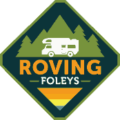
RV Living, Camp Cooking, and Family Adventure
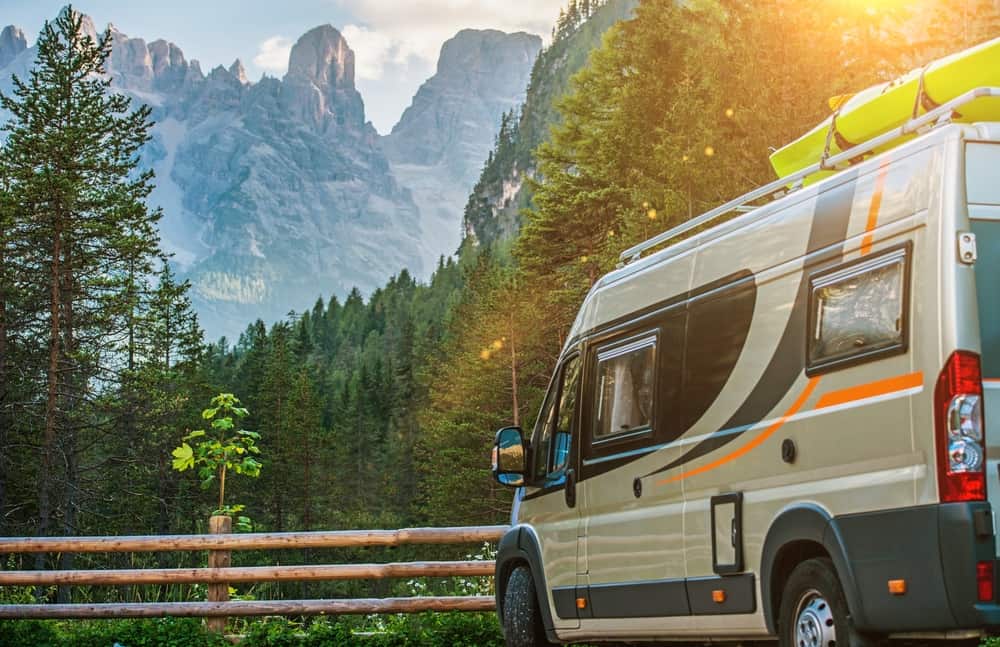
2024 Ultimate Guide To National Parks RV Length (Huge Time Saver!)
- X (Twitter)
- Pinterest 39.1K
What is the Best Length For An RV In The National Parks?
If you are planning a national park vacation, it’s important to know if your RV is allowed in the parks. Each National Park will have RV length limits depending on the configuration of their campsites and most parks were developed before the more modern RV lengths came along.
The average size of RV sites is 27 feet nationwide. Therefore t he optimal length for an RV in the National Parks is 25 to 30 feet. Most National Park campgrounds will have spaces that will fit this length. Sites vary park by park and campground by campground, so always check directly with the park office prior to booking a site.
If you are planning a national park vacation , it’s important to know if your RV is allowed in the parks.
The rules for length restrictions on RVs vary widely by location and can be confusing if you aren’t familiar with them. This is especially true when considering that many of the most popular National Parks have unique regulations about how long your RV can be. Some parks allow any size motorhome, while others only permit small trailers or even motorcycles!
We put together this list of information to help make sense of these different lengths limitations so that you don’t waste time trying to find out what’s possible for your trip! You don’t want to show up for your site with a rig that is too long to fit, and it is considered poor campground etiquette .
Below are the stated National Park RV length restrictions for every National Park that allows RV camping. Please use it as an idea and then do some extra research (preferably on the phone) to get situated.
We have endeavored to clarify as much confusing information as possible by direct contact. (One park stated 30 ft restrictions on travel trailers and 21ft restriction on 5th wheels!) We have also included prices, and basic services for each of the National Parks RV campgrounds .
If this is your first tour of the National Parks, I would highly recommend this book . It will tell you what to look for at each National Park (we still recommend you do your own research), but this will help you with planning your trip.
“The national park idea has been nurtured by each succeeding generation of Americans. Today, across our land, the National Park System represents America at its best. Each park contributes to a deeper understanding of the history of the United States and our way of life; of the natural processes which have given form to our land, and to the enrichment of the environment in which we live.” George B. Hartzog Tweet
Older National Park Campgrounds May Be Too Small
America loves it’s National Parks. KOA research shows that 40% of all RV Campers stay in National or State Parks.( 1 ) But as RV’s get larger, fitting them into 1950’s and 60″s era campgrounds is becoming more and more difficult with National Park RV size maximums. Many people (including us) would love to stay within the National Parks but simply cannot fit into the sites with a large RV.
If you are camping in a smaller teardrop or pop up camper, you probably do not have much to worry about, but with the increasing size of most travel trailers and fifth wheels, some care must be taken when planning a site.
Most National Parks that have RV campgrounds do not offer any kind of hookups. So it is dry-camping only . There may be some types of amenities, like a dump station, vault toilets, etc, but sites do not have hookups in most cases. National Park RV camping accommodations as a general rule are a bit sparse.
You have to remember that the whole idea of our National Parks is to celebrate our natural spaces, so clearing and digging up large sites within those natural areas to allow for sewer hookup’s and 50 amp electrical service, or even to cut through roads to accommodate 40+ foot long motorhomes, causes a great deal of heartburn.
That being said, many parks are making upgrades where possible to accommodate longer RV size limits as well as the demand for hookups .
Which National Parks will work for your rig? We have done the legwork for you and compiled a list of every National Park campground that allows RV camping , and the information necessary for you to make your decision.
If you don’t have an Annual Pass for the National Parks, I highly recommend you pay one annual fee , which will get you into all of the USA National Parks.
Campground RV Size Restrictions
Every National Park has RV length restrictions. There does not seem to be any consensus anywhere, nor an authoritative resource to tell us how sites are measured. Typically the length restriction will be for camper AND tow vehicle , so the allowable length for a trailer will be shorter than for a motorhome by about 10 feet.
Our best advice is to take a look at the list below and use it as a guideline, but not as a bible. Nor should you use ANY online resource as authoritative. We strongly recommend that you do the following:
Call The Park: We have found that at the end of the day, no matter where you are trying to camp, you ALWAYS do better by speaking to someone right there at the park. You will get first hand information that will often times contradict what you read or hear online. For instance if you are just staying overnight and do not wish to unhook, make sure you can get a site long enough for the whole shebang.
When we were staying out at Yellowstone last year, we stayed outside the park, at Henry’s Lake State Park (AWESOME park.) During our 2 month visit, we stopped around to see several of the Yellowstone campgrounds. Keep in mind that this was mid summer, when anyone would tell you it is next to impossible to get a site within the park.
While visiting the Mammoth Springs area, we noticed that the campground there had quite a few empty spaces. We stopped to speak to the ranger at the gatehouse, and she told us that they had been experiencing quite a bit of vacancy over the last couple of weeks. They usually got several walk-ins during the days, but each morning many left.
We also noticed that, even though the park has a maximum RV length of 30 feet, there were a large number of sites that would, and WERE holding RV’s much longer than that. The ranger told us that the restriction was there, but they often put larger rigs into the park without a problem.
Another story: When we visited South Dakota , we stayed at a Angostura State Recreation Area, a huge, beautiful facility on the Angostura Reservoir. The campground offers electric only sites at VERY affordable prices. When I called them on the phone to get some information, I got some surprising news.
The ranger who I spoke to told me that they did in fact have a few full service sites that were used by the on site camp hosts. Since it was late in the season, some of the hosts had been released and left. So there was a fully paved ADA site with full services and a built in stone fire-pit available if we wanted it. (We wanted it) I think we paid about $25 per night for the site. All because of a phone call.
The point is this: call the park. ALWAYS. Get first hand information from someone on the ground , who does this every day. You never know what will happen.
You can get most of the information you need for visiting National Parks online or at the park. If you want all of the information you need in one spot, I highly recommend this book. The pictures are beautiful, and you get a good idea of what there is to do and see!
Let’s take a look at the travel trailer restrictions in National Parks and the RV length restrictions by state .
Gifts For National Park Lovers
Looking to visit all the National Parks within the US? Well, this National Parks Bucket List art is just what you need to track your park road trips!
Each National Park has a camera icon next to the parks name. As you visit these picture-perfect parks, use the included push pins to pin your list within the circle of the camera lens to show you have “captured” that park. Makes a fun way to track and show off your National Park Adventures
I absolutely love these and will be getting one (or two) as soon as I have a wall large enough to fit them on. The best part is you can get them personalized. What a gift for all nature loving peeps!
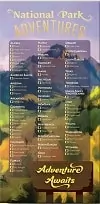
How Do I Measure My Rig for Campgrounds
All of this being said, you still need to find some earmarks to use in selecting sites for your rig. Some people say that they “add a few feet” to the stated rig length so that they always have extra room in their campsite. If you have a smaller rig, feel free. For us with a 38ft rig, I would never do this. It is hard enough to find sites in some parks to fit us so I wouldn’t want to eliminate a 39ft site because I said my rig was 40ft.
Our recommendation is this: go with the stated length of your rig, which is usually written in the model number of your rig. Then talk to someone in person so you can discuss slides, width, etc. You will almost never go wrong.
Alaska National Parks RV Camping
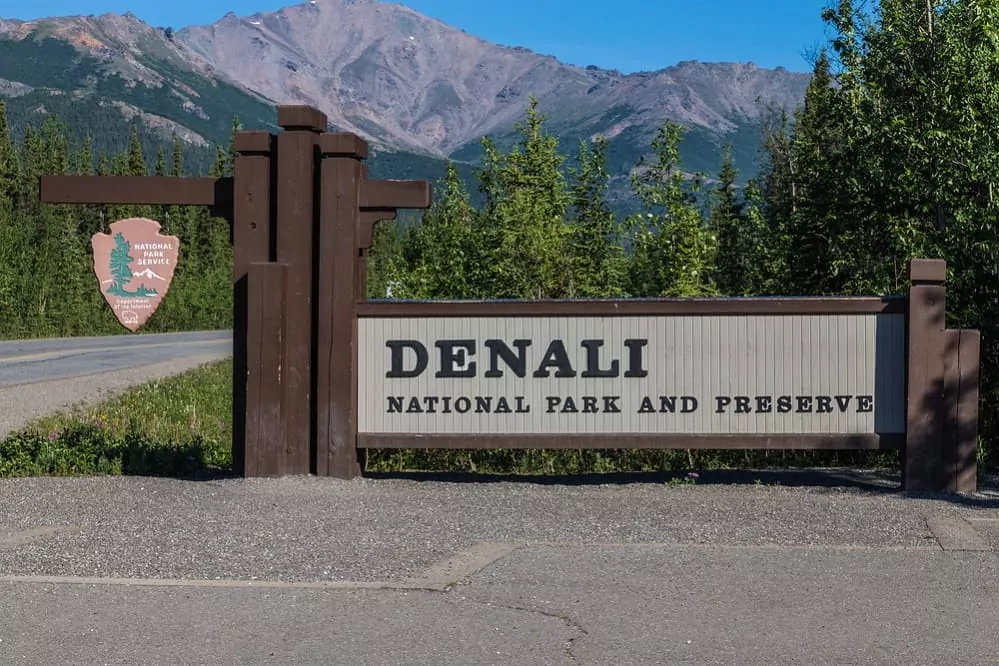
Denali National Park RV Sites
Riley creek campground.
- Max Length: 30ft (Standard) 40ft (Premium)
- Price Per Night: $24 (Standard) $30 (Premium)
- Hookups: No
- Reservations: YES. Start about May 15 depending on weather. Walk In before that.
- Dump/Fill Station: YES in season.
- Location: Very near the Visitors Center, at Park entrance.
- Notes: 127 Sites Walkable to Visitors Center area and amenities. Loads of trails.
Savage Campground
- Reservations: Reservations not required, but strongly recommended
- Dump/Fill Station: No. Potable water available seasonally
- Location: 13 Miles from the entrance on the Denali Park Road
- Notes: 33 Sites. Awesome views of Denali. Hiking trails.
Teklanika Campground
- Max Length: 40 ft
- Price Per Night:
- Reservations: Yes.
- Dump Station:
- Location:
- Notes: 53 sites. Also known as “Tek” this campground requires a 3 night stay and you may not move your vehicle while you are there. There are shuttle passes available but they have weird restrictions for this campground. READ CAREFULLY!
Alaska National Parks With NO RV Camping
- Gastes of the Arctic National Park
- Glacier Bay National Park
- Katmai National Park
- Kenai Fjords National Park
- Wrangell St-Elias National Park
- Lake Clark National Park
- Kobuk Valley National Park
American Samoa
American samoa national parks with no rv camping.
- National Park of American Samoa
Arizona National Parks RV Span Restrictions
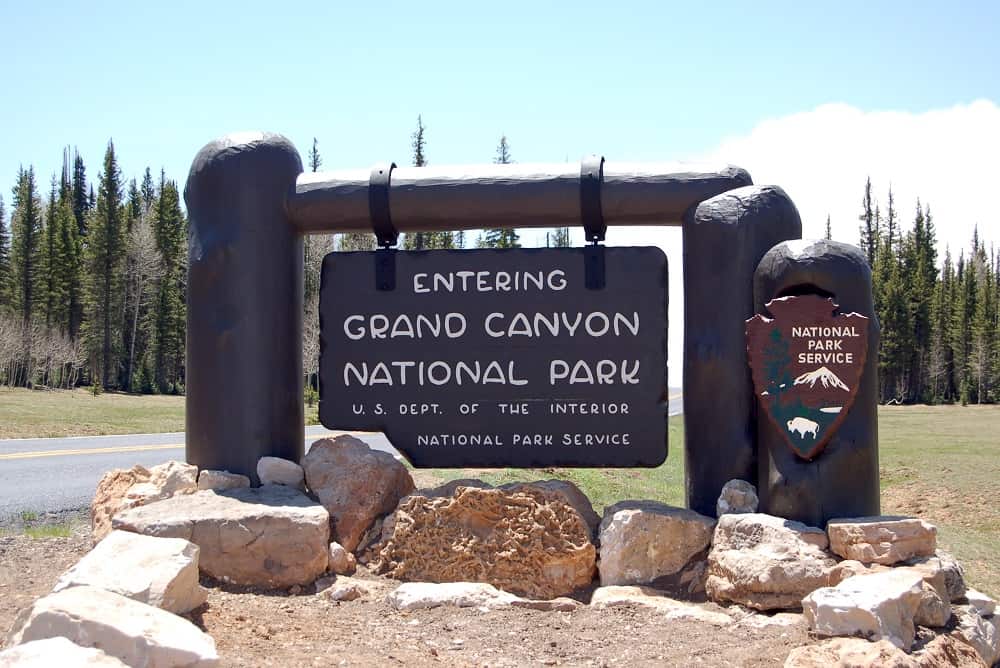
Grand Canyon National Park RV Sites
Mather campground:.
- Max Length: 30 ft
- Price Per Night: $18 per night. $50 for group sites. $15 (Dec-Feb)
- Reservations: Yes – up to 6 mos in advance.
- Dump/ Fill Station: Yes
- Location: South Rim- within the Grand Canyon Village
- Notes: 319 Sites. Walkable to all amenities of the GC Village. Dec-Feb, open as a walk-in, self pay site.
Trailer Village:
- Max Length: 50 ft.
- Price Per Night: Starting at $48 (seasonal)
- Hookups: Yes (Full Hookups)
- Reservations: Yes – open year around.
- Dump/ Fill Station: Yes (Mather Campground)
- Notes: Paved Sites. This is a concessioner operated campground.
Desert View Campground:
- Max Length: 30 ft (vehicle AND trailer)
- Price Per Night: $12 per night.
- Reservations: No – FCFS
- Dump/ Fill Station:No- 2 water faucets available in the park. Nearest dump station Mather Campground (25 miles)
- Location: East Entrance (25 miles to GC Village)
- Notes: 50 sites. Open mid-April to mid-October. Restrooms with running water (cold only)
North Rim Campground:
- Max Length: None given.
- Price Per Night: $18-$25 per night. $50 Group Sites
- Reservations: Yes
- Dump/ Fill Station: Yes
- Location: North Rim
- Notes: 90 Sites. Open May 15 to October 31.
Arizona National Parks With NO RV Camping
- Petrified Forest National Parks
- Saguaro National Park
Arkansas National Parks RV Length
Hot springs national park, gulpha gorge campground:.
- Max Length: 35 ft. (40 footer has been reported)
- Price Per Night: $30 Per night
- Hookups: Full Hookups W/E/S
- Reservations: No FCFS Only.
- Dump Station: Yes
- Location: NE part of the park, off US Hwy 70B
- Notes: 44 sites. Open Year around.
“If we are to have broad-thinking men and women of high mentality, of good physique and with a true perspective on life, we must allow our populace a communion with nature in areas of more or less wilderness condition.” Arthur Carhart Tweet
California National Parks RV Camping
Death valley national park, furnace creek:.
- Max Length: None: “Difficult to maneuver with longer RV’s.”
- Price Per Night: $16 (Standard) $34 (Hookups)
- Hookups: 18 Sites have water and electric.
- Reservations: Yes Oct 15 to Apr 15. FCFS remainder of year.
- Location: Near the center of the park.
- Notes: 136 Sites. Open Year Around.
- Max Length: None
- Price Per Night: $14
- Reservations: No
- Location: Very near Furnace Creek, in the middle of the campground.
- Notes: Open late fall thru spring
Texas Springs:
- Max Length: None: “Difficult to maneuver with longer RV’s.”
- Price Per Night: $16
- Notes: Open late fall thru spring
Stovepipe Wells:
- Location: 30 Minutes northwest of Furnace Springs
- Notes: 190 Sites. Open all year
Mesquite Spring:
- Location: Northern end of the park. Near Scotty’s Castle.
- Notes: 30 Sites.
- Max Length: 25 ft.
- Price Per Night: Free
- Dump/ Fill Station: No
- Location: Southwestern edge of the park in the Wildrose Canyon
- Notes: 23 Sites. Open year around.
- Max Length: 25 ft.
- Location: Southwestern edge of the park near the Wildrose Canyon
- Notes: 6 Sites. Typically open late spring thru fall.
Mahagony Flat:
- Reservations:
- Dump/ Fill Station:
- Location: Southwestern edge of the park near the Wildrose Canyon
- Notes: 10 Sites. Typically open late spring thru fall.
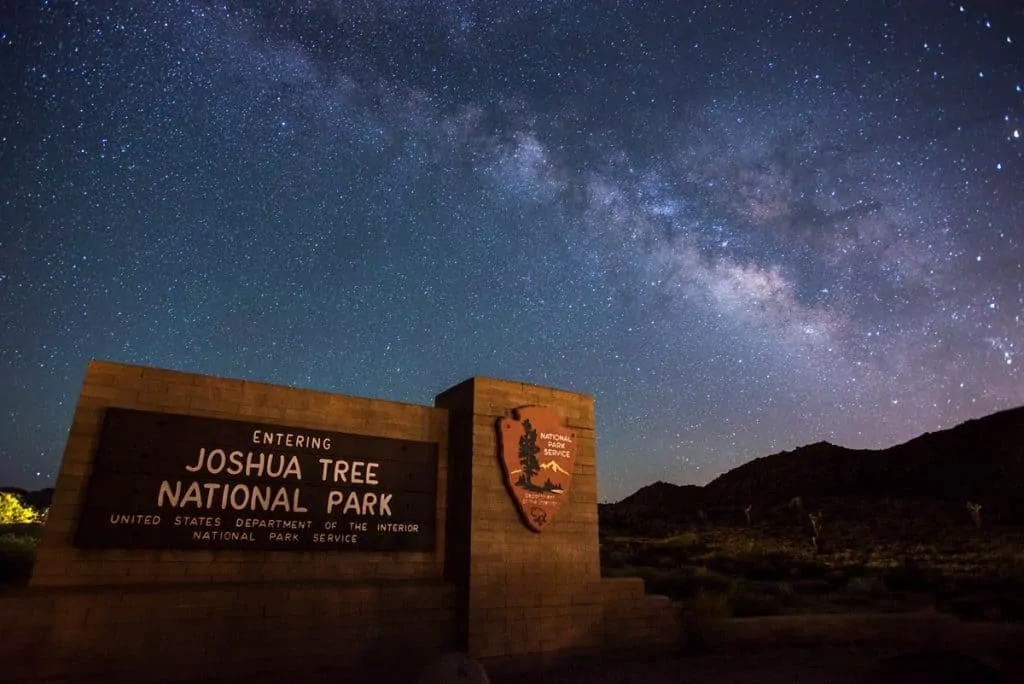
Joshua Tree National Park
- Max Length: 35 ft.
- Price Per Night: $20
- Reservations: Yes- September thru June. Can reserve 6 mos in advance.
- Location: Northwest corner of the park.
- Notes: 100 Sites. Open year around. Also has a horse riding camp.
- Max Length: 35 Feet Combined length.
- Price Per Night: $15
- Reservations: No
- Location: About 5 miles inside the North Entrance to the park off Pinto Basin Road.
- Notes: 18 Sites.
- Max Length: 25 Feet
- Location: About midway between the North and West Entrances, along the Park Boulevard.
- Notes: 44 SItes
- Max Length: 35 Feet Combined Length
- Reservations: Yes- September thru June
- Dump/ Fill Station: No- Ranger Station has water.
- Location: North side of the park on Indian Cove Road near the Wonderland of Rocks. register at the Ranger Station.
- Notes: 101 Sites. Open year around.
- Max Length: 35 Feet
- Reservations: Yes – September thru June
- Location: About 10 miles inside the North Entrance on the Park Road.
- Notes: 124 Sites. Open Year around.
- Max Length: None stated
- Reservations: No except the Equestrian Sites which require reservations
- Location: About mid-way through the park on the Park Road. Near Ryan Mountain.
- Notes: 31 Sites (4 Equestrian). Open year around.
- Max Length: 25 ft
- Location: About 15 miles inside the North Entrance on the Pinto Basin Road.
- Notes: 15 Sites. Open year around.
Kings Canyon and Sequoia National Park
Grant grove area (kings canyon).
This section sits apart from the larger KC park, off the NW corner of Sequoia. It is the home of the General Grant Sequoia, the worlds second largest Sequoia.
- Max Length: Varies by site
- Price Per Night: $18
- Dump/ Fill Station: Nearest at Princess Campground, Hume Station (6 miles)
- Location: Grant Grove area. Walkable to General Grant Sequoia Grove.
- Notes: 110 Sites. Open year around. Bear area.
- Price Per Night: $18 ($40 Group)
- Reservations: No for indiv. Yes for group.
- Dump/ Fill Station: Nearest at Princess Campground, Hume Station (6 miles)
- Location: Grant Grove area.
- Notes: 36 Sites, (14 Group). Open May through September. Exact dates vary.
- Max Length: Varies By Site
- Price Per Night: $22 ($40 Group)
- Location: Grant Grove area.
- Notes: 157 Sites. (2 Group)
Cedar Grove Area Campgrounds (Kings Canyon)
The other vehicle accessible area of the park, Cedar Grove is known as the “quieter” part of the park. A pay phone, restaurant, showers, and laundry facilities are available in the Cedar Grove Village, and horseback riding is offered (for a fee) nearby.
- Max Length: Varies by Site.
- Price Per Night: $22
- Dump/ Fill Station: NO: Nearest at Princess Campground, Hume Station
- Location: West Entrance to the larger Kings Canyon Park.
- Notes: 82 Sites. Open mid-May to mid-November.
- Max Length: Varies by site.
- Hookups: No: Nearest at Princess Campground, Hume Station
- Location: West Entrance to the larger Kings Canyon Park.
- Notes: 111 Sites. Open early July to Early September.
- Max Length: Varies by Site
- Dump/ Fill Station:NO. Nearest at Princess Campground, Hume Station
- Location: West Entrance to the larger Kings Canyon Park.
- Notes: 121 Sites. Open Late July through Mid October.
Lodgepole Area Campgrounds (Sequoia)
The Lodgepole area of Sequoia National Park is in the Northwestern part of the park.
- Max Length: 42 ft
- Price Per Night: $22
- Reservations: Yes mid May through Mid September. (Strongly recommended)
- Dump/ Fill Station: Yes. During the summer
- Location: 1/4 mile from Lodgepole Village.
- Notes: 214 Sites. Loops start closing in the fall and all are closed early December through mid May.
- Max Length: Any Length
- Price Per Night: $22 ($40-$60 Group)
- Reservations: Yes July through August (Strongly recommended)
- Dump/ Fill Station: No. Closest is at Lodgepole.
- Location: Midway between Grant Grove and Giant Forest.
- Notes: 218 sites (4 Group) Campground closes mid Sept through early July
Foothills Campgrounds
- Max Length: 27ft (Larger not advised on the road into the park.)
- Location: 4 Miles inside the park entrance on the south side of the park.
- Notes: 42 Sites. Open Year Around
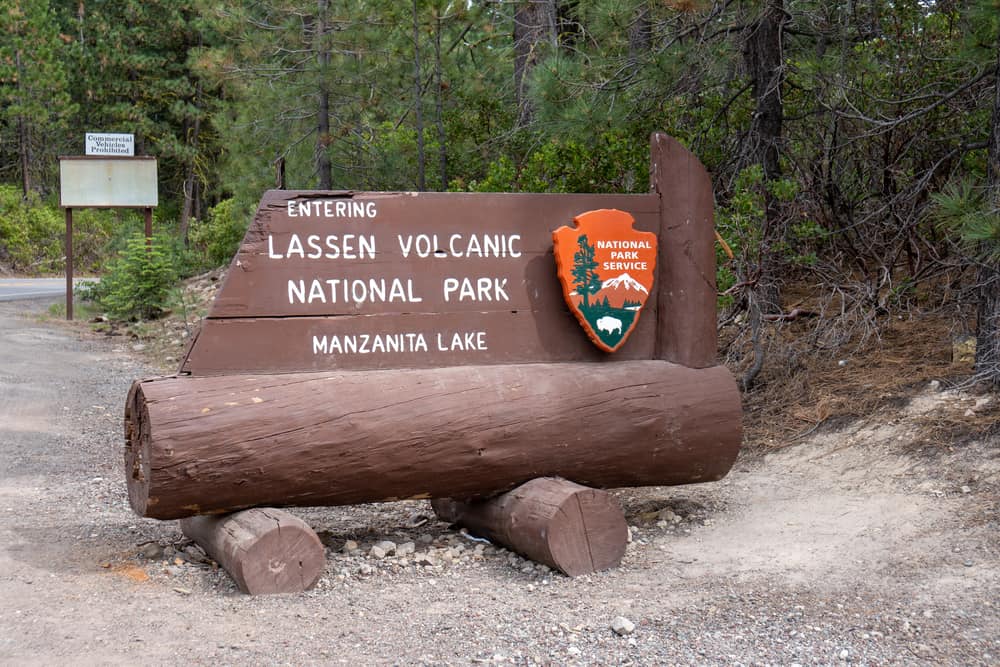
Lassen Volcanic National Park
- Max Length: 35 ft
- Dump/ Fill Station: No Dump. Potable Water acailable
- Location: Northeast corner of the park. Near Butte Lake, CInder Cone and Prospect Peak
- Notes: 101 Sites. Open early June to late October, weather permitting.
- Price Per Night: $26
- Hookups: No.
- Reservations: Yes, for 2 loops. 2 loops are FCFS.
- Dump/ Fill Station: No. Potable water available
- Location: Northwest Corner, 1 mile from the Manzanita Lake Entrance.
- Notes: 179 sites. Open mid May to snowfall. (Early November)
- Max Length: 35 feet
- Hookups: No. Potable water available.
- Reservations: 3 loops reservable. 2 loops FCFS
- Dump/ Fill Station: No. Closest at Manzanita Lake Junction
- Location: About the center of the park. Midway between Kohm Yah-mah-nee and Manzanita Entrances along the Lassen Volcanic National Park Highway
- Notes: 94 Sites. Open July through September.
- Max Length: Not Listed.
- Reservations: 8 Sites Reservable
- Dump/ Fill Station: NO. Potable water available
- Location: Southeastern corner of the park. Remote. Dirt road entry.
- Notes: 18 sites. Open June through mid October – weather permitting.
- Price Per Night: $62 (10-25 people)
- Dump/ Fill Station: No. Closest at Manzanita Lake Campground
- Location: 5 miles south of Manzanita Lake on the main park road.
- Notes: 8 sites. Open mid June through September – weather permitting.
Pinnacles National Park
- Max Length: Any size.
- Price Per Night: $40 (electric) $30 (non-electric)
- Hookups: Yes. 30 amp Electric. Potable water available.
- Location: Near the Visitors Center at the East entrance.
- Notes: 134 Sites. Open year around. Pool (summer) and camp store.
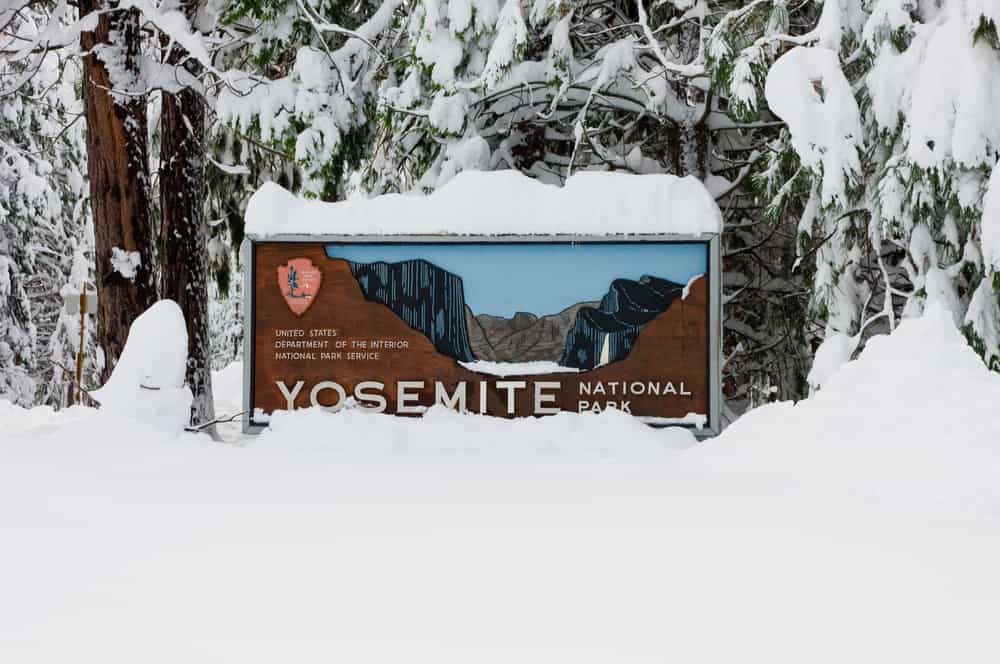
Yosemite National Park
Yosemite has 9 campgrounds that accept RV’s. The maximum RV span in Yosemite is 40 ft at the Lower Pines Campground. Check out below for the Yosemite RV length restrictions.
Yosemite Valley Campgrounds
- Reservations: Yes, all year
- Dump/ Fill Station: Yes (Year around)
- Location: Deepest in the Yosemite Valley. Near Curry Village.
- Notes: 238 Sites. Open year around.
- Location: Next to Upper Pines. Near Curry Village.
- Notes: 60 Sites. Open Mid April through Mid October
- Location: Just North of the Pines Campgrounds. Near Curry Village.
- Notes: 81 Sites. Open Mid April to Mid October
South of Yosemite Valley
- Price Per Night: $26 April through September) $18 (off season)
- Reservations: Yes (April through September)
- Dump/ Fill Station: Yes (summer only)
- Location: On the Wawona Road, near Wawona Village. Near the South entrance of the park.
- Notes: 93 Sites, 2 Horse Sites, 1 Group Site.
- Max Length: 35 ft.
- Price Per Night: $18 ($50 Group Sites, $30 Horse Sites)
- Reservations: Not for regular sites. Required for Group and Horse Sites.
- Location: About 8 miles up the Glacier Point Road.
- Notes: 110 Sites. 2 Group Sites. 3 Horse Sites. Open July through September.
North of Yosemite Valley
- Max Length: 35 Ft
- Price Per Night: $26
- Reservations: Yes (April through September)
- Location: Just inside the park at the Big Oak Flat (West) Entrance
- Notes: 105 Sites. Open year around.
- Location: Along the Big Oak Flat Road about 30 minutes from Yosemite Valley.
- Notes: 166 Sites. Open mid July through mid October.
- Max Length: 27 Ft
- Reservations: No. All sites are FCFS
- Location: Off of the Tioga Road about midway through the park.
- Notes: 74 Sites. Open July through early September.
- Price Per Night: $26 ($50 Group)
- Reservations: Half the sites are reservable as well as the Group sites.
- Dump/ Fill Station: Yes (Summer only)
- Location: On the Tioga Road just a few miles inside the Tioga (East) entrance.
- Notes: 304 Sites. 7 Group sites. 4 Horse sites.
Redwoods National Park
While Redwoods its self does not have any listed campgrounds, the state of California has state parks interspersed within Redwoods which have 4 RV campgrounds.
- Max Length: 25 Ft
- Price Per Night: $35
- Reservations: Recommended thru ReserveCalifornia
- Location: Jedediah Smith Redwoods State Park, 10 miles east of Crescent City, Calif. on Hwy 199.
- Notes: 86 RV or Tent Sites. Open year round.
- Max Length: 28 Ft
- Reservations: Recommended thru ReserveCalifornia
- Dump/ Fill Station: Yes
- Location: Del Norte Coast Redwoods State Park, 7 miles south of Crescent City, Calif. on Hwy 101.
- Notes: 145 RV or Tent Sites. Mid May through September.
- Reservations: Recommended thru ReserveCalifornia
- Dump/ Fill Station: No
- Location: Prairie Creek Redwoods State Park, 6 miles north of Orick, Calif. on the Newton B. Drury Scenic Parkway.
- Notes: 75 Sites. Open all year.
- Max Length: 24 Ft RV (no trailers)
- Location: Prairie Creek Redwoods State Park, 10 miles north of Orick, Calif. on Davison Road (unpaved, no trailers).
- Notes: 26 Sites. Open All Year (subject to funding- call ahead)
California National Parks With NO RV Camping
- Channel Islands National Park
“It’s a Colorado Rocky Mountain High, I’ve seen it raining fire from the sky. Talk to God and listen to the casual reply. Rocky Mountain High, Colorado.” John Denver Tweet
Colorado National Parks RV Size Restrictions
Colorado has 3 National Parks that offer RV camping.
Black Canyon Of The Gunnison
- Max Length: 55 ft
- Price Per Night: $16 (Standard) $22 (Electric Loop B Only)
- Hookups: Yes. Loop B has 23 Electric hookups (summer only)
- Reservations: Some sites (Loops A and B) are reservable ($3 Fee) in summer. Most are FCFS.
- Dump/ Fill Station: No. Potable water is available in summer only.
- Location: Just inside the park on the South Entrance. Easy access to South Rim
- Notes: 56 Sites. Open year around.
- Max Length: 22 ft
- Price Per Night: $16 in summer. Spring and fall free.
- Hookups: No.
- Reservations: No. All sites are FCFS.
- Dump/ Fill Station: No. Potable water is available in summer.
- Location: North side of the park. Access from the town of Crawford on Black Canyon Road.
- Notes: 13 Sites. Open April to mid November
- Max Length: 22 ft. No larger vehicles are allowed on the road in.
- Dump/ Fill Station: No.
- Location: South East corner of the park. Use the South Rim Entrance and turn onto the East Portal Road. follow for 5 miles.
- Notes: 15 Sites. Open May to mid October.
Mesa Verde National Park
- Price Per Night: $15
- Hookups: Yes, 15 Sites with full hookups.
- Location: North side of the park 4 miles inside the entrance.
- Notes: 267 Sites. Open mid April to mid October.
Rocky Mountain National Park
- Hookups: No. Potable water is available in summer.
- Dump/ Fill Station: No. Potable water available in summer.
- Location: East side of the park at the Fall River Entrance
- Notes: 52 Sites. Open May to September (weather dependent).
- Reservations: Yes. Highly recommended.
- Dump/ Fill Station: Yes. Summer only.
- Location: About half way down the Bear Lake Road. Use the Beaver Meadows Entrance.
- Notes: 75 RV Sites. Open May through September weather dependent.
- Max Length: 40 ft.
- Price Per Night: $26 ($18 Winter)
- Dump/ Fill Station: Yes (seasonal) Potable water available year around.
- Location: Off the Bear Lake Road near the Beaver Meadows Entrance.
- Notes: 244 Sites. Open year around (64 sites open in winter FCFS)
- Max Length: 30 ft.
- Reservations: No. All Sites are FCFS
- Dump/ Fill Station: Yes.
- Location: West side of the park. 8 miles north of the Grand Lake Entrance.
- Notes: 98 Sites. Open May to October (weather dependent).
Great Sand Dunes National Park
- Hookups: No. Water is available.
- Reservations: Yes (May through Sept)
- Dump/ Fill Station: Yes. Nearby
- Location: 88 sites. Open April through October.
“The more civilized man becomes, the more he needs and craves a great background of forest wildness, to which he may return like a contrite prodigal from the husks of an artificial life.” Ellen Burns Sherman Tweet
Florida National Parks RV Length
Everglades national park.
- Max Length: 45 ft
- Price Per Night: $25 ($35 Group)
- Dump/ Fill Station: Yes. Potable water available
- Location: Just inside the park near Homestead FL along Road 9338
- Notes: 73 Sites. Closed summer (Opens November)
- Max Length: 45
- Price Per Night: 45 electric. 25
- Hookups: Yes. Electrical only. (41)
- Dump/ Fill Station: Yes. Potable water available.
- Location: At the end of Road 9338
- Notes: 65 Sites. Open year around.

Florida National Parks with NO RV Camping
- Biscayne National Parks
- Dry Tortugas National Park
Hawaii National Parks with NO RV Camping
- Hawai‘i Volcanoes National Park
- Haleakalā National Park
Indiana National Parks RV Measurement Maximums
Indiana dunes national park..
- Max Length: No stated length
- Price Per Night: $25
- Hookups: No (potable water is available
- Reservations: Yes
- Dump/ Fill Station: No (Potable Water is available)
- Location: Northern section of the park, near Beverly Shores RR Station
- Notes: 54 Sites Open April through October
Kentucky National Parks Maximum RV Spans Allowed
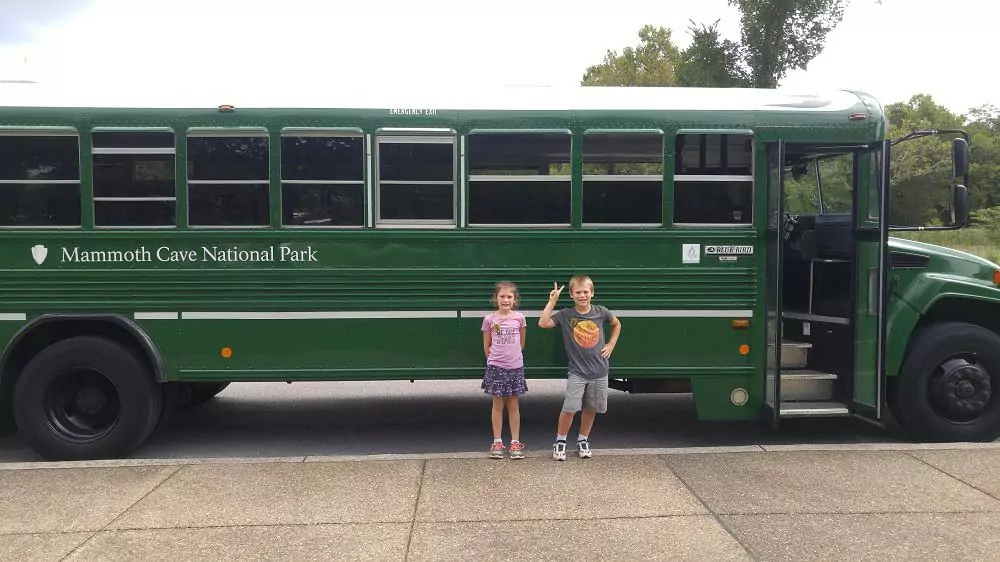
Mammoth Cave National Park.
- Max Length: 38 ft
- Price Per Night: $20. ($25 Group)
- Reservations: Yes (52 Sites) (May 1 to October 15)
- Dump/ Fill Station: Yes (Seasonal) Potable Water available (seasonal)
- Location: Near the Visitors Center and Main Entrance to the caves.
- Notes: 111 Sites (4 Group)
- Max Length: 40 ft.
- Price Per Night: $25 ($35 Group)
- Hookups: 2 Electrical/Water (Horse) Sites
- Dump/ Fill Station: No. Potable water is available.
- Location: North side of the park 6 miles from the Visitors Center.
- Notes: 6 Sites 4 Horse Sites (2 electric)
Maine National Parks Maximum RV Dimensions
Acadia national park.
- Max Length:
- Price Per Night: $30 ($60 Group)
- Location: About 5 miles south of Bar Harbor.
- Notes: 306 Sites. Open early May through mid October.
- Location: Southern end of the park. 4 miles south of Southwest Harbor on Rte 102A.
- Notes: 214 Sites. Open mid May through September.
- Price Per Night: $36 Electric ($40 Electric and Water) $60 Group
- Hookups: Yes
- Dump/ Fill Station:
- Location: Schoodic Peninsula 3 miles Southeast of Winter Harbor.
- Notes: 90 Sites. (2 Group) Open Late May to Early October
Michigan National Parks with NO RV Camping
- Isle Royale National Park
Minnesota National Parks with NO RV Camping
- Voyageurs National Park
Missouri National Parks with NO RV Camping
- Gateway Arch National Park
Montana National Parks RV Length
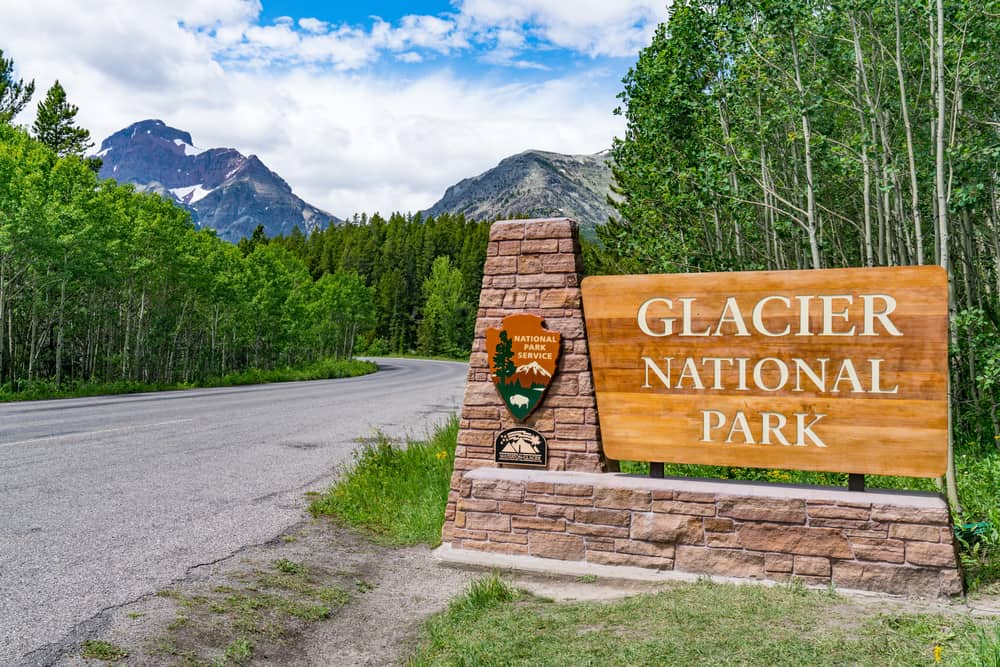
Glacier National Park
- Location: Just inside the West Entrance to the park, near Apgar Village.
- Notes: 194 Sites. Open Year around
- Max Length: 26 Ft.
- Location: Along the Going To The Sun road, about 16 miles inside the West Entrance.
- Notes: 50 Sites for RV’s. Open mid-June to mid-September
- Price Per Night: $23
- Location: About 2.5 miles inside the West Entrance of the park off the Camas Road on the western shore of Lake McDonald.
- Notes: 18 sites accommodate RV’s. Open June through August
- Location: Eastern side of the park. About 11 miles from the town of Babb on Rte 3.
- Notes: 13 Sites for RV’s. Open mid-May to mid-October.
- Max Length: 25
- Hookups: No
- Location: East side of the park, about 7 miles from the St. Mary entrance.
- Notes: 10 sites for RV’s. Open mid-June to mid-September.
- Max Length: None given – no towed vehicles are allowed.
- Location: About 9 miles inside the West Entrance, along the Going to The Sun Road. On the shore of Lake McDonald.
- Notes: 25 Sites. Open mid-May to mid-September
- Max Length: 40 ft (3 sites) 35 ft (22 sites)
- Price Per Night: $23 summer- decreasing off season (FREE Nov to mid-April)
- Location: Half a mile into the park at the St. Mary’s Entrance.
- Notes: 148 Sites. Open Year around.
- Max Length: 35 (10 sites)
- Location: Southeastern part of the park, 13 miles west of East Glacier. Between the Two Medicine Lakes.
- Notes: 100 sites. Open June thru mid-October
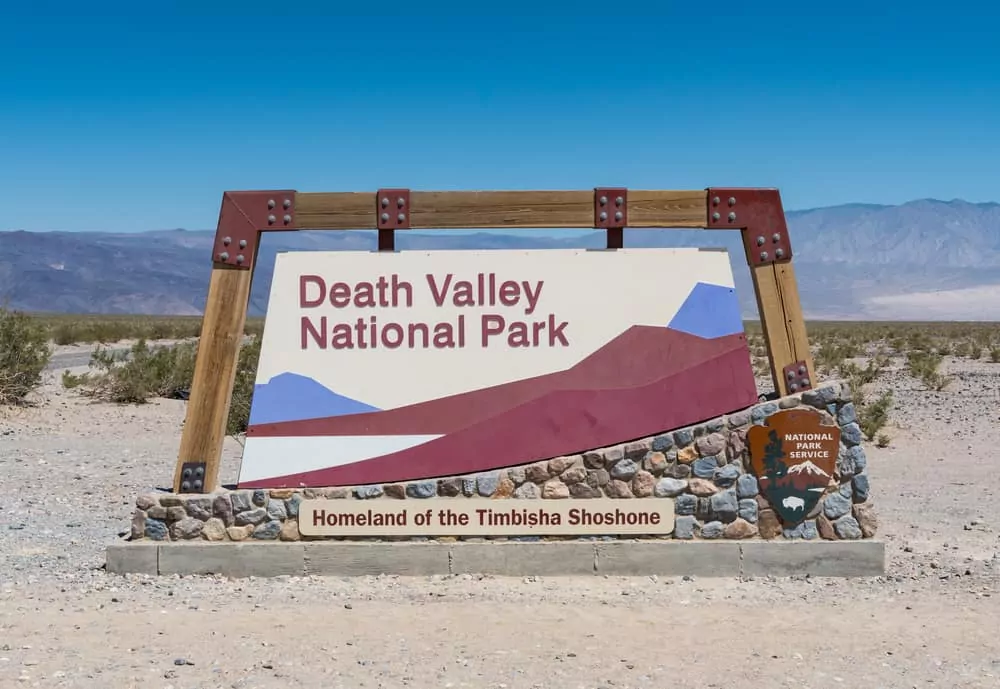
Nevada National Parks RV Lengthiness Maximums
- Max Length: “Difficult to maneuver larger RV’s”
- Price Per Night: $22 ($36 water and elec)
- Hookups: Yes (18 sites have water and 50 amp)
- Reservations: Yes (Oct through April) Rest of the year is FCFS
- Location: Eastern part of the park, near the Furnace Creek Ranch
- Notes: 136 sites. Open year-round
- Max Length: No Limit
- Hookups: No. (Water is available)
- Reservations: No. All sites FCFS
- Notes: 270 sites. Open late fall through spring.
- Max Length: “Difficult to maneuver larger RV’s”
- Hookups: No (water is available)
- Location: Eastern part of the park, near the Furnace Creek Ranch
- Notes: 92 Sites. Open Year-round.
- Location: About midway through the park off Hwy 190
- Notes: 190 Sites. Open Year-round
- Location: NE part of the park, near Grapevine off Scotty’s Castle Road
- Notes: 30 sites. Open year-round
- Max Length: 25 feet
- Price Per Night: FREE
- Location: SW part of the park. Where Emigrant Canyon Road meets Charcoal Kilns Road
- Notes: 23 sites. Open year-round (Some snow closures to road in winter)
- Max Length: 25 feet (high clearance only)
- Location: SE part of the park, off Charcoal Kilns Road
- Notes: 6 sites. Open late spring through fall weather permitting.
- Max Length: 25 feet (high clearance only)
- Location: SE part of the park, off Charcoal Kilns Road
- Notes: 10 sites. Open late spring through fall weather permitting.
Nevada National Parks with NO RV Camping
- Great Basin National Park
New Mexico National Parks With NO RV Camping
- Carlsbad Caverns National Park
- White Sands National Park
“National parks and reserves are an integral aspect of intelligent use of natural resources. It is the course of wisdom to set aside an ample portion of our natural resources as national parks and reserves, thus ensuring that future generations may know the majesty of the earth as we know it today.” John F. Kennedy Tweet
North Carolina National Parks RV Size Restrictions
Great smoky mountains national park (nc campgrounds).
These are North Carolina campgrounds. For Tennessee campgrounds, see the Tennessee section.
- Max Length: 26 ft
- Price Per Night: $17
- Reservations: No (Group sites available and reservable)
- Location: The campground is just inside the Deep Creek entrance, near the Visitors Center. Near Bryson City, NC
- Notes: 92 sites. Open late May to Late October
- Max Length: 40 ft (motorhomes) 35 ft (trailers)
- Price Per Night: $20 mid May through October ($17 rest of year)
- Location: Southern part of the park, about 3 miles inside the Oconaluftee Entrance
- Notes: 142 sites. Open Year around
- Max Length: 32 ft (motorhome) 25 ft (trailers)
- Price Per Night: $27
- Reservations: Yes (required)
- Location: Eastern end of the park. Quite remote. Chataloochie Entrance Road in is a narrow, windy mountain road. Partially dirt.
- Notes: 27 sites. Open mid June through October.
- Max Length: 30 ft
- Price Per Night: $17.50
- Location: Southeastern part of the park. Just off the Blue Ridge Parkway.
- Notes: 46 sites. Open late May to mid-October
North Dakota National Parks RV Length
Theodore roosevelt national park.
- Price Per Night: $14 ($30 Group)
- Reservations: Yes (37 sites- rest are FCFS)
- Dump/ Fill Station: No (potable water is available in season)
- Location: About 4 miles inside the South Unit Entrance
- Notes: 72 sites. Open year-round.
- Reservations: No (Group site YES)
- Dump/ Fill Station: Yes (seasonal)
- Location: 5 miles inside the North Unit Entrance (off 85)
- Notes: 50 sites. Open year-round.
Ohio National Parks With NO RV Camping
- Cuyahoga Valley National Park
Oregon National Parks RV Measurements
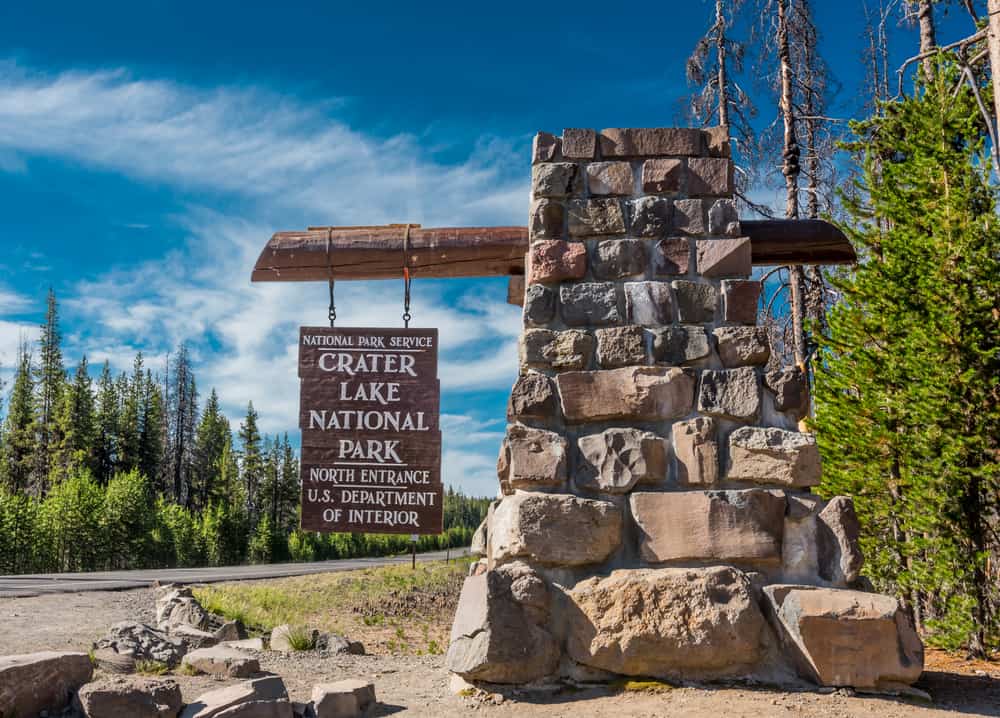
Crater Lake National Park
- Max Length: 50 ft (Motorhome) 35 ft (trailer)
- Price Per Night: $43 (full hookup) $36 (elec) $31 (dry)
- Hookups: Yes – FHU available.
- Reservations: Yes (some sites are FCFS)
- Location: Just inside the South Entrance to the park.
- Notes: 214 sites. Open mid-June through September.
South Carolina
South carolina national parks with no rv camping.
- Congaree National Park
South Dakota National Park RV Size Limit
Badlands national park.
- Max Length: None Given
- Price Per Night: $22 ($37 with elec)
- Hookups: Some electric sites available
- Dump/ Fill Station: Yes ($1 fee)
- Location: Eastern end of the park. Just inside the Interior Entrance to the park.
- Notes: 96 sites (4 Group sites) . Open year-round. (Limited sites November through March)
- Max Length: RV’s 18 ft max. (Horse Trailers OK)
- Dump/ Fill Station: No Potable water available near the Pinnacles Entrance
- Location: Northwestern corner of the park, Off the Sage Creek Rim Road. 12 Miles inside the Pinnacles Entrance
- Notes: 25 sites. Open year-round. Some weather closures expected.
Wind Cave National Park
- Price Per Night: $18 ($9 off season)
- Reservations: No (2 Group sites are reservable)
- Dump/ Fill Station: No. Potable water available in season (late spring to early fall)
- Location: Just a few miles inside the southern entrance to the park. Right near the Visitors Center
- Notes: 48 RV sites. Open year-round
Tennessee National Parks Allowable RV Span
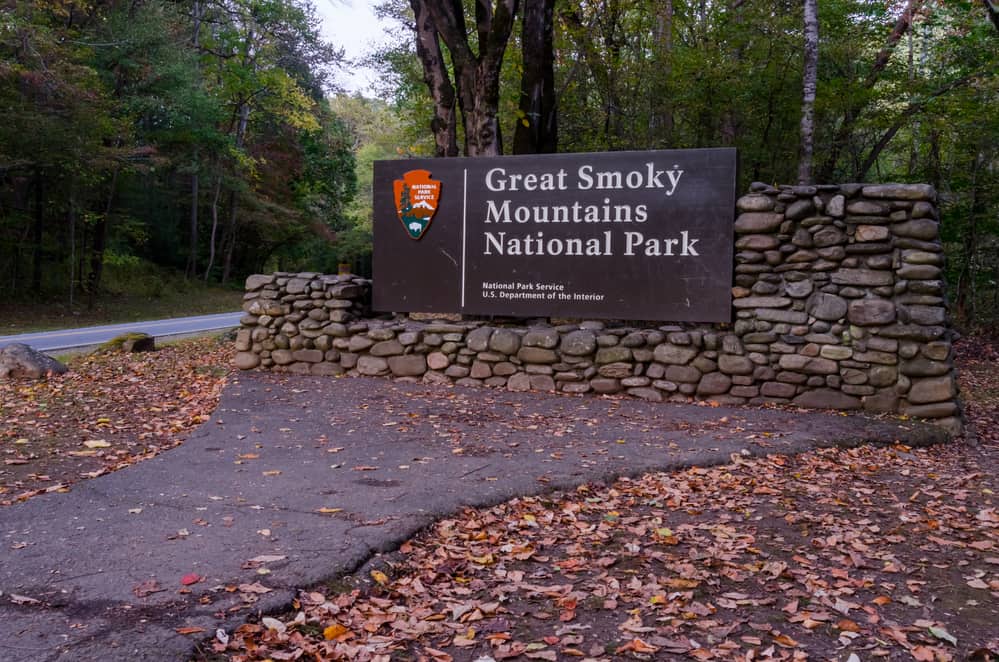
Great Smoky Mountains National Park (TENN)
These are Tennessee campgrounds. For North Carolina campgrounds, see the North Carolina section.
- Max Length: 40 ft (motorhomes) 35 ft (trailers)
- Price Per Night: $17 – $20
- Location: West end of the park, about 9 miles inside the Townsend (TN) Entrance. At the beginning of the Codes Cove Loop road.
- Notes: 159 sites. Open Year around
- Max Length: 35 ft (motorhome) 32 ft (trailer)
- Price Per Night: $
- Location: About 8 miles into the park from the Sugarland Entrance (Gatlinburg)
- Notes: 220 sites. Open year-round.
- Location: Northeast part of the park. About 4 miles south of the town of Cosby, off HWY 321/32.
- Notes: 157 sites. Open April through October
- Max Length: 12 ft
- Reservations: Yes- required
- Location: Far eastern end of the park, off HWY 129. Remote campground on Abrams Creek.
- Notes: 16 sites. Open mid-April to mid-October
Texas National Parks RV Sizes
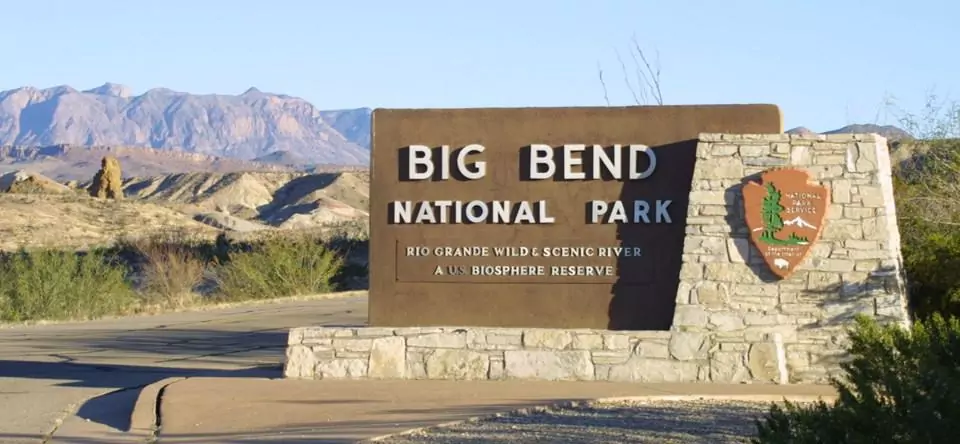
Big Bend National Park
- Max Length: 40 ft
- Price Per Night: $33
- Hookups: Yes Full Hookups
- Reservations: Yes (5 sites FCFS)
- Dump/ Fill Station: No – nearby at Rio Grande Village Campground
- Location: Far eastern part of the park near Rio Grande Village.
- Notes: 25 sites. Open year-round
- Reservations: 43 sites are reservable mid-November to mid-April. Group sites must be reserved.
- Dump/ Fill Station: In the nearby village
- Location: Far eastern part of the park near Rio Grande Village.
- Notes: 100 sites. (4 Group sites) Open year-round
- Reservations: No (Group site must be reserved)
- Location: West side of the park, near Castolon.
- Notes: 24 sites. (1 group site) Open year-around.
- Max Length: 24 ft (20 ft trailers)
- Reservations: Yes. 26 sites are reservable mid November through May.
- Location: Middle of the park near the Chisos Basin Visitors Center
- Notes: 60 sites (7 group sites)
Guadalupe Mountains National Park
- Reservations: No (Group sites DO require reservations)
- Location: Southeastern part of the Park. Near the Pine Springs Visitors Center
- Notes: 20 sites (2 Group)
- Reservations: No (Group sites DO require reservations)
- Location: Just inside the North Entrance of the park.
- Notes: 4 sites (1 group site)
US Virgin Islands
Us virgin islands national parks with no rv camping.
- Virgin Islands National Park
Utah National Parks Allowable RV Measurements
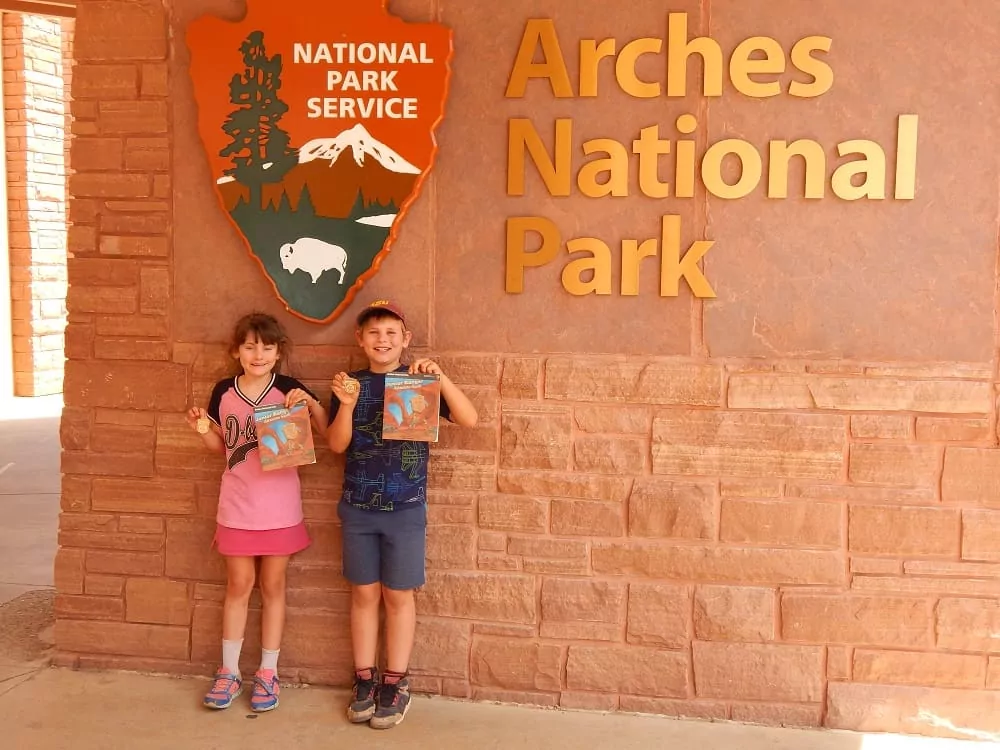
Arches National Park
- Price Per Night: $25
- Hookups: No. (Potable water is available.)
- Reservations: Yes- book well in advance March through October. FCFS the rest of the year.
- Location: 18 miles into the park. At the end of the park road.
- Notes: 51 sites. (2 group sites) Open year-round.
Bryce Canyon National Park
- Price Per Night: $30
- Hookups: No (Potable water is available)
- Dump/ Fill Station: Yes in season.
- Location: Near the main entrance to the park.
- Notes: 99 sites. Open year-round
- Reservations: During peak season (mid May through mid October.)
- Dump/ Fill Station: Yes – near the North Campground
- Location: About 2 miles into the park. Near Sunset Point Overlook
- Notes: 100 sites. Open mid-April through October.
Canyonlands National Park
- Max Length: 28 ft
- Reservations: No. All sites are FCFS
- Location: About 7 miles inside the park. Off the Upheaval Dome Rd.
- Notes: 12 sites. Open Year-round
- Max Length: 28
- Price Per Night: $20 ($90+ Group)
- Hookups: No. Water available in season.
- Reservations: 12 sites reservable March 15 to June 30 and September 1 through October 31. Other times it is FCFS
- Location: About a mile past the Needles Visitors Center just off UT211.
- Notes: 29 sites. (3 group sites) Open year-round.
Capitol Reef National Park
- Max Length: 50 ft.
- Reservations: Yes. March through October.
- Location: Midway through the park, in the historic town if Fruita.
- Notes: 71 sites. Open year-round
- Max Length: None given, however the roads in are very rough.
- Location: At the far north end of the park, about halfway through the Cathedral Loop Rd.
- Notes: 6 sites. Open year-round
- Max Length: None given, however the roads in are very rough.
- Location: 23 miles south of UT 24 on the Notom-Bullfrog Road.
- Notes: 5 sites. Open year-round
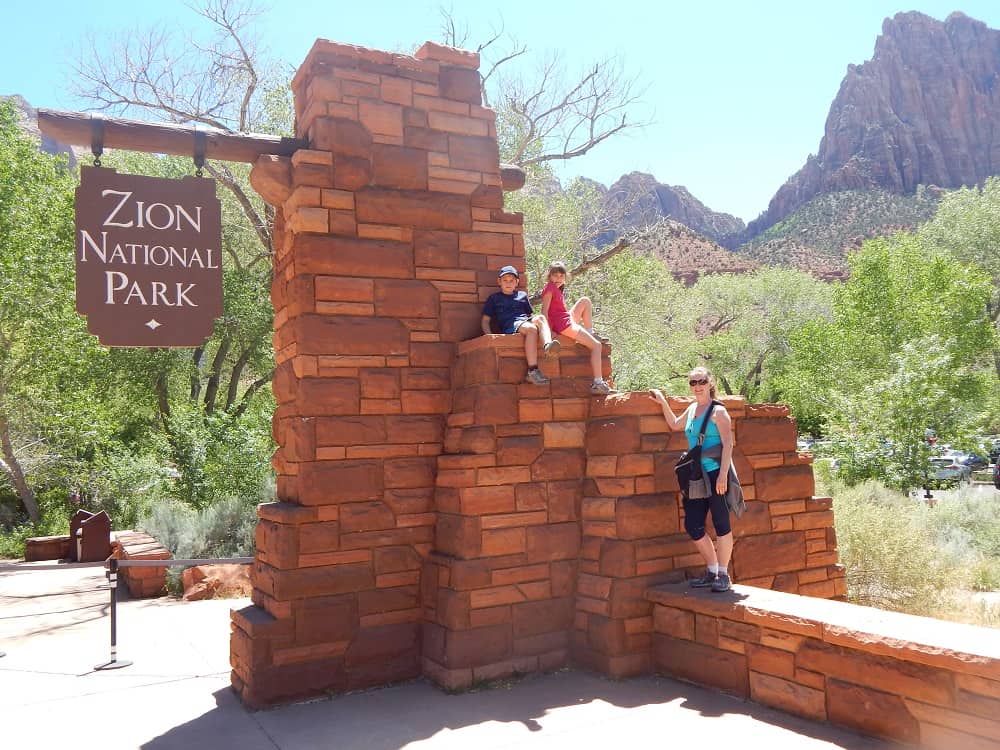
Zion National Park
- Price Per Night: $20 ($50 Group)
- Location: Just inside the South Entrance
- Notes: 117 sites. (4 group sites) Open
- Price Per Night: $30 (group sites from $50 -$130)
- Hookups: Yes (Electric)
- Reservations: Yes (March through November)
- Location: Just inside the South Entrance to the park.
- Notes: 190 sites. (7 group sites) Open year-round
- Max Length: 19 ft
- Location: Far northern part of the park, off the Kolob Terrace Road, 25 miles north of Virgin,UT.
- Notes: 6 sites. Open May through September (weather permitting)
Virginia National Parks RV Spans
Shenandoah national park.
- Max Length: No limit.
- Reservations: Yes. FCFS sites also available.
- Location: Northern end of the park, at mile 22.1 of Skyline Drive
- Notes:163 sites. Open Spring through Fall
- Max Length: No limit
- Reservations: Yes in summer. FCFS spring and fall.
- Location: Mile 51.2 of the Skyline Drive
- Notes: 231 sites. Open Spring through Fall
- Max Length: No Limit Given
- Reservations: No All sites are FCFS
- Location: Mile 57.5 of Skyline Drive
- Notes: 31 sites. Open Spring through Fall
- Reservations: Yes in summer. FCFS spring and fall.
- Location: Mile 79.5 of Skyline Drive
- Notes: 207 sites. Open Spring through Fall
“In wilderness I sense the miracle of life, and behind it our scientific accomplishments fade to trivia.” Charles A. Lindbergh Tweet
Washington National Parks RV Length Limit
Mount rainier national park.
- Max Length: 35 ft (27 ft trailer)
- Hookups: No – Potable water is available.
- Reservations: Yes. Mid June to mid September.
- Location: SW section of the park. About 8 miles inside the Nisqually Entrance.
- Notes: 173 sites. Open mid May through Mid October
- Max Length: 32 ft (72 ft trailer)
- Location: SE area of the park. Just inside the Ohanapecosh Entrance on HWY 123.
- Notes:188 sites. Open mid-May to mid-June
- Max Length: 27 ft. (18 ft trailer)
- Hookups: No- Potable water is available.
- Location: NE section of the park. 10 miles from Sunrise, off HWY 410.
- Notes:112 sites.
North Cascades National Park
- Max Length: “Small” RV’s
- Reservations: No- all sites FCFS (Group Camps YES)
- Dump/ Fill Station: No- Potable water available in season (June through September)
- Location: Located south of SR 20 at mile post 119. 13 miles east of Marblemount
- Notes:19 sites. Open Year-round (2 large Group Camp sites)
- Reservations: Yes (Late May through Early September) May have FCFS sites available outside the season.
- Dump/ Fill Station: Yes. Potable water available in season.
- Location: Located south of SR 20 at mile post 120. 14 miles east of Marblemount
- Notes: 107 Sites. (2 Group sites) Open May through September (weather permitting)
- Max Length: “Small” RV’s.
- Reservations: Yes (Late May through Early September) May have FCFS sites available outside the season.
- Dump/ Fill Station: Yes (North Loop)
- Location: Located off of SR 20 at mile post 130. 25 miles east of Marblemount
- Notes: 135 Sites. Open May Through September
- Max Length: “Very Small” RV’s. (Mostly a tent/car campground)
- Price Per Night: $10
- Reservations: Yes (Late May through early Sept) FCFS rest of year.
- Location: Just outside the town of Diablo on HWY 20.
- Notes: 8 Sites. Open year-round.
- Location: Just inside the USA border, accessible only through Canada. Located 40 miles south of Hope, B.C. on Silver/Skagit Rd.
- Notes: 75 Sites. Open year around. (Walk in only November to mid-May)
Olympic National Park
- Max Length: 21 Feet.
- Reservations: No (Potable water available.)
- Dump/ Fill Station: Yes ($10 per use)
- Location: Northern part of the park, off HWY 101. On the shores of Crescent Lake.
- Notes: 88 Sites. Open late April through September
- Location: Northern part of the park. ABout 2 miles inside the Visitors Center near the town of Port Angeles.
- Notes: 105 Sites. Open year-round. (Walk in access only during heavy snowfall)
- Hookups: No (water available)
- Dump/ Fill Station: No (potable water is available)
- Location: Deep into the rainforest on the western part of the park. Take Upper Hoh Road from HWY 101 about 20 miles.
- Notes: 78 Sites. Open year-round.
- Hookups: No (potable water is available)
- Reservations: Yes (Mid May to mid September) FCFS rest of year
- Dump/ Fill Station: Yes ($10)
- Location: Extreme western edge of the park along the Pacific Ocean. Just off HWY 101
- Notes: 170 Sites. Open year-round
- Reservations: Yes (mid June to Mid September) FCFS rest of year
- Location: Northwestern corner of the park. Just a few miles from Rialto Beach.
- Notes: 94 Sites. Open year-round
- Max Length: 21 Feet
- Dump/ Fill Station: No (Potable water available)
- Location: Northwestern Part of the park. On the shores of Lake Ozette.
- Notes: 15 Sites. Open year-round.
- Price Per Night: $24 (reserved) $21 (walk in)
- Dump/ Fill Station: Yes ($10)
- Location: Northern central part of the park. About 15 miles off HWY 101.
- Notes: 82 Sites. Open late March through October.
- Location: On the Pacific Ocean 3 miles south of Kalaloch Lodge.
- Notes: 15 Sites. Open Mid May through mid September
- Price Per Night: $29
- Dump/ Fill Station: No (Potable water available in season)
- Location: Southeastern part of the park. Near the Staircase Ranger Station.
- Notes: 49 Sites. open year-round.
Wyoming National Parks RV Dimensions Allowable
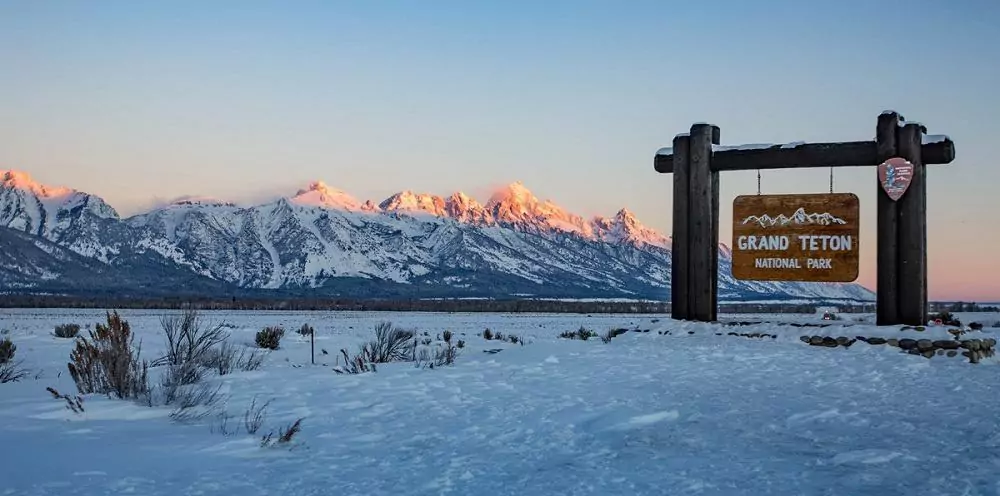
Grand Teton National Park
- Max Length: 45 Feet (RV) 35 feet (trailer)
- Price Per Night: $32 ($31 Group)
- Reservations: Group Sites Only.
- Dump/ Fill Station: Yes (in Season)
- Location: North Central part of the park. Just off HWY 89 near Jackson Lake.
- Notes: 346 (11 Group) Open Year-round.
- Max Length: 45 feet (RV) 35 feet (trailer)
- Price Per Night: $73 to $83
- Reservations: Yes (all sites – book early)
- Location: North Central part of the park. Just off HWY 89 near Jackson Lake.
- Notes: 112 Sites. Open Year-round.
- Max Length: 45 feet (RV) 30 feet (trailer)
- Price Per Night: $30 to $55 (electric)
- Hookups: Yes (36 sites have electric)
- Reservations: 5 sites are reservable (rest FCFS)
- Location: Southeastern part of the park. About 11 miles north of Jackson, on the Gros Ventre Road
- Notes: 300 sites, Open year-round
- Max Length: 45 feet (RV) $35 (trailer)
- Price Per Night: $75
- Hookups: Yes full hookups on all sites.
- Location: Extreme northern part of the park, near the South Entrance to Yellowstone National Park.
- Notes: 97 RV sites. (Open year-round)
- Max Length: 30 feet (RV) 20 Feet (Trailer)
- Hookups: No- no potable water
- Reservations: No- all sites FCFS
- Dump/ Fill Station: No- No potable water.
- Location: Northern part of the park- near Jackson Lake. Just off HWY 89
- Notes: 60 Sites. Open year-round
- Max Length: 30 feet (RV) 20 feet (Trailer)
- Price Per Night: $33 to $55 (electric)
- Hookups: Yes (25 sites have electric)
- Reservations: No – all sites FCFS
- Location: Central area of the park. SE corner of Jackson Lake, off Teton Park Road
- Notes: 81 sites. Open year-round
Yellowstone National Park
- Max Length: 40 feet combined length (limited sites)
- Price Per Night: $27
- Reservations: Yes – all sites reservable – book early
- Location: Southern part of the park, north side of Yellowstone Lake, just off the Grand Loop Road.
- Notes: 432 sites (4 group) Open mid May through mid September- weather permitting
- Price Per Night: $32
- Reservations: Yes – all sites reservable-Book early
- Dump/ Fill Station: Yes (seasonal)
- Location: Off the Grand Loop Road near Canyon Village
- Notes:273 sites. Open mid May through mid September- weather dictates open/close dates.
- Price Per Night: $79
- Hookups: Yes – all sites have full hookups.
- Reservations: Yes – all sites reservable
- Dump/ Fill Station: Yes -seasonal
- Location: North side of Yellowstone Lake where East Entrance Road meets the Grand Loop Road.
- Notes: 340 sites.
- Dump/ Fill Station: Yes – seasonal
- Location: Western side of Yellowstone Lake on the South Entrance Road near West Thumb
- Notes: 430 sites (8 Group) Open early June to mid September.- weather dictates open/close dates.
- Max Length: 40 feet combined length (limited sites)
- Hookups: No (potable water is available in season)
- Dump/ Fill Station: No – potable water is available in season.
- Location: Northern part of the park – on the Grand Loop between Norris and Mammoth.
- Notes: 70 sites. Open mid June to mid September – weather dictates open/close dates.
- Hookups: No- potable water is available in season
- Dump/ Fill Station: No- potable water is available in season
- Location: Southern part of the park between the South Entrance and West Thumb
- Notes: 85 sites. Open Mid June to Late Oct. weather permitting.
- Max Length: 30
- Reservations: Yes -all sites are reservable.
- Location: On the Grand Loop Road where it meets the West Entrance Road.
- Notes: 278 sites. (3 Group sites) Open late April through mid October. weather dictates open/close dates.
- Max Length: 30 feet
- Reservations: Yes- all sites reservable.
- Location: Northern part of the park. On the Grand Loop Road where it meets the North Entrance Road
- Notes: 85 sites. Open year-round.
- Max Length: 50 feet
- Hookups: No- potable water seasonally
- Reservations:No- all sites FCFS
- Dump/ Fill Station: No- potable water seasonally
- Location: Western part of the park, on the Grand Loop Road just north of Norris Junction.
- Notes: 111 sites. Open mid May through September- weather dictates.
- Max Length: None given- “some long pull-thru’s.”
- Hookups: No- potable water available in season.
- Dump/ Fill Station: No- potable water available in season.
- Location: Northeast part of the park, on the Northeast Entrance Road.
- Notes: 27 sites. Open mid June through September- weather dictates.
- Hookups: No- potable water available in season.
- Dump/ Fill Station: No- potable water available in season.
- Location: Located 5.5 miles (8.8 km) east of Tower-Roosevelt Junction, 2 miles down a dirt road.
- Notes: 16 sites. Open mid June to mid October
- Max Length: 30 Feet
- Reservations: No- all sites are FCFS
- Location: Northern part of the park, off the Grand Loop Road 3 miles south of Tower Junction.
- Notes:31 sites. Open early June through early September- weather dictates.
(1) KOA, 2019 North American Camper Report, https://koa.com/north-american-camping-report/
(2)Allstays, Overnight Parking, https://www.allstays.com/c/camping-overnight-rv-parking.htm

Frank Foley
Frank is the Head Hubby, Daddy, and Fix-It Guy of the Roving Foleys clan. He ia an avid traveler and has spent over 5 years traveling full time with his family. he loves helping others learn about the RV life. He has also traveled in Europe, Asia, and Australia with his wife Grainne.

24 thoughts on “2024 Ultimate Guide To National Parks RV Length (Huge Time Saver!)”
It’s a shame you don’t have a donate button! I’d without a doubt donate to this fantastic blog! I suppose for now i’ll settle for bookmarking and adding your RSS feed to my Google account. I look forward to brand new updates and will talk about this blog with my Facebook group. Chat soon!
Thanks a ton for the vote of confidence!
Hi! Question about trailers. Is Max length for the combined length of a trailer and the truck towing the trailer? Or just the trailer? Thank you!
Great question Julie. As a general rule, the Max Length is for just the RV parked in the site. In other words a 30ft trailer is the same as a 30ft motorhome. That being said, ALWAYS call the park while planning and double check. You would think there would be a consistent dimension protocol throughout the NPS but there is not. Each park has it’s own way. Besides that- talking to a real person will almost always be worth the effort- no telling what you will find out- details that you would never see on the park page. We once stayed a couple of weeks at Angostura Reservoir in South Dakota (near Mt Rushmore and Custer State Park .) . It is a State Recreation Area with several campgrounds- all of which are “electric only.” Normally we would not have stayed there but I called to talk to them and found out that, since it was late in the season, some of the Camp Host sites had been vacated. The site we got was full hookup, AND was an ADA site. This meant it was fully paved and included a built in fire pit. One of the nicest site we ever had.
Thanks for this fantastic information! I am a beginner in the research phase (have never camped yet) so this may be a dumb question but.. With regards to maximum length, you mention “standard”, “premium”, and “combined”. Can you explain exactly what this means? Thanks.
The terms “Standard” and “Premium” usually refer to the size of the site, or the amenities available. Since there are no consistent description rules about sites throughout the NPS (each park writes it’s own language) I would recommend always contacting the park in question directly to make sure you have a clear understanding.
The term “combined” usually refers to an RV and tow (or towed) vehicle. In other words the total combined length of your entire rig. Again -double check with the park directly.
It would be nice if the state where each park is located were included.
HI Norman, Not sure I am following- the article is organized by state- alphabetically.
We are planning our retirement way ahead and looking to get a 39 ft Class A Toy Hauler for an ATV (or two) while pulling a 21 to 25 ft boat. Do you have a list of parks with trails for riding ATVs and/or campsites with boating?
We have not done a list for those specifically, however, the NPS does have a page listing parks for watersports: https://www.nps.gov/subjects/watersports/visit.htm For the ATV trails- I do know if there is a page specifically for that, but you can try the “Search By Activity” page and may be able to search. https://www.nps.gov/findapark/advanced-search.htm?a=8&p=1&v=0
This is such a comprehensive list. Thank you for taking the time to put in so much work for all this information.
Awww so glad you enjoyed it Tonya, thanks for stopping by.
Hello, just wanted to mention, I loved this blog post. It was helpful. Keep on posting!
Redwood National Park does have 3 camogrounds with RV camping. It is the only national park co-administered by the state parks, so the campgrounds are listed on the California State Park website.
Jedediah Smith Redwoods SP Del Norte Redwoods SP (Mill Creek Campground) Prairie Creek SP
RV max length is 25′ and trailer is 21′ feet for Jed Smith.
Thanks for the heads up- UPDATED.
I am a bit confused on whether to include the length of the tow vehicle or not. In one place you mention that the Restriction applies to Length of RV + Tow Vehicle, but in a comment you mention that MaxLength only applies to the Length of the RV. Which one is it?
I believe the mention of both RV and tow vehicle was about the term “combined” length. It is a bit confusing and you can believe me, it was frustrating trying to find consistency in putting this article together. The NPS does not seem to use any kind of consistent terminology so what I did here was to be as consistent as possible, and tell people to ALWAYS double check with the park you want to stay at. You will get better specific information that way.
However, for purposes of the article, if there is ONLY one MAX Length mentioned- it is for the RV. On some there are 2 lengths- one for RV’s (drivable) and one for trailers (TT and 5ers). Obviously that does not include the tow vehicle since the trailer lengths are always shorter. On others they actually give a “Combined” length which obviously includes both. I hope that helps, but really… CALL THE PARK!
Hello, Great article and reference information! We are a family of 6 considering our very first RV trip so forgive my newbie question. Do the restrictions only apply if you are staying in the park or does it also apply to visiting? For instance, can we drive a 32 foot long RV into a park that can only accommodate 27 foot long RV’s as long as we drive out before the end of the day? Thanks, Jon
The length restrictions we mention in the article apply to campsites, so only if you are staying. Just double check that the park has day parking that will accommodate you. Most do, but always check.
The topic of travel is very much in demand! Traveling is a great joy for every person! Thanks for the article!I agree with this information! Everything is great! The article helped me!
Thanks, hope it was helpful!
Planning ahead as buying our 35′ Pace Arrow next week. When towing car exceeds length is there room on campsite park or even on campground property? Thanks for all your efforts.
Many times yes, just call ahead and check. Usually there will be a parking area nearby.
THANK YOU SO MUCH FOR TAKING THE TIME TO WRITE ALL OF THIS INFOMATION. WE JUST PURCHASED A MOTORHOME AND DON’T KNOW ALL OF THE IN’S AND OUT’S YET, SO THANK YOU AGAIN, MUCH APPRICIATED.
Leave a Comment Cancel Reply
Your email address will not be published. Required fields are marked *
Save my name, email, and website in this browser for the next time I comment.
- More Networks

Best RV Length for National Parks (2022)
- August 7, 2021
Table of Contents
We may recommend products or services that our Readers will find helpful. Affiliate commissions are at no extra cost to you. And they don’t influence what we think! Thanks for supporting this website! For more information, please read our Privacy Policy and Terms of Use.
The mountains are calling, and I must go. John Muir Tweet
You’ve been summoned.
Drawn to the majesty of the alpine Rocky Mountains, the grandeur of Acadia, the balds of the Smokies or the alpine lakes of Glacier. National Parks are America’s greatest idea, and you can’t resist the temptation of Mother Nature’s siren song.
Visiting a National Park in an RV allows you an up-close-and-personal experience with the park’s weather, scenery and wildlife. 250-350 million people visit America’s National Parks every year. Most travel by automobile, but you know the secret: the best way to experience the parks is by RV!
But … how big can you go?
Because in case you don’t know, most National Parks have restrictions on maximum RV length.
Now, this can (and should) actually be broken down into several questions:
- How big of an RV do you need for the trip you want to take?
- How heavy and large of an RV trailer are you comfortable driving?
- How long of an RV is recommended for National Parks?
Let’s talk about Question Number Three.
The optimal length for a towable or motorhome RV in a National Park campground is 25-30 feet.
That’s the short rule of thumb: I f you want to visit lots of National Parks for your bucket list, a safe bet is 30 feet or less. Scroll down to learn more about whether this applies to just your RV or if it also includes your tow vehicle.
Important Things to Know!
- Many parks, particularly the more popular ones, commonly allow RVs up to 40 feet in total length.
- Some parks even allow RVs up to 50 feet – or no maximum length whatsoever!
- Campgrounds may have separate length limitations for motorhomes and trailers (e.g. motorhomes 40 feet, trailers 35 feet). When this is the case, allowable length for trailers is usually 5-10 feet less than motorhomes.
- RV length limitations often (but not always) jump in increments of 5-ft (e.g. 25, 30, 40 ft allowed).
- On the smaller end, some NPS campgrounds limit RV length to 22-25 feet (or even smaller!). These campgrounds tend to be more remote, smaller, without any hookups, and may require high-clearance vehicles for access.
As a rule, the more rugged the terrain, the more limited the RV length.
And don’t forget about those slide-outs! Check width restrictions as well. Restrictions may vary by campsite due to tree location and turn radius. When in doubt, call ahead.
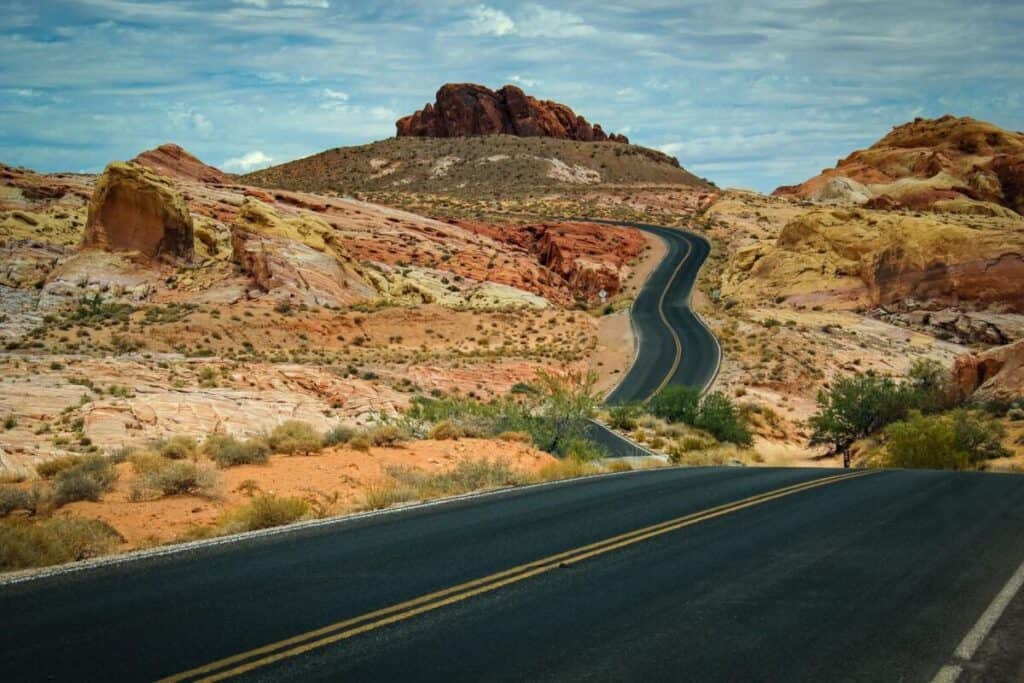
If your RV is up to 35 feet long, you can usually find a spot at most National Parks.
According to Camper Report, RVs up to 35 feet in length will fit in 73% of National Park campgrounds. And since many Parks have multiple campgrounds, there’s a pretty good chance you’ll find a home for the night.
Your odds are still decent up to 40 ft. It is reported that roughly half of all NPS campgrounds accept RVs up to 40 feet in total length. You’ll be restricted to more developed campgrounds in more popular parks, however, so the odds of reserving a spot become slim. Everyone wants the same spot you do!
Camping opportunities take a nosedive after 40 feet. Only the odd NPS campground here and there will accept behemoth RVs. Even where no maximum length is posted, you’ll find anything 40 feet and over will be a tight squeeze. You may find yourself dammed up on a hairpin turn or in a zero-clearance parking spot.
Call ahead! Some sites have “fudge room.”
No one really likes this answer. Unfortunately, it really is the best advice.
Some sites only allow 30-ft combined length, but guess what?! – there’s room to unhitch and park beside your RV (but you’re only allowed up to two vehicles per site, remember).
Meanwhile, other sites only allow 30-ft combined length – period. No room to park beside your camper. Sorry.
But maybe others have a campground parking lot that’s a 100-yard walk away!
Or maybe there’s a public parking lot that’s a 5-15 minute drive away.
Also, let’s just say that some of the numbers posted online by the National Park Service aren’t known for their accuracy. Or maybe they haven’t been updated in 8 years. Who knows?
So do yourself a favor and call ahead! Talk to a park ranger or campground host and get the goods. You may be pleasantly surprised (or you may avoid a tremendous headache).
Combined vs. Total Length?
Don’t get confused by combined vs. total length!
Body Length
First of all, you should know that actual lengths rarely correspond to “sales” lengths! This is particularly true for travel trailers. The sales length, or the length indicated on a floorplan name, is often the nominal size of the RV body only.
More often than not, a “24-ft travel trailer” only has a body length of 24 feet. The body length is the front-to-back measurement of the box that sits on the trailer frame.
Total Length
The total length of the RV is the actual tip-to-tail measurement, body and frame included.
In the case of a travel trailer, the total length of the RV, once the frame is added, is usually about 3-5 feet longer.
Combined Length
The combined length includes the total length of the RV and the total length of the tow vehicle.
For instance, say a trailer has a total length of 26 ft. When towed with a 16-ft pickup truck, the two have a combined length of 26+16 = 42 feet.
Or if you drive a motorhome with a toad, the combined length includes both.
Do not assume whether a length restriction applies to total RV or combined length!
For instance, most campgrounds restrict total length . If you can unhitch your towable RV and move your tow vehicle out of the way, more power to you.
*This isn’t true for every campground. Some campsites have no separate parking area. In this case, the combined length is the most restrictive.
For details on how manufacturers will measure your RV, visit this page from RVIA.
How to Measure Different RVs?
Many different vehicles fit under the RV umbrella. The biggest division within these vehicles is:
- A) Whether or not you will need an extra vehicle to tow it.
- B) What type of hitch is required to tow or haul.
If we split up RV types by how they are measured, we have four types: Motorhomes, towables, 5th wheels, and truck campers. These are all measured differently.
How Do I Measure the Length of My RV?
Measuring an older rv.
it is a good idea to bring a measuring tape when you go to the retailer or do some research on your own as some manufacturer numbers are more a way to sort the different sizes than exact measurements.
For instance, the Puma 23-RBFQ model is listed as 23 feet long. In reality, it is 28 feet. Five feet can easily decide whether or not your RV will be accepted into a campground, and you do not want to find this out when you pull in after a long day of driving!
The manufacturer may provide measurements, but you should confirm with a measuring tape.
Hint: Nothing makes the job easier than an open reel measuring tape!
Some will recommend adding a few feet, just to make sure you’re covered. This may be helpful if you are new to driving an RV, but in general go with the stated/ measured number and then talk with someone ahead of time to determine any potential issues.
Measuring a New RV?
If you’re buying a new RV, you’re in luck! As of January 1, 2021, all RVIA-approved Recreational Vehicles are required to have a sticker adjacent to the Cargo Capacity label that states: “Recreational vehicle overall length ______ as manufactured.”
Thie measurement is generally extremity to extremity but does not include ladders, handles, accessory receivers, spare tires, etc.
RV Motorhome

Motorhomes offer the all-in-one option and therefore range greatly in size. Smaller class B and C motorhomes are often similar to driving an SUV (going down to 18 ft) with popular sizes ranging 20-28 ft. Large class As can feel like a semi-truck at 25 to nearly 45 ft. Remember part of that space is taken up by the actual driving area (driver’s seat, steering wheel, dashboard, passenger seat, etc.).
Towable Trailers

Towable trailers are your best bet if you’re looking for something smaller that could be towed by an SUV or mid-size truck, with options ranging from 12-40 ft. Towable trailers include travel trailers, fiberglass campers, pop-up campers, and (almost) everything in between!
How to Measure a Motorhome?
Motorhomes are the easiest RV to measure! Simply measure from tip to tail, from the front bumper to the rear bumper. This is the same for Class A, Class B, or Class C motorhomes. This length should be stated on the vehicle specifications as well.
How to Measure a Travel Trailer?
Towable trailer lengths are a common source of confusion. RV manufacturers may market the size of the RV by its interior length, exterior body length, or tip to tail length!
What you care about is total length, including the chassis frame. Measure from the tip of the trailer coupler to the rear bumper. For newer RVs, this length should be on a unit sticker as well.

Fifth Wheels are typically big, coming in sizes ranging from 25-45 feet, which allows for full-time living including bedrooms, and potentially washers, dryers, and dishwashers. They will also need a powerful truck to tow them, but are typically considered better than TTs in towability.
Truck Campers

Truck campers are sold as either slide-in or flatbed models, with the first being far more popular. They can also be hardshell or expandable. They come as small as a bed cover to a miniature mansion!
How to Measure a 5th Wheel?
When measuring a 5th wheel, measure from the tip of the overhanging nose to the rear bumper. This is the total length (imagine a hollow box the camper could fit inside of). Measuring directly off the nose could be a challenge, so it’s easier to project the nose on the ground and then measure from there. For newer RVs, this length should be on a unit sticker as well.
How to Measure a Truck Camper?
You’ll rarely have a length problem with a truck camper. But if you do need to measure one, measure from the front bumper of the tow vehicle to the rear bumper of the camper. If you’re just looking for the tip-to-tail length of the camper itself, you can find that on the VIN sticker.

FAQs about RVs in NPS Campgrounds
National park length limitations at-a-glance.
While the restrictions vary from park to park, the average maximum length permitted is 27 feet with about half having at least one campground allowing RVs up to 40ft.
In general, RVs between 25 and 30 feet are recommended to maximize your options as over 90% of parks permit 25 footers and 84% permit 29 footers.
IMPORTANT TIP: Most parks count the COMBINED length of your RV and your tow vehicle in their restrictions. This also applies if you are towing a car behind a motorhome.
Always call/ contact the park ahead of time to confirm these details and discuss any areas of potential concern.
Why Are NPS Campsites Small?
Many NPS campgrounds hail from the ’30s through the ’50s, when RVs were much smaller. These campgrounds can trace their heritage to the Civilian Conservation Corps or the construction and travel boom following World War II. This was the era of Scotties, Shastas and “canned hams.”
Today, the average length of a towable RV is 27-28 feet and creeping upwards.
Finding the balance of what you need and want with restrictions and road conditions is vital to a good trip.
What are Common Park Road Conditions?
Most trafficked roads in National Parks are paved. Campground loop roads, however, are usually maintained gravel or dirt.
All bets are off when it come to backcountry sites. Access roads maybe paved, soft road, or high-clearance required. There may not even be a dedicated campground loop road!
Call ahead to confirm any road conditions after inclement weather events. Or find information about temporary road closures at the park website at the National Park Service.
Do National Parks Offer Full Hook-Ups?
Most national parks do not offer full-hookups (water, sewer, electric). Electric-only or water+electric are far more common. Dump stations are typically shared by an entire campground (or even entire park). Smaller parks may have no dump station at all.
The following national parks all offer full hookups:
- Arizona | Grand Canyon National Park: Trailer Village
- California | Death Valley National Park
- Mesa Verde National Park | Morefield Campground
- Texas | Big Bend National Park: Rio Grande Village RV Park
- Wyoming | Yellowstone National Park: Fishing Bridge RV Park
- Wyoming | Grand Teton National Park: Colter Bay RV Park
Several other campgrounds, such as the Everglades, Badlands and Gulf Islands, offer partial (electric and water only) hookups.
Do National Parks Offer Pull-Through Sites?
Unfortunately, I recommend you become an expert in backing in before reserving a spot at a National Park! Back-on sites are par for the course. Bring a set of walkie-talkies and maybe even a rearview camera.
Will National Parks Measure My RV?
Generally, no, no one will pull out a tape or stick and measure your RV. However, if your rig is obviously larger than what’s allowed, you may be asked to leave. That’s for your safety and the safety of everyone around you.
Do I Need to Reserve My NPS Campsite?
Booking a spot in a campground is highly recommended.
Many of the national parks offer multiple campgrounds with a range of maximum RV lengths, but spots fill up. Especially if you have a larger vehicle, it is best to book a spot early as those campgrounds may have a limited number of those spots available.
No matter what size your RV is, it’s best to check ahead of time which campground will work for you and reserve a spot early.
NPS reservations are first-come, first-served or reserved through ReserveAmerica.com. Some campgrounds have walk-in only sites; some don’t. Visit ReserveAmerica.com to check availability, pricing, location and restrictions.
Where Can I Find Easy References for All the Parks?
You can use the National Park Service’s Park Finder Website to sort and filter different options and then book your spots.
There are also a number of online resources that have compiled easy guides for the most popular parks. The Roving Foleys compiled an entire list of RV length restrictions by campground. You can check it out here at TheRovingFoleys.com
Considering all of these questions before you even go to your first RV retailer will ensure that you are best equipped to make the best decision for your trip.
What Else Should I Know About the Campgrounds that Allow Bigger Rigs?
- The campgrounds that do accommodate bigger rigs typically have a smaller number of spots available.
- There may also be an upcharge for these premium spots.
- You may be able to get to the campground, but travelling to other sites in the Park may be restricted to only smaller vehicles.
- Planning ahead of time is always important with RVs and more so the bigger you go.
What About Road Access to the Parks?

Longer RV Pros
- More lounge room
- More cargo and storage
- You can escape from the kids
Longer RV Cons
- Difficult to drive and park
- Not allowed through many tunnels or mountain roads
- Prone to sway from crosswinds
What About High-Clearance Roads?
Driving a big rig is always going to be a concern if you are off-roading. This can even include general roads within a park which are often narrow, unpaved, and/or on an incline. Do your research on what type of terrain is expected both arriving and departing the campsite as well as the general area.
Many parks allow bigger rigs in their designated campsites, but other roads within the park may have length restrictions, which will restrict where you can go with your RV.
Utilizing a TT or a 5th Wheel would give you the opportunity to leave the RV at the campsite and explore in your tow vehicle.
What About U-Turns and Sharp Bends?
While some of these roads may be tight, if the campground can accommodate a vehicle of your size, your vehicle should be able to make the turns to get into the site as long as you follow the routes to the campsite and keep an eye out for roads that would prohibit a rig of your size.
What About Maximum Height?
You won’t typically find overpasses and bridges in a National Park, but you’ll often come across low-hanging trees, rock arches and natural features. Read about road conditions and restrictions beforehand.
In the Zion-Mt. Carmel tunnel, for instance, any vehicle that is 7 feet 10 inches (2.4 meters) in width and/or 11 feet 4 inches (3.4 meters) in height or larger is required to have a tunnel permit and may only pass through the tunnel during restricted hours.
What About Arrival and Departure Angles?
RVs with excessive overhangs and/or short wheelbases (here’s looking at you, Class A and Super C motorhomes) may struggle with steep inclines.
Low-riding RVs can easily get stuck or high-centered on steep or unmaintained roads. You might need to invest in larger tires, a lift kit, or an axle flip to increase your ride height (but don’t make your rig too tall!).
In general, plan ahead and do your research. Know the capabilities of your RV. Practice with it ahead of time if possible. Feel free to reach out to the Park ahead of time and ask questions about the routes into and out of the campsite/ park to help spot any potential areas to avoid.
Andy Herrick is a blogging nerd, #8 Enneagram, wannabe bread baker, INTJ, RV industry professional, and small business entrepreneur. He can be found hanging out with his lovely wife and family, skiing, cycling, climbing, hiking, and convincing anyone who will listen why dogs aren’t really that great of pets. Also, he runs this website.
- Andy https://changingears.com/author/andrew-herrick/ RV Salvage Yards and Part Stores in Hawaii
- Andy https://changingears.com/author/andrew-herrick/ RV Salvage Yards and Part Stores in Ohio
- Andy https://changingears.com/author/andrew-herrick/ RV Salvage Yards and Part Stores in North Carolina
- Andy https://changingears.com/author/andrew-herrick/ RV Salvage Yards and Part Stores in New York

RV Moisture Control Issues
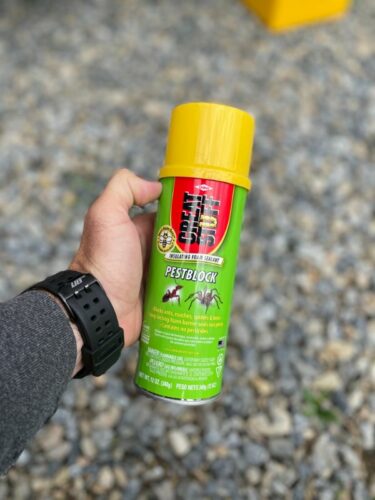
Get our best delivered!
First Name*
Email Address*
- Calculators
- Manufacturers Lists
- Affiliate Partners
- Clubs & Memberships
As an Amazon Associate, this site earns from qualifying purchases. We may recommend products or services that our Readers will find helpful and convenient. Affiliate commissions are at no extra cost to you. Thanks for supporting this website!
Copyright 2023 – Changing Gears (SRVS) ALL RIGHTS RESERVED
We've teamed up with the National Park Foundation - join the movement to protect our national parks, donate at checkout!
The Ultimate Guide to RVing in National Parks
by Bill Fink | Oct 9, 2020
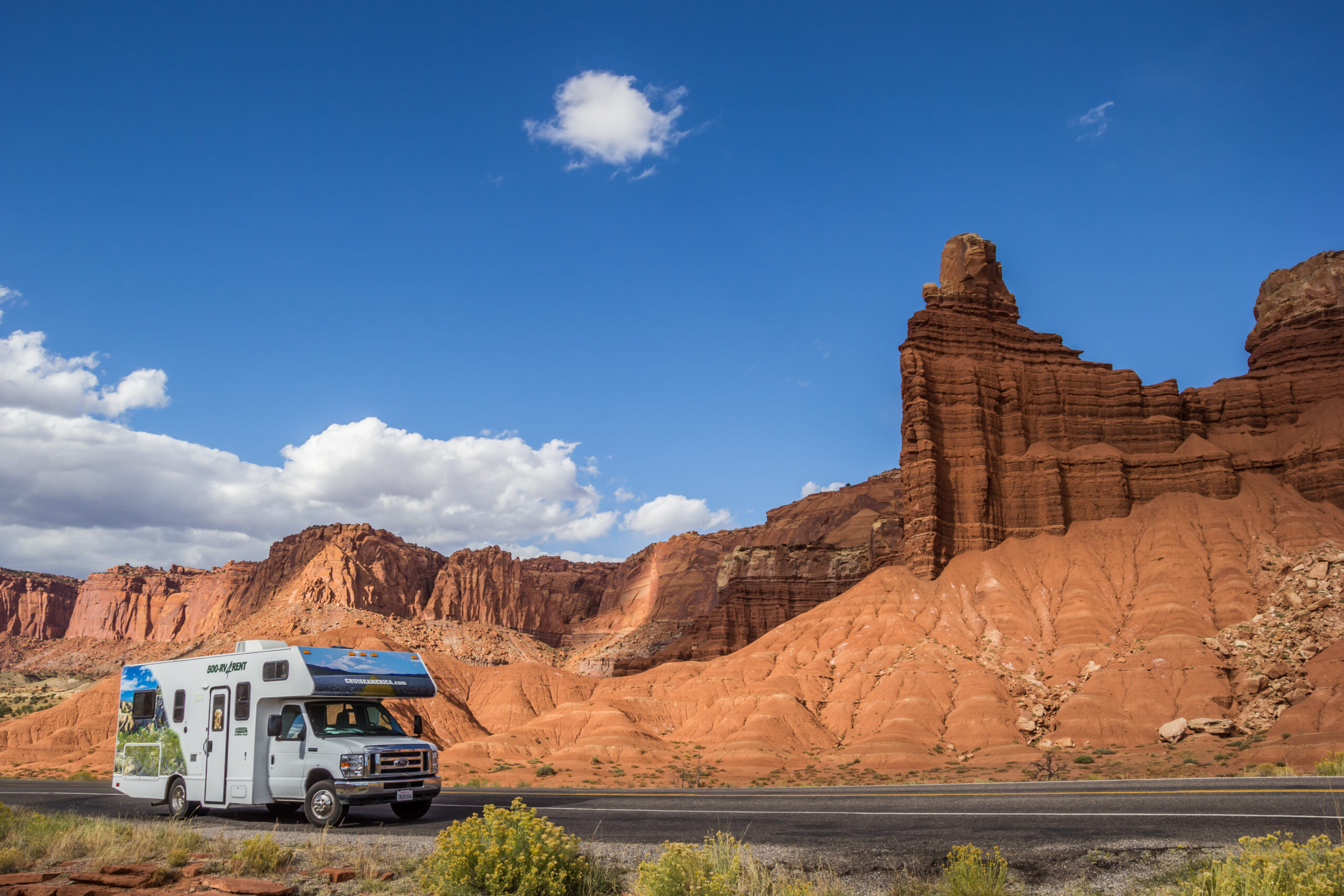
- Skip to primary navigation
- Skip to main content
- Skip to primary sidebar
Camper Trailer Report
Travel Trailers and RVs
Best RV Size for Fitting Into National Park Campsites.
By Mark on July 25, 2021
In this article, you will learn what are the best RV size for fitting into National Parks in the US.
Where do you escape for a weekend between the busy work schedule? All cities offer almost the same leisure that probably is already available in your city. The best option then is to go to the national parks and enjoy a weekend with family surrounded by nature and free from polluted air. As the national parks don’t have buildings and lodges to stay in, people must depend on staying in tents, trailers, or recreational vehicles. All the national parks have specific spots for camping and parking recreational vehicles (RVs) and trailers.
RVs are good to have and comfortable to stay in. They offer comfort, space, and security. But many people find that the RVs they purchase cannot be parked at many of the national park sites. One needs to consider this before buying an RV.
A case study shows that the optimal RV length for camping in national parks is 35′ or less. With this size, you can always find a spot to handle your rig in most parks. Hence it can be safely concluded that the ideal length for an RV should be 35 feet this can be taken as the broad guideline while purchasing an RV.
Best RV size for traveling.
Please study the road to the place you will be visiting often. There are steep winding mountain roads where some of the big-sized RVs may not be able to go. It is better to know the conditions including low-clearance areas.
Suddenly finding yourself at a place where you cannot proceed further and a compulsion to take a U-turn is unpleasant.
Most of the narrow mountain roads are not suitable to take U-turns with big-sized rigs. There are travel guides which can give you information about most of the routes to the national parks.
> You may also like: 45 RV Accessory Must-Haves for Your Travel Trailer <<
A case study shows that the best RV size for traveling is between 25′ and 30′.
Different national parks have campsites that have parking spaces of different sizes. So, it is imperative to know the size of the parking lot and the size of your RV.
It is wise to measure the vehicle yourself and not depend on the specification given by the manufacturer. You should measure the length, width, and height of the RV including the slide-outs.
If you are using a fifth wheel, you need to measure the total along with the tow vehicle. A longer RV may give a lot more comfortable. But one doesn’t want to find out that they can’t park their vehicles on the spot they are visiting.
Please check the weight of the RV if you are buying a trailer or a fifth wheel.
You need to know whether the pick-up or car which you use for towing will be able to take the load. If you are buying a motorhome this issue won’t arise.
But if you plan to tow a car for driving around then you should know the towing capacity of the motorhome.
Height may not be a big issue in most places. But there are roads with low-clearance areas. It is better to know this beforehand so that you don’t find that you have to take a different route.
Though other dimensions are important to an extent, it is the length of the vehicle that is the crucial factor to consider when buying an RV.
What Are the Best RV Lengths for National Parks?
All of the following numbers from the list are COMBINED lengths of the tow vehicle and the trailer so you need to add the length of the RV and the vehicle together.
Here are the averages lengths: RVs up to 12′ fit in all national parks, from 19′ to 25′ in length fit in 91%, from 25′ to 32′in length fit in77%, from 32′ to 37′ in length fit in 58% and RVs up to 40′ in length fit in 50% of all national parks in the US.
To make things easier I decided to study the size restrictions of the most popular national parks in the country.
RV Size Limits for Most Popular National Parks
Most sites in the Yellowstone national park permitted a size of 40 feet for RVs.
- Fishing Bridge RV Park – Up to 40′ RVs
- Canyon Village Campground – 40′ COMBINED RV length
- Bridge Bay Campground – 40′ COMBINED RV length
- Madison Campground – 40′ COMBINED RV length
- Grant Village Campground – 40′ COMBINED
At the Joshua Tree national park certain campgrounds had a very small allowance of 25 feet. But most other sites could accommodate an RV of size not exceeding 35 feet.
- Black Rock Campground – Half of the sites take in up to 25′ in combined length, and half go up to 35′.
- Hidden Valley Campground – The COMBINED length of RV and towed vehicle or toad is only 25′
- White Tank Campground – The COMBINED length of RV and towed vehicle or toad is only 25′
In the Yosemite Valley 12 sites – six each in Lower Pines and North Pines can take RVs up to 40 feet long. But there are many more sites that can take the size of only up to 35 feet.
At the Redwoods National and State Parks, California the size at the various sites ranges from a maximum of 36 feet to a minimum of 24 feet.
- Jedediah Smith Campground – Trailers 31′
- Mill Creek – Trailers 27′
- Elk Prairie – Trailers 24′,
- Gold Bluffs – Trailers PROHIBITED, motorhomes 24′
At the Great Smoky Mountains, the size of the various sites ranges from 12′ to 35′ for trailers.
- Abrams Creek – 12′
- Balsam Mountain – 30′
- Cade’s Cove – Trailers up to 35′ and Motorhomes up to 40′
- Cataloochee – 31′
- Cosby – 25′
- Deep Creek – 26′
- Elkmont – Trailers 32′, motorhomes 35′
- Look Rock – No limit
- Smokemont – Trailers 35′, motorhomes 40′
At Arcadia National Park
- Blackwoods Campground – 35′ in COMBINED length of the tow vehicle (or towed vehicle) and the RV itself.
- Seawall Campground – 35′ in COMBINED length of the tow vehicle (or towed vehicle) and the RV itself.
At Arches National Park
- Devil’s Garden Campground – 25% of the spots accommodate an RV and towed vehicle combined length of 25′. 25% of the spots take an RV up to 30′, and 25% of the spots can fit an RV up to 40′.
- Archview Campground – Up to 50′ in length, but you have to pay more for these premium spots.
- Moab Valley Campground – Up to 44′ in length, but you have to pay more for these premium spots.
Conclusion:
I wish everyone happy camping and a great time with families.
Related Post: First Time Travel Trailer Owner Tips, Beginner’s Guide.
Related Questions:
The size of the RV is one of the most important factors when it comes to fitting into National Park campsites. Not all of these have campgrounds that will be suitable for your RV. It’s important to know what size park your RV will be able to fit into. Make sure that you’re familiar with the campground restrictions of each National Park beforehand, so you are not caught unawares when traveling through them. Here are most of the questions Rvers ask.
What size RV is allowed in Yellowstone?
Many travelers have been denied entry into this national park for driving non-compliant RVs. What does non-complaint RV mean? It’s an RV with a length longer than 21feet and 8inches or width more than 8feet and 6inches, hence not be allowed to enter.
What is the best length RV for state parks?
RVing offers a lot of freedom. It is the ultimate in nomad-like living! Not all parks and campgrounds have long enough electrical and sewer connections for larger RVs. If you are looking to buy an RV, a 30′ class C might be the perfect size to give you everything that you want without being too big to fit into smaller campgrounds or parks with limited space.
What is the average size of an RV campsite?
The average size of an RV campsite is 30 feet by 50 feet. The typical campsite measures about 28 feet wide, 50 feet deep, and 8 to 9 feet between the front side of one side and the backside of the next.
What is the best size RV to buy?
There are trailers as small as 20 feet long and 5 feet wide, and there are motorhomes that are as long as 45 feet. A good starting point is to decide how many people you can have slept in the RV at one time and if you have a pet or two.
Don’t be pressured into buying an RV that’s just a little bit too big. The fancier an RV is, the higher the price tag will be. It’s better to buy an RV that has fewer extra features and lower monthly payments.
Video Overview: What is the Ideal RV Length for RV Living ?
Video Overview: Best RV Length for Fitting in National Park Campgrounds
What does Boondocking mean?
Boondocking is when the RV parks for free at a destination called boondocking spot. Boondocking itself isn’t illegal; legal requirements vary from state to state or province to province.
> You may also like: Worst 5th Wheel Brands to Avoid <<
Is a 40-foot motorhome too big?
Some people would consider a 40-foot motorhome to be the perfect size for long-term travel as it has all the amenities you need and it’s also small enough to move around. However, there are people who consider a 40’ to be too big and would prefer one that is smaller because they miss out on many opportunities for adventure and it is harder to get into campgrounds at most parks.
Video Overview: Is a 40+ Foot Motorhome Too Big For National Parks?
Can you drive an RV through Arches National Park?
Yes, according to the park service’s website “all vehicles including RVs are allowed on all roads unless specifically posted otherwise.” However, they would prefer if visitors didn’t.
Video Overview: Arches National Park Utah: Travel Tips for a Single Day [4K]
Can I park my RV overnight at Cracker Barrel?
Yes, you can park your RV overnight at Cracker Barrel. Cracker Barrel has always been a popular place for both families and RVers alike, due to their reasonable prices on food.
> You may also like: 25 Best National Parks in the USA <<
Related Posts:

Sharing is caring!

What RV Size Is Best for National Park Campsites?

The best of anything is usually a matter of opinion. The best RV size for national park campgrounds, however, is not. That’s because, while a large RV provides a spacious and comfortable place to stay, many buyers of very large RVs regret their purchase when it comes to finding a campsite. If your RV is too long, state and national parks are notoriously difficult to camp in.
I’m currently looking for a Class A RV. So I decided to look into the best RV size for national park campgrounds across the country. Here are the results of my research.
Is Length Important? Is there an optimum RV size for national park camping?
After much research, I believe that the best RV size for national park campsites is 35′ or less. At that size, almost any national park in the country will have a spot large enough to accommodate your rig.
The lengths listed below are the COMBINED lengths of the tow vehicle and the trailer/fifth wheel, or of the motorhome and the towed vehicle. As a result, you must add the length of the RV and the vehicle together.
- Keep in mind that RV manufacturers frequently inflate the length of their vehicles. Take out a tape measure and measure your RV to find out—probably it’s longer than the manufacturer advertised.
Table of Contents
LENGTH OF NATIONAL PARK RV CAMPSITES
- RVs up to 12′ in length fit in every national park campground in the United States, although there are a few campgrounds that don’t allow RVs at all and are tent only.
- RVs up to 19′ in length fit in 98% of all national park service campgrounds.
- RVs up to 25′ in length fit in 93% of all national park campgrounds
- RVs up to 29′ in length fit in 84% of all national park campgrounds
- RVs up to 32′ in length fit in 81% of all national park campgrounds
- RVs up to 35′ in length fit in 73% of all national park campgrounds
- RVs up to 37′ in length fit in 60% of all national park campgrounds
- RVs up to 40′ in length fit in 53% of all national park campgrounds
- RVs up to 41′ in length fit in 7% of all national park campgrounds
WARNING FOR RVS LONGER THAN 40 FEET
Keep in mind that many parks will only have a few sites of this size. If reservations are available, book far in advance; otherwise, you risk not having the large RV campsite your rig requires.
List of Popular National Park Campgrounds and RV Length Restrictions
Many of the best national parks, but not all, can accommodate large RVs. The best RV size for national park campsites is determined by your destination. Learn how to measure the length of your RV to determine where you can go. Then, take a look at this list of the most popular national parks and their RV campground size limits.
There is no shortage of camping locations in the National Park Service — there are over 130 park units to choose from! — The National Park Service
ACADIA NATIONAL PARK CAMPSITE SIZES
- The combined length of the tow vehicle (or towed vehicle) and the RV at Blackwoods Campground is 35 feet. Slide outs must be able to fit into the available space. So, if you have a toad (car towing behind the motorhome), you can’t really get in with anything longer than 29′ for the RV itself to fit the letter of the law, but some RVers who went there said they got away with being a little longer without issue.
- The combined length of the tow vehicle (or towed vehicle) and the RV at Seawall Campground is 35 feet. Slide outs must be able to fit into the available space. If you have a toad (car towing behind the motorhome), you can’t get in with anything longer than 29′ for the RV itself.
SIZES OF ARCHES NATIONAL PARK CAMPSITES
- Devil’s Garden Campground – 25% of the spots can accommodate a 25-foot RV and towed vehicle. 25% of the spots can accommodate an RV up to 30 feet, and 25% of the spots can accommodate an RV up to 40 feet.
- Archview Camping Area – Up to 50′ in length, but these premium spots are more expensive. Because it is not owned by the National Park Service, it is more accommodating.
- Moab Valley Camping Area – Up to 44′ in length, but these premium spots are more expensive. Because it is not owned by the National Park Service, it is more accommodating.
- We recently published an article that listed 17 unforgettable RV camping spots in Utah. To learn more about these breathtaking sights, follow this link.
SIZES OF CAMPSITES IN THE BADLANDS NATIONAL PARK
Cedar Pass Campground – No official rules were discovered. Campers who visited said it was large enough for even the largest RVs.
SIZES OF CAMPSITES IN BRYCE CANYON NATIONAL PARK
- Pines Campground – There is no official rule, but visitors have reported no problems parking 40-foot RVs.
- North Campground – The official limit is 40 feet, but visitors say that 40 feet would be a tight squeeze.
SIZES OF DENALI NATIONAL PARK CAMPSITES
- Riley Creek Campground – You can get up to 40 feet if you pay for a premium spot. The standard spot is 30′.
- Savage Campground – You can get up to 40 feet if you pay for a premium spot. The standard spot is 30′.
- Teklanika Campground – Can accommodate boats up to 40 feet long. Here is a link to a recent article in which we listed 17 unforgettable camping spots in the beautiful state of Alaska.
SIZES OF CAMPSITES IN DEATH VALLEY NATIONAL PARK
- Sunset Campground – Can accommodate boats up to 40 feet long.
- Furnace Creek Campground – Some sites are up to 40 feet long.
SIZES OF CAMPSITES IN EVERGLADES NATIONAL PARK
- Flamingo Campground – Can accommodate boats up to 45 feet long.
SIZES OF GRAND CANYON NATIONAL PARK CAMPSITES
- Railway Campground – Up to 47 feet in total length (motorhome and toad or fifth wheel and tow vehicle)
SIZES OF CAMPSITES IN GRAND TETON NATIONAL PARK
- Colter Bay RV Park – There is no real limit. Some of the spots will accommodate a 43-footer with a tow vehicle.
SIZES OF SMOKY MOUNTAINS CAMPSITES
- Cade’s Cove – Trailers up to 35′ and Motorhomes up to 40′ Abrams Creek – 12′ Balsam Mountain – 30′
- Cataloochie 31′ Cosby 25′
- Deep Creek – 26′ Elkmont – 32′ trailers, 35′ motorhomes
- Look Rock – No bounds
- Smokemont – Trailers 35 feet long and motorhomes 40 feet long
SIZES OF CAMPSITES IN JOSHUA TREE NATIONAL PARK
- Black Rock Campground – Half of the sites can accommodate up to 25 feet of combined length, and the other half can accommodate up to 35 feet.
- Hidden Valley Campground – The total length of the RV and the towed vehicle or toad is only 25 feet.
- White Tank Campground – The total length of the RV and towed vehicle or toad is only 25 feet.
SIZES OF REDWOODS NATIONAL PARK CAMPSITES
- Jedediah Smith Campground – Trailers 31 feet long, motorhomes 36 feet long
- Mill Creek – Trailers 27 feet long, motorhomes 31 feet long
- Elk Prairie – Trailers 24 feet long and motorhomes 27 feet long
- Trailers and motorhomes larger than 24 feet are not permitted in Gold Bluffs.
SIZES OF ROCKY MOUNTAIN NATIONAL PARK CAMPSITES
- Aspenglen – maximum length of 30′
- 35′ Glacier Basin
- Timber Creek – 30′ Moraine Park – 40′
SIZES OF SEQUOIA NATIONAL PARK CAMPSITES
- NOTE: Carefully plan your RV trip to this park. The best RV size for national park campsites in his area is only one consideration. For example, RVs are only permitted to drive on certain roads in this park. Several roads also prohibit RVs longer than 22 feet.
- Lodgepoles can reach lengths of up to 42 feet.
- We wrote an article about 17 unforgettable RV camping spots in California.
SIZES OF YOSEMITE NATIONAL PARK CAMPSITES
- “The maximum RV length in Yosemite Valley is 40 feet, and the maximum trailer length is 35 feet; however, only 12 sites of this size are available” (six sites each in Lower Pines and North Pines, which are open spring through fall). Many more sites in Yosemite Valley and elsewhere in the park can accommodate RVs up to 35 feet and trailers up to 24 feet.” Source.
SIZES OF YELLOWSTONE NATIONAL PARK CAMPSITES
- Fishing Bridge RV Park – Up to 40′ RVs and a vehicle of equal or lesser length next to it are permitted. (For example, if your RV is 40 feet long and you tow a car behind it, you’re fine because the car can be parked to the side of the RV.
- Bridge Bay Campground – 40′ COMBINED RV LENGTH (This means that the length of the RV PLUS the length of the towing vehicle or towed car behind a motorhome cannot exceed 40′). Very restrictive!)
- Canyon Village Campground – 40′ COMBINED RV LENGTH (This means that the length of the RV PLUS the length of the towing vehicle or towed car behind a motorhome cannot exceed 40′). Very restrictive!)
- Grant Village Campground – 40′ COMBINED RV LENGTH (This means that the length of the RV PLUS the length of the towing vehicle or towed car behind a motorhome cannot exceed 40′). Very restrictive!)
- Madison Campground – 40′ COMBINED RV LENGTH (This means that the length of the RV PLUS the length of the towing vehicle or towed car behind a motorhome cannot exceed 40′). Very restrictive!)
SIZES OF CAMPSITES IN ZION NATIONAL PARK
- Watchman Campground – 19′ Lava Point – 19′
Think about renting a camper or RV for your next trip.
If you’re not ready to buy a trailer or motorhome based solely on the best RV size for national park campsites, I recommend checking out RVShare. It’s a great place to find RV and camper rentals of all sizes near you.
You might also want to read these RV Camping Tips and Guides:
- A Hammock for Today: A Genius Concept in a Gorgeous Design
- What Is the Cost of Full-Timing?
- Product Recall: Discontinue Use of These Jack Stands Immediately
- Choosing the Best RV Rental Companies (and Which to Choose)
- Seatbelts in RVs: The Legislation in Each of the 50 States
Top RV Air Conditioners in 2023

An RV is all about seeing the country in comfort. This necessitates the use of a good air conditioner to keep the interior cool and comfortable on warm, warm, and…
How to Determine the Best Used RV Price

How to Determine the Best Used RV Price It’s that time of year again, and the weather forecast looks promising for camping and RV activities. Looking for a new RV…
How to Purchase an RV

Before you pull the trigger on one of the larger purchases of your life, consider some of these finer points on how to efficiently purchase an RV. Let’s take a…
Best RV Air Conditioner: Top Models for Efficient Cooling on the Go

Traveling in an RV offers the perfect blend of adventure and comfort, but extreme temperatures can compromise the latter. An efficient air conditioner becomes a vital feature, pivotal in maintaining…
All You Need To Know About RV TVs

Because there are so many factors to think about, shopping for an RV TV might be overwhelming. You must first decide on the kind of television technology you want, the…
The Top 5 12 Volt TVs for Your Campervan or RV

What Should a 12V TV for Campervan or RV Contain? (6 Items) You are aware that your campervan or RV needs a TV, but what should you seek for? I’ve…
FAQ: Can RV Air Conditioning Run Continuously?

Can I operate my RV’s air conditioner continuously? Without creating a problem, you can leave the air conditioner on continually in your RV. Set your thermostat a little lower if…
How do you choose an RV air conditioner?

Regardless of the kind of RV air conditioner you pick, make sure to do your homework and read reviews from other RVers before making a purchase. No matter where the…
6 Tips for Making Your RV Air Conditioner Quieter

One of the reasons you travel on vacation to the vast outdoors is to escape the city sounds. Nature is tranquil and calm, and you appreciate the times when there…
Best of Micro Camper Necessities 2023

Best of Micro Camper Necessities 2023 Are you going on your first Micro Camper vacation? Let’s speak about getting ready for an early season adventure in your Micro Camper. It’s…
The Top 5 RV Air Conditioners Units for 2023 (15,000 BTU Rooftop)

In the summer, Vs can become extremely hot. An RV is essentially a metal cage with no inside. The metal box will quickly become warm when left in the sun,…
The Winnebago Micro Minnie: Seven Things You Should Know

One of the most well-known lightweight campers on the road today is the Winnebago Micro Minnie. Thanks to its high-quality building, market-leading features, and a variety of well-designed floorplans. But…
How Long Can You Keep an RV Air Conditioner Running?

A Complete Guide on How Long an RV Air Conditioner Can Run The best time of year to travel in an RV is during the summer. However, you must make…

No products in the cart.

The Best Length for a Travel Trailer (Size Chart Included)
NOTE*** The content on this page may contain affiliate links, we may make a commission. And, as an Amazon Associate, we earn from qualifying purchases. More information: disclosure page .
Just in the last decade, I have owned, rented, and sold a number of travel trailers. I have my own share of experience with the different lengths and sizes of RVs. In this article, we get into the different travel trailer sizes and include a travel trailer size chart for you.
What size travel trailer should you buy?
Generally speaking, the ideal travel trailer length for a family of 4 is 25-30 feet long. With a 27-foot travel trailer, you can likely park in your driveway, camp at 93% of national parks, and still have room to sleep 4-6 people comfortably.
Generally, for convenience, longer travel trailers are the best choices for a family with at least 4 members or more. However, there are roads and campsites that have limits on the lengths that they can accommodate.
I have personally experienced the benefits and drawbacks of traveling in different lengths of trailers. So I made this article in the hopes of helping you determine which is the best length for a travel trailer for you. It can also serve as a guide so you can rule out the other sizes that you know won’t work for you.
No matter how long your trailer is you need to see behind you. Campsites can be tight and have obstacles (like kids). A wireless backup camera makes life so much easier .. and safer. This wireless camera on Amazon is easy to install, budget-friendly, and best for shorter trailers ( check price here )
Longer trailers and especially with metal siding will need a wired backup camera. This takes a little longer to install but you can still do it yourself. We suggest this wired backup camera on Amazon .
Best Size Travel Trailer by Length
Some will say that anything above 30 feet is too long for a travel trailer. But the truth is that the answer to whether a travel trailer is too long lies on your tow vehicle.
As a rule of thumb, the longest trailer that your tow vehicle can pull is the one that does not exceed 75% of the maximum loaded weight of your vehicle.
Travel Trailer Size Chart
I put together this travel trailer size chart to help you see the length, weight, and accommodations for travel trailers. This is based on reviewing hundreds of RVs and my own experience.
A big consideration is the number of people in your family. How long does it have to be for you and your family to live in it comfortably?
Travel Trailer Length Based on Camping Preference
Some people report that a travel trailer that is more than 35 feet is a problem when they are looking for a campground to set up base on. Many of the available campgrounds, especially national parks, only have limited and small space.
However, if you own a bigger rig, finding the right campground is possible if you are willing to stay in the vicinity of the sites.
The question will lie in your preferences. Do you plan to camp in National Forests or dispersed campgrounds? If so, then having a long rig will seldom be a problem for you as these campgrounds usually can accommodate longer rigs.
If you prefer to camp in National Parks or small private campgrounds then this might prove to be a slight problem as these campgrounds usually have limits on how long of a rig they can serve.
Read More: 11 Questions You Must Ask to Reserve the Perfect RV Campsite
Pro Tip: Make sure to look into the campgrounds that you plan to stay at. When you are thinking about tight spaces or bumpy roads take into account eh turning radius and hinge point of the trailer.
RV Rental Information
- Motorhome Rental Near Me
- Rent a Travel Trailer
- Pet-Friendly RV rental
- Rent on RVShare
RV Destinations You Will Love
- Places to Camp in Fall
- RV Destinations in October
- Incredible RV Destinations in November
- Places to Camp for Thanksgiving
- Places to Ring in the New Year
- Magical Places to Camp this Christmas
- RV Destinations for December
- Places to Camp in February
- Places to Camp this Spring
- RV Destinations for Spring Break
How to Measure the Length of the Travel Trailer

The length of the travel trailer that your manufacturer specified is the box of the trailer and considered your trailer length. State-run campgrounds and some private ones usually base their site length upon the length of the travel unit itself.
Most often than not, there will be a separate parking space for your tow vehicle.
I own a 35-feet travel trailer. It is specified by the manufacturer as 35-feet. When I call to reserve a campsite, I ask for 35 feet or longer.
However, when going through roads that have length restrictions, you have to make sure to measure the whole length with your tow vehicle.
For example, in Independence Pass near Aspen, Colorado, RVs more than 35 feet in length are prohibited to pass. We have a 35 feet trailer but our total length from the bumper from the front of the truck to the bumper at the back of the trailer is 59 feet. (We know this because we were measured when we took the ferry from Seattle. )
Does Travel Trailer Length Include the Tongue and Hitch?

The trailer length and the manufacture description do not include the tongue and the hitch. The length is only the inside box of the trailer.
If you want to know exactly how long your trailer will be you need to include The rear bumper, any accessories like a bike rack, and the front tongue and hitch. The rear bumper generally adds 6 to 12 inches. The front tongue and hitch add 2 to 3 feet to the length.
So for example my 35-foot travel trailer is 38 feet bumper to hitch. It’s even longer when the bike rack is on the back . When towing it with a truck it is 59 feet bumper-to-bumper.
How Does Length of the Trailer Affect Towing
A longer trailer will move differently behind the truck than a shorter trailer. Both the length and weight of the trailer affect the amount of weight on the tongue and swaying the backend. Most experts agree that a longer trailer is actually easier to tow because it will have a slower delay.
Weight distribution and sway bar will help you tow a trailer. This is the set that I use which is easily installed and works great. Check the price on Amazon.
However, the total radius with a longer trailer will be longer. Therefore your turns will be much wider. In addition, you only to watch the inside corner very carefully for obstacles.
What Are the Disadvantages of a Longer Trailer?
The longer your trailer is, the more difficult it is to look for camps to stay in. Generally, state parks commonly have a length restriction of 35 to 45 feet. However, when your rig is 41 feet or above, you have to expect that you will only be accommodated by less than 10% of the campsites. On the other hand, 98% of campsites can accommodate trailers that are 19 feet and less.
Another disadvantage of a longer travel trailer is the total weight. Once you get up to 30 or more feet and 7 to 8,000 pounds you will need a 3/4 ton or 1-ton truck to tow it.
Pro Tip: Keep in mind that you’re towing capacity will be reduced by up to 20% at altitude and over the mountain passes
A longer trailer has more tail drag in the back end. You will need to be driving on relatively flat roads. So you will be limited to maintained roads and campgrounds. You will not be able to off-road or boondock much.
What are the Advantages of a Longer Travel Trailer
A bigger, longer-length travel trailer has many advantages. A longer camper has more room inside giving you more space to move around. You will also have more privacy. My trailer with 35 feet length actually has 2 separate bedrooms with doors.
Another advantage is the convenience of the space. A smaller camper will need to be spending time changing the inside back-and-forth between living quarters and sleeping quarters. Our first Trailer was a 20-foot long vintage camper with no slide-outs. Every night and every morning we had to transform it back into a table put the bunks away and make the bed back into a couch just to have breakfast.
A longer travel trailer can carry more weight. Once you have a camper you will want to load it up with all your favorite camping gear. You would be surprised how much your toys end up weighing.
In addition, if you are Boondocking he will be also be carrying a full tank of water to your campsite.
A larger trailer also responds to movement when towing more slowly than a short trailer. Some people even say driving a longer trailer is easier than a shorter one. The hinge point at the back of the tow vehicle and the distance to the back end of the trailer is longer. The physics determines how quickly the very back of the trailer responds to small adjustments in the front.
Overall, I never recommend buying an RV before trying out if you like it. You can see all my thoughts here: 17 Undeniable Reasons Why You Should NOT Buy an RV
I advise renting a travel trailer similar to what you are thinking of buying: How Much Does it Cost to Rent a Travel Trailer? (Prices 2022)

Summing up the Ideal Length of a Travel Trailer
The best length for your travel trailer will depend on the needs of your family. If you are traveling long-term and want more space and amenities similar to an apartment, you will require a bigger camper. If you are planning on shorter trips to national parks and sightseeing, a shorter travel trailer will likely work for you.
Before buying a camper I always suggest that you try renting at least one similar to what you’re thinking of buying. Travel trailers are difficult to rent from national companies. However, you can rent from a private owner on Outdoorsy or RVezy .
To rent a camper similar to the one you’re thinking of buying simply go to the Outdoorsy or RVezy website. Once you’re on the website choose the destinations that you would like to pick up the travel trailer. Then from the options choose the number of people that should sleep and your ideal length.
For more resources in renting an RV, read some of our blogs under our RV series:
- 17 Tips to Know for Your First RV trip with Kids
- Questions to Ask Before Renting an RV
- Where the Best Deal on an RV Rental
- How to Reserve the Perfect Campsite Every Time
Similar Posts

Atlantic vs Pacific Ocean: Which Ocean is Better?
The Pacific Ocean is overall calmer and warmer than the Atlantic, though this is not always the case. Whether you’re heading to the beach with young children or looking for the next wave to catch, your decision could be influenced by several factors.

Earn Money Renting Out an RV on Your Property (Read This First!)
In general, you can rent out your RV on your property if your local laws and neighborhood allow it. Read this article to learn more about renting your RV on your own property.

7 Expert Tricks to Keep Mice Out of Your RV or Travel Trailer in Winter
Imagine opening up your RV just to de-winterize it, but what you see are mice! Yuck!! That’s me, I learned the hard way. So in this guide, I will give you tips on how to keep mice out of your travel trailer

Can RV Surge Protectors Get Wet? (Caution When Outdoors!)
Damage to your RV electrical systems can be totally disabling. I strongly recommend using a surge protector to protect your RV. You might wonder, are RV surge protectors worth it? What happens if they get wet? I’ll answer all of your questions here.
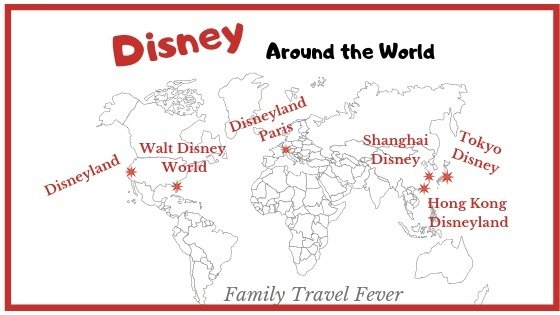
Disney Resorts and Theme Parks Around the World
Did you know that Disney has 6 Disney resorts and 12 theme parks around the world? The Disney resorts are Disneyland Resort, Walt Disney World, Disneyland Paris, Tokyo Disney Resort, Hong Kong Disneyland, and Shanghai Disney.

Do RV Outlets Work On Battery?
RV electrical systems can be somewhat of a mystery. All you want to know is if the outlets will work on battery. We have the answer and a good electrical tutorial here.
Leave a Reply Cancel reply
Your email address will not be published. Required fields are marked *
This site uses Akismet to reduce spam. Learn how your comment data is processed .

Is There a Camper Length Limit in National Parks to Follow?
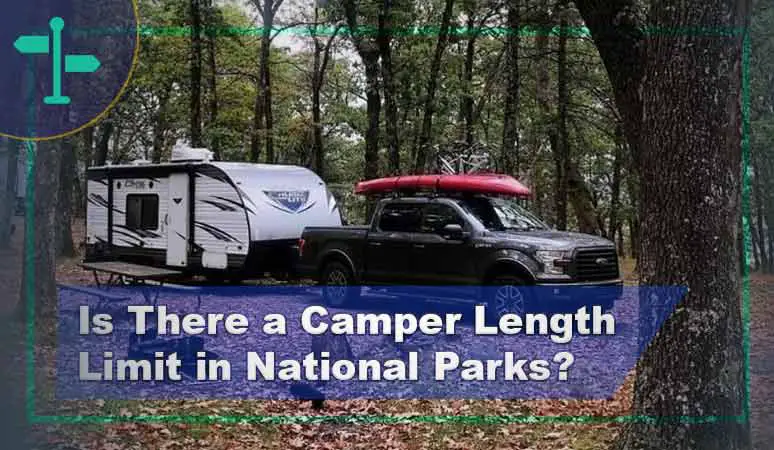
Movies that show family road trips in their campers and RVs usually make people nostalgic with the whole experience portrayed in such a beautiful way. Well, that does not have to be a movie scene when you are someone who love taking your camper or rented RVs to enjoy family together time somewhere far from home.
And it does not even have to be super far if there are national parks that allow such vehicles for camping. Some people love the fact that there are national parks that allow free camping. By the way, if you’re wondering can you camp in the national park for free , then go ahead and find more about it.
While today we are actually focusing on something else, and that’s the whole camper length limit matter. If you are wondering is there a camper length limit in national parks and it’s making you think twice before finalizing a trip, then get your confusions sorted by sticking till the very end today.
Table of Contents
Is There a Camper Length Limit in National Parks? – The Answer.
Yes, in most cases, there’s a length limit that you must follow for camping inside national parks with the camper. Let’s find out in detail about the entire thing.
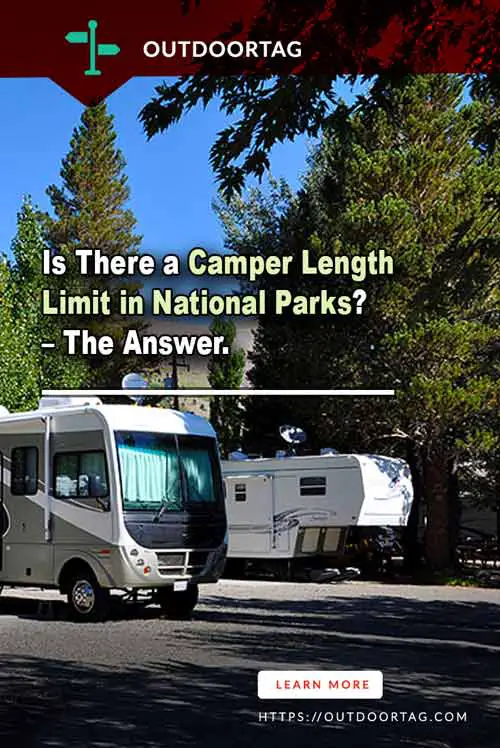
The Maximum Lengths for Campers or Trailers in National Park
Depending on which park you are talking about, the maximum trailer length ruling can actually vary a little bit. However, if we consider the very general or average figure, then it’s somewhere close to 27 feet basically.
But then again, there are also parks that are capable of accommodating the 40 feet long ones too. In such a case, you can go ahead with your huge camper without any problem.
There are also certain parks that come with dump stations. You can even find electrical hookups sometimes. The best way to find out about these thing’s existence is by directly checking with your preferrable park. Also, you’ll be able to grab some information on the specified maximum length matter along with available facilities details.
About RV Length Restrictions.
Because of a benefit that allows you to go literally anywhere and at any time, RV can be the best thing to own when it comes to ensuring no compromise with comfort as well as space. But if you are planning to take it to the national or even the state parks, length limit can make things a bit difficult.
The RV length restrictions by state can vary and you need to specifically find out about it going through the rules and regulations. Then again, there are parks that don’t even mind the RV size limits and simply grant you access. Just like I said earlier, things can be different from park to park.
The average length allowed for RV is 30 ft maximum. There are a few national parks that allow 40-ft RVs as well. Very rare of them will go up to 50-60 feet. However, to make things safe, consider the maximum length to be not more than 30 feet with an RV.
So, you can already guess that the point of “bigger is better” does not apply to folks who do consider taking their RV to national parks every now and then.
A Much-Needed List Of National Park RV Length Restrictions – Get Some Help.
How about we actually take the examples of a few really popular national park choices that folks love to take their RV to and enjoy free time with. This should also help you have that general idea I’m trying to provide.
Let’s go through some of the national parks to know about their size limit on campers or RVs.
One of the hottest destinations that massive RV owners love is Glacier national park. There are fabulous campsites to enjoy here and you’d love to bring your RV in one of them. You just have to make sure your RV is not crossing 35 feet length limit. Yes, that’s the maximum length restriction that Glacier National Park allows. Also, keep in mind, there are around 7 out of 13 campsites that allow RV.
Then we have the Yosemite National Park, probably the most popular one out there. You have the flexibility to choose from 10 RV accepting campsites here. So, it’s a pretty amazing spot to choose. The maximum RV and trailer length with this park is also pretty wide-ranging.
Yes, here you’ll find differences in sizes for RV and trailer. The Yosemite Valley will let you in with your RV if it’s not more than 40 feet long. And if you are bringing a trailer, then it should not cross 35 feet size limit. There are other campsites as well where the max trailer length for campgrounds can be less than 24 feet while for RV it is 35 feet.
The next one is Yellowstone, the US’s very first national park that has 12 campsites for you to choose from to bring RV on site. There’s one of them that even allows the huge RV. This National Park trailer length is 40 feet maximum, and this refers to combined length.
The RV length limit for another popular spot, Zion National Park is 19 feet. This is an example where the limit is pretty low and something that can help us with having a general idea.
Check Out The Camper Length Limit in National Parks.
Still asking is there a camper length limit in national parks? Hopefully not. This was my attempt to give you a general outline basically. However, if you want more specific information, let’s say park or even state-wise, just reach out to the relevant authorities. Because you know, the California RV length restrictions could vary from certain another place. And so, best way to confirm things before you actually head out for the park with your camper is directly contacting them.
Hopefully, You’ll Have a Wonderful Time Camping in Your Preferred National Park Without Any Problem.
Leave a Comment Cancel reply
Save my name, email, and website in this browser for the next time I comment.

COMMENTS
Joshua Tree National Park. 35 feet for most campgrounds. Some campsites accommodate up to 42 feet. Here's what you need to know about RV camping in Joshua Tree National Park . Kings Canyon National Park. Varies by the campground. The maximum length for many roads is 22 feet. Lassen Volcanic National Park. 35 - 40 feet.
While the general average length of RVs allowed in most National Parks is between 25 and 30 feet, the overall average maximum length according to the U.S. National Parks Travel Guide is 27 feet. However, there are a lot of National Park campgrounds that can comfortably accommodate longer RVs - even ones that are more than 40 feet long.
The average car, truck, and SUV measures between 14-17 feet. This means that the size trailer you need for national parks must be 16 feet or less from hitch to bumper. Small travel trailers, pop-ups, and teardrops are your best bet. The majority of sites are primitive sites (no hookups).
Almost all of US national parks RV size limits will allow a 12-foot, a 9-foot, and even a 25-foot RV on site. However, as the size of your camper increases, the chances of you getting onto a National Park camping grounds diminish. Campground RV Age Limit. The US national parks RV restrictions sometimes also include age restrictions.
Gold Bluffs — Trailers: prohibited / Motorhomes: 24 feet. Sequoia National Park. Lodgepole Campground — 42 feet. Dorst Creek Campground — No limit. Very large sites. Potwisha Campground — 24 feet. Yosemite National Park. Lower Pines Campground — Trailers: 35 feet / Motorhomes: 40 feet.
The rest fall somewhere in between with Abrams Creek only allowing RVs measuring 12′ long and Smokemont allowing RVs as long as 40′ long. Here is a list of RV lengths allowed by each national park in each state: State. National Park. Acceptable RV Lengths. Alaska. Denali National Park. 40 Feet - Vehicle plus RV.
The average size of RV sites is 27 feet nationwide. Therefore t he optimal length for an RV in the National Parks is 25 to 30 feet. Most National Park campgrounds will have spaces that will fit this length. Sites vary park by park and campground by campground, so always check directly with the park office prior to booking a site.
RVs up to 19′ in length fit in 98% of all national park service campgrounds. RVs up to 25′ in length fit in 93% of all national park campgrounds. RVs up to 29′ in length fit in 84% of all national park campgrounds. RVs up to 32′ in length fit in 81% of all national park campgrounds. RVs up to 35′ in length fit in 73% of all national ...
No RV or Trailer Camping Available In The Park 35' Combined, 12,000lb restriction in some areas 60' Combined Not RV Accessible Unrestricted (Call for specifics in Texas Springs) 40' Combined 35' Combined ... National Park Trailer Length Chart.cdr Author: Rich Zinzer Created Date:
All National Park campsites have rules and regulations in place about the size of RVs they allow. The safest length for an RV to be allowed into the majority of these campsites is 35 feet or less, as anything larger than this will start to restrict where you can park. While most people find their RVs fit comfortably in these guidelines, those ...
With this length, you can visit up to 73% of the United States National Parks. Nevertheless, 25 to 27 feet or under is the best RV length. With this size, you'll explore upwards of 93% of the national parks. We love visiting the national parks in our 26-foot truck camper. It's easily maneuverable through small campsites and winding roads.
While the restrictions vary from park to park, the average maximum length permitted is 27 feet with about half having at least one campground allowing RVs up to 40ft. In general, RVs between 25 and 30 feet are recommended to maximize your options as over 90% of parks permit 25 footers and 84% permit 29 footers.
If your RV is less than 12 feet, you shouldn't have any problems with national park RV length restrictions at any of the campgrounds. However, there are a handful of parks that prohibit RVs of any size. Approximately 98% of national park campgrounds can accommodate RVs up to 19 feet long. You still have a good selection if your RV is smaller ...
If you're in the Loop B part of Black Canyon of the Gunnison National Park, the standard allowable RV length is 30 feet, but some sites allow for motorhomes or travel trailers + towing vehicles with lengths up to 55 feet. Canyonlands National Park. Utah's Canyonlands National Park includes mesas, buttes, and canyons as far as the eye can see.
8. Always Reserve Well Ahead. The popularity of RV travel to National Parks has its downside: the difficulty of actually securing a spot to RV camp within the parks themselves. Most parks have "first come, first served" RV campsites, but many fill by noon on popular weekends and holidays.
If you're planning a trip to a national park and bringing your RV, it's important to know the length restrictions for the campgrounds. Here are some popular national parks and their RV length limits: National Park. RV Length Limit. Olympic National Park. 24-28 feet, depending on the campground. Redwood National Park.
Check out the maximum RV lengths permitted at some of America's other most well-known national parks: Denali National Park (AK): 40 feet. Everglades National Park (FL): 45 feet. Great Smoky Mountains National Park (TN): 40 feet for RVs, 35 feet for trailers. Mount Rainier National Park (WA): 35 feet for RVs, 27 feet for trailers.
A case study shows that the optimal RV length for camping in national parks is 35′ or less. With this size, you can always find a spot to handle your rig in most parks. ... 45 RV Accessory Must-Haves for Your Travel Trailer<< ... California the size at the various sites ranges from a maximum of 36 feet to a minimum of 24 feet.
SIZES OF YOSEMITE NATIONAL PARK CAMPSITES "The maximum RV length in Yosemite Valley is 40 feet, and the maximum trailer length is 35 feet; however, only 12 sites of this size are available" (six sites each in Lower Pines and North Pines, which are open spring through fall).
The Best RV length for Parks is between 25 and 30 feet long. 98% of all national parks excepts RVs 19 feet trailers and less. All campgrounds and parks excepts RVs 12 feet and smaller in the United States. We have compiled a full list of RV length and Park sizes. It doesn't matter if you have another type of RV such as a motorhome, fifth ...
Generally speaking, the ideal travel trailer length for a family of 4 is 25-30 feet long. With a 27-foot travel trailer, you can likely park in your driveway, camp at 93% of national parks, and still have room to sleep 4-6 people comfortably. Generally, for convenience, longer travel trailers are the best choices for a family with at least 4 ...
The average length allowed for RV is 30 ft maximum. There are a few national parks that allow 40-ft RVs as well. Very rare of them will go up to 50-60 feet. However, to make things safe, consider the maximum length to be not more than 30 feet with an RV. So, you can already guess that the point of "bigger is better" does not apply to folks ...
The length is consolidated, which means the number recorded for every public park RV size limit considers a vehicle in addition to the RV size. National Park Name. RV Length Max Limit. Acadia National Park. 35 feet. Arches National Park. 30 feet. Badlands National Park. 40 feet.